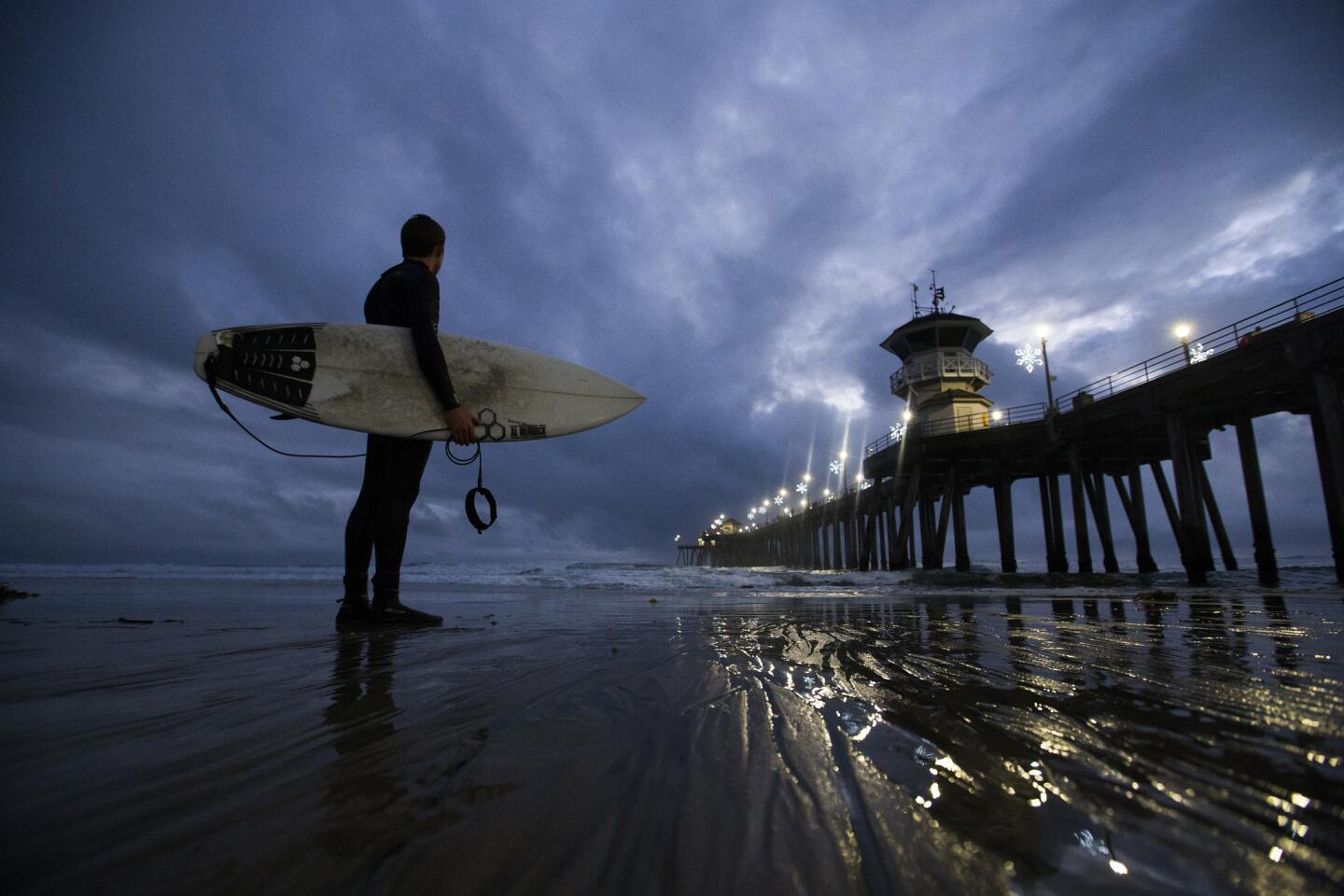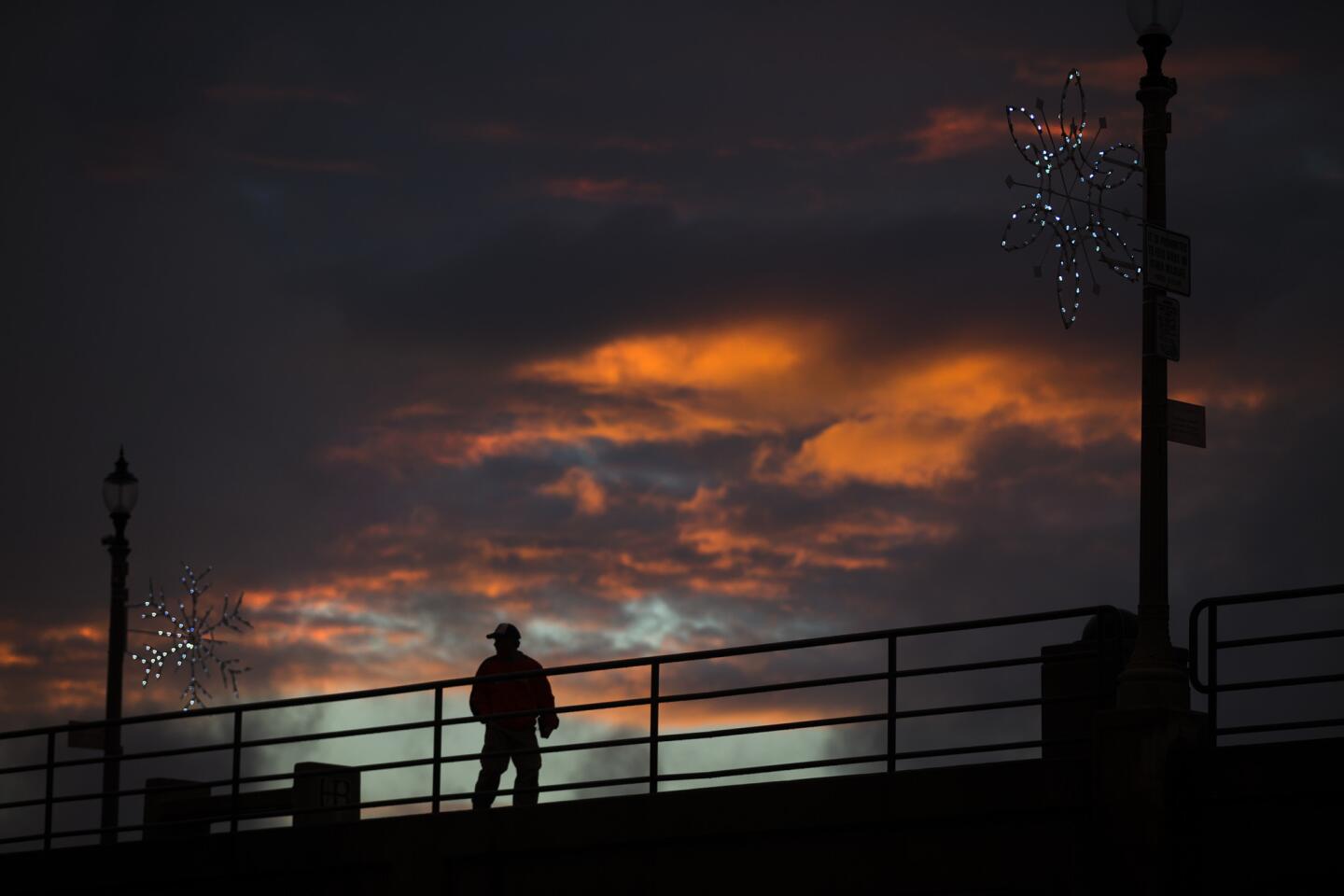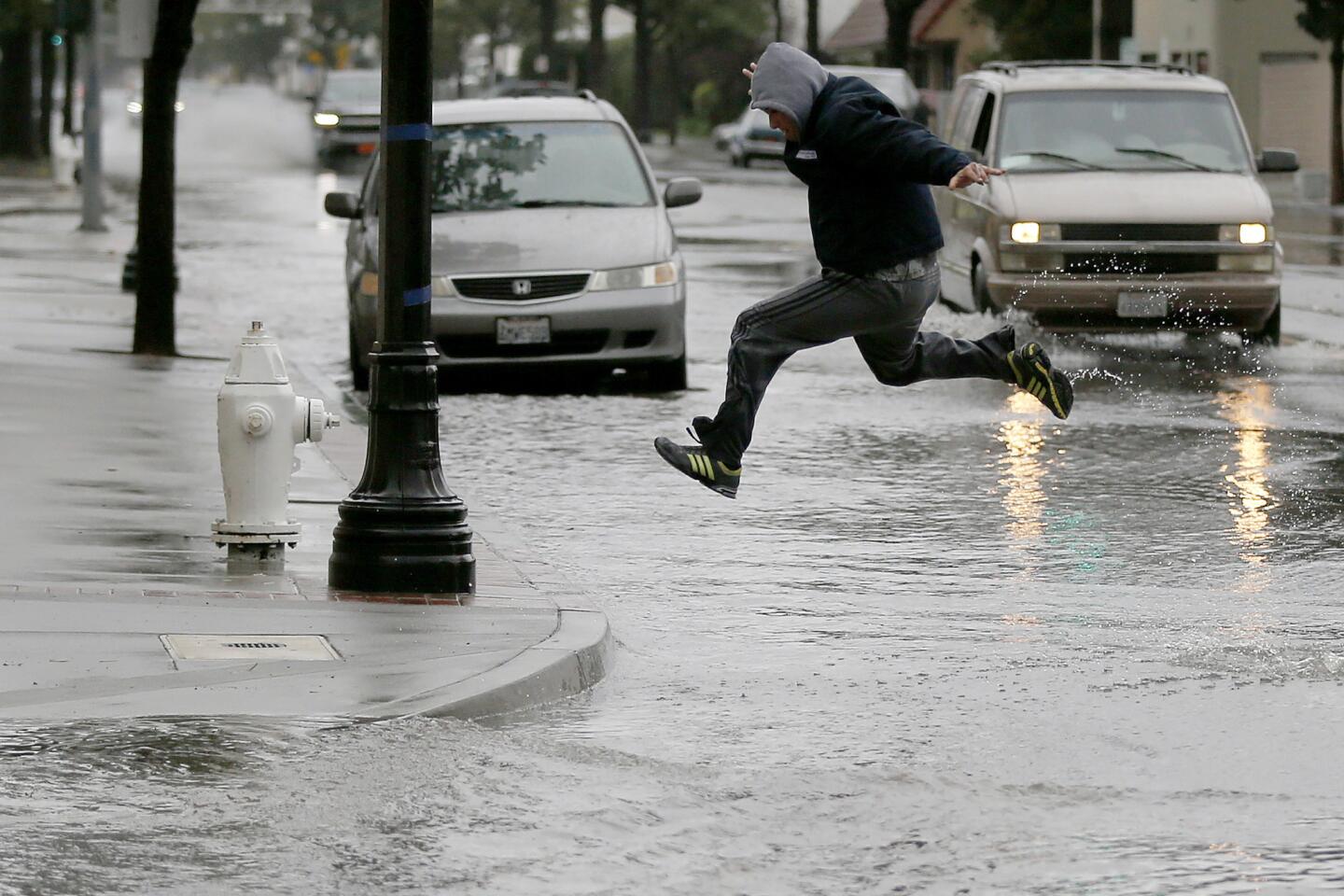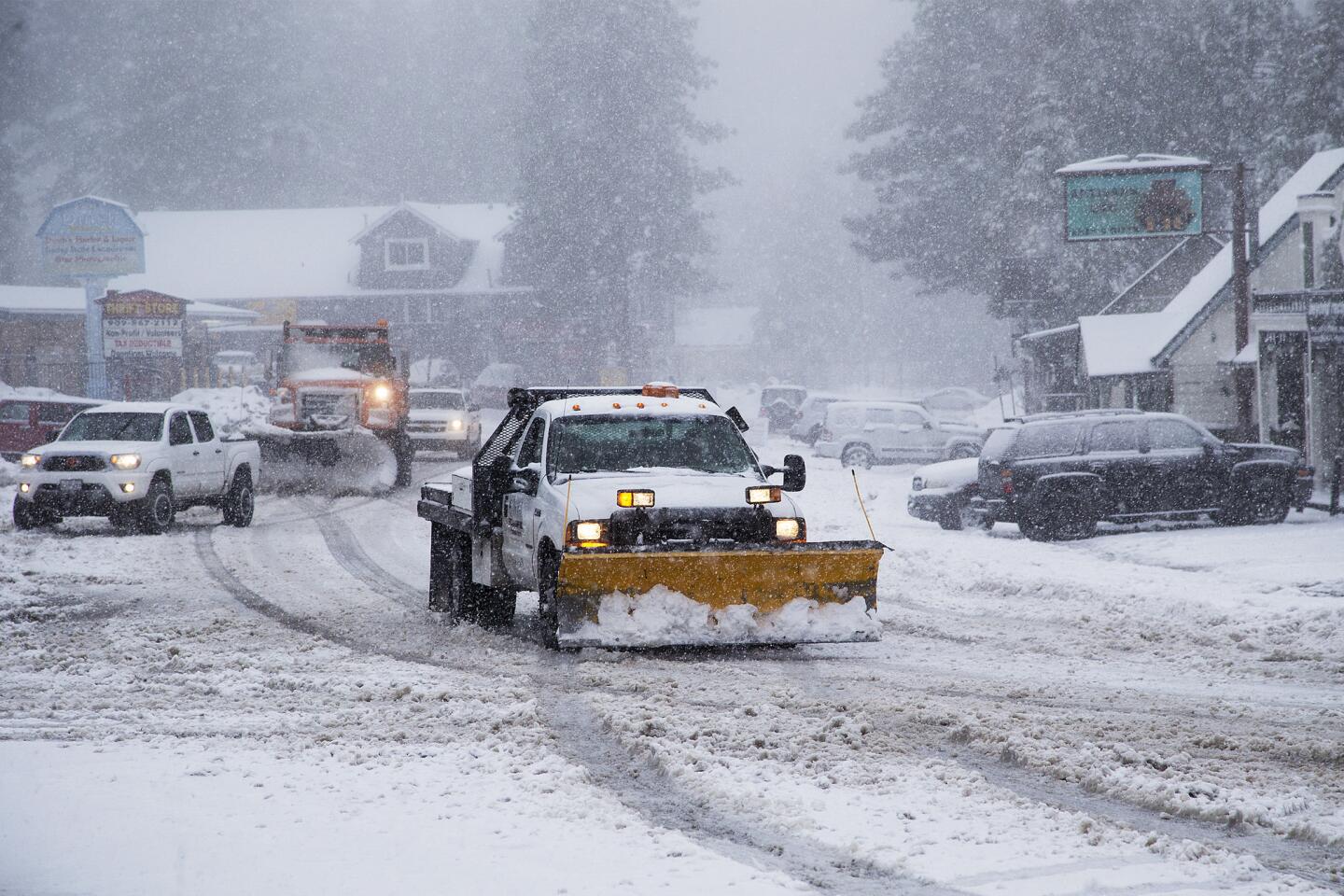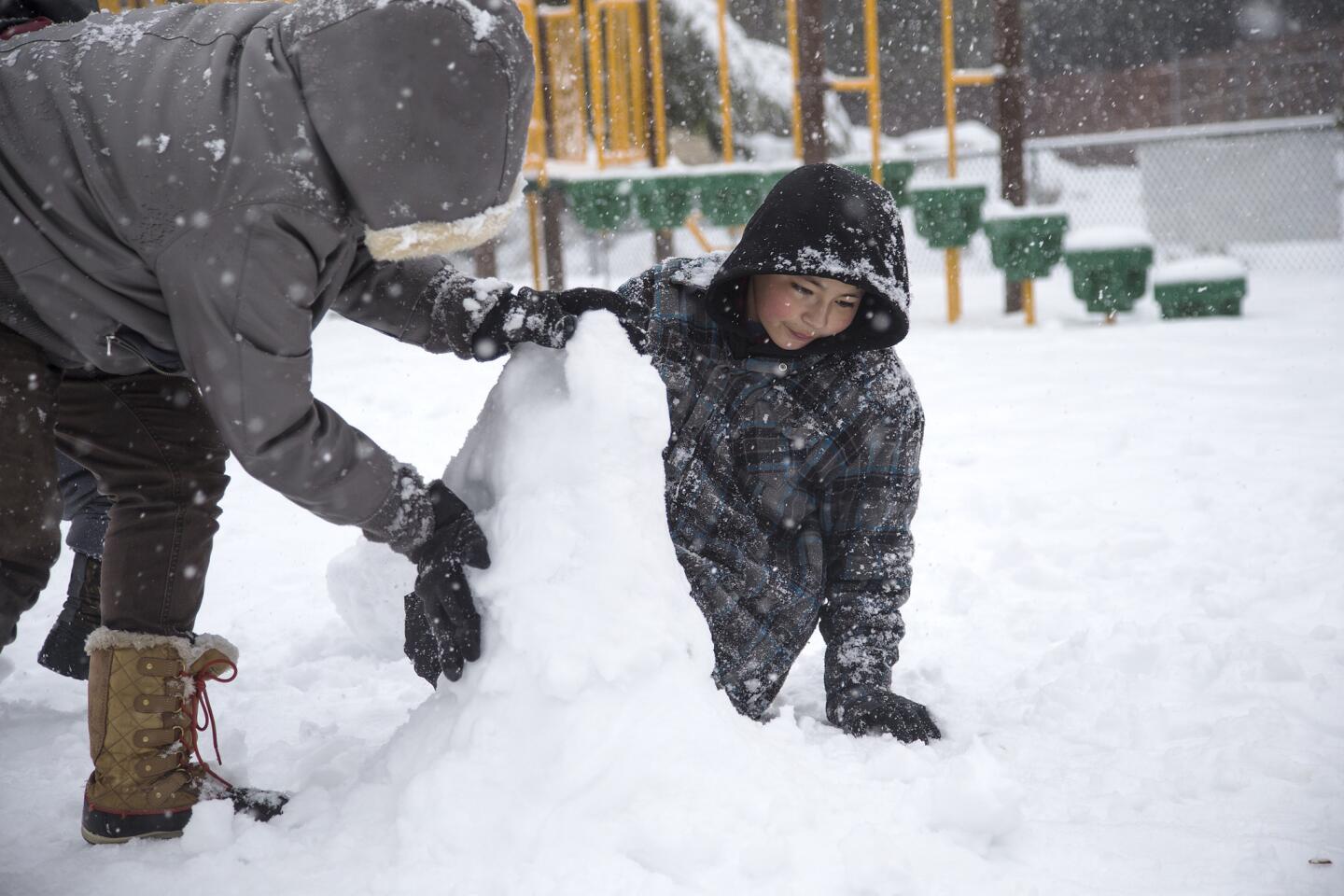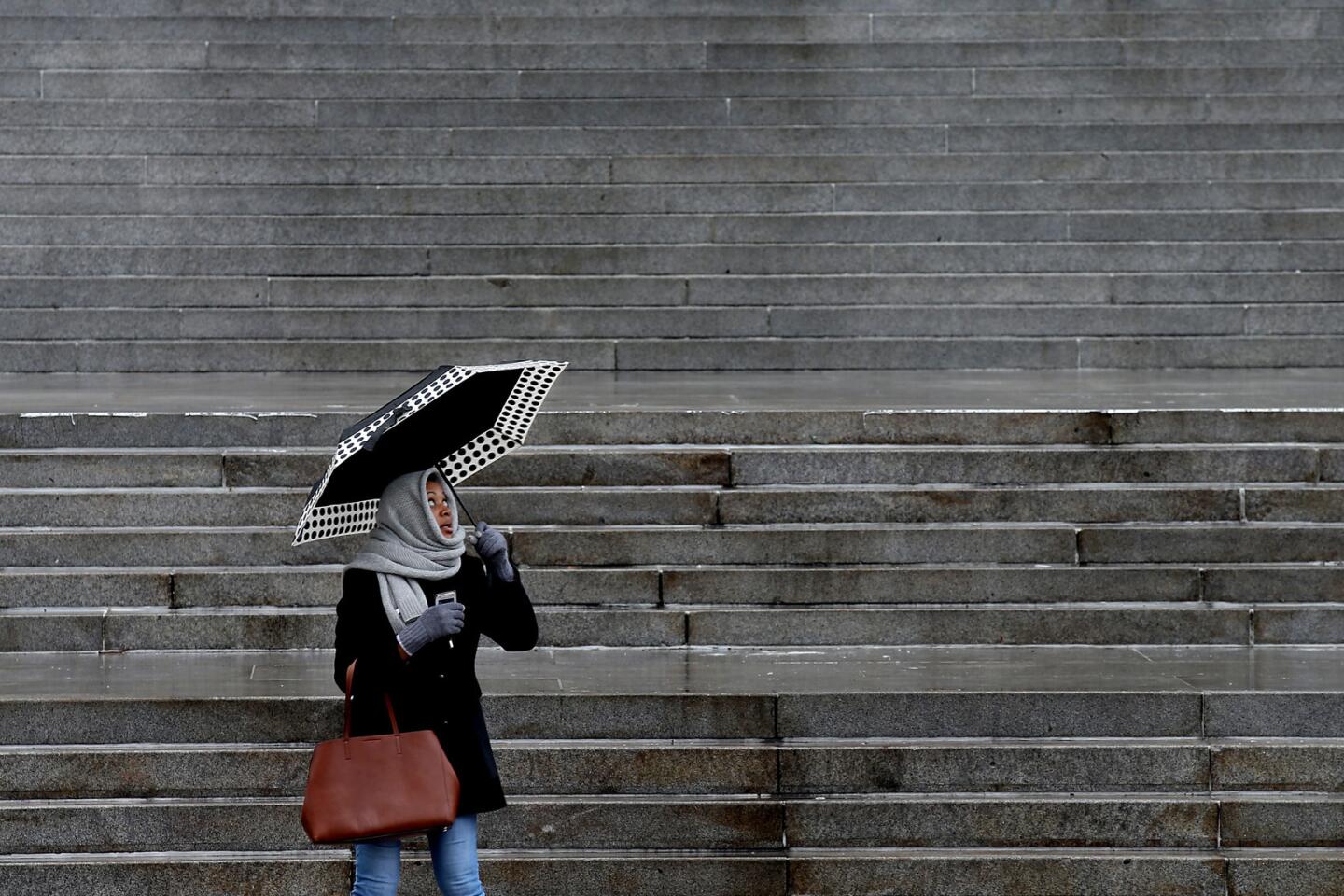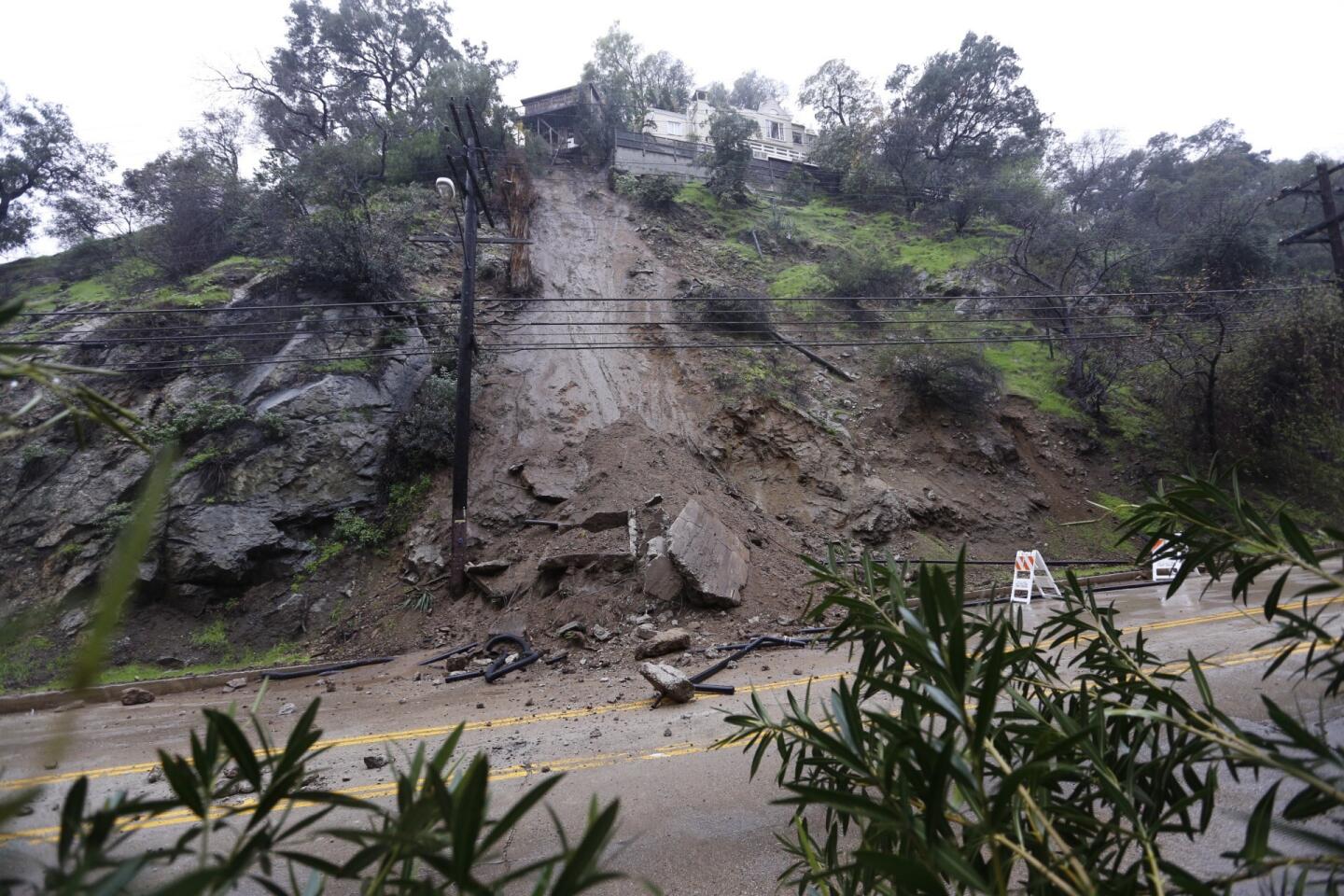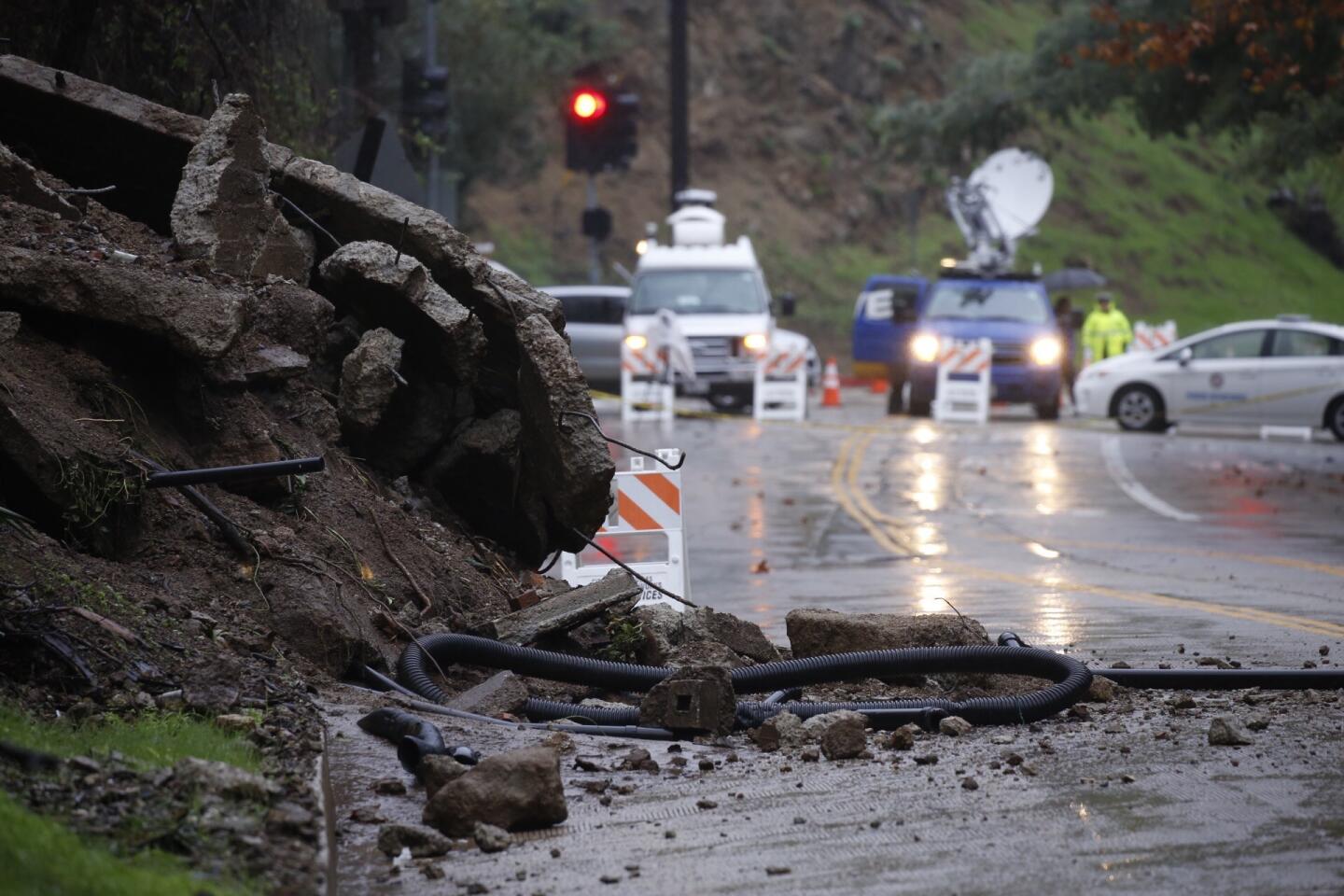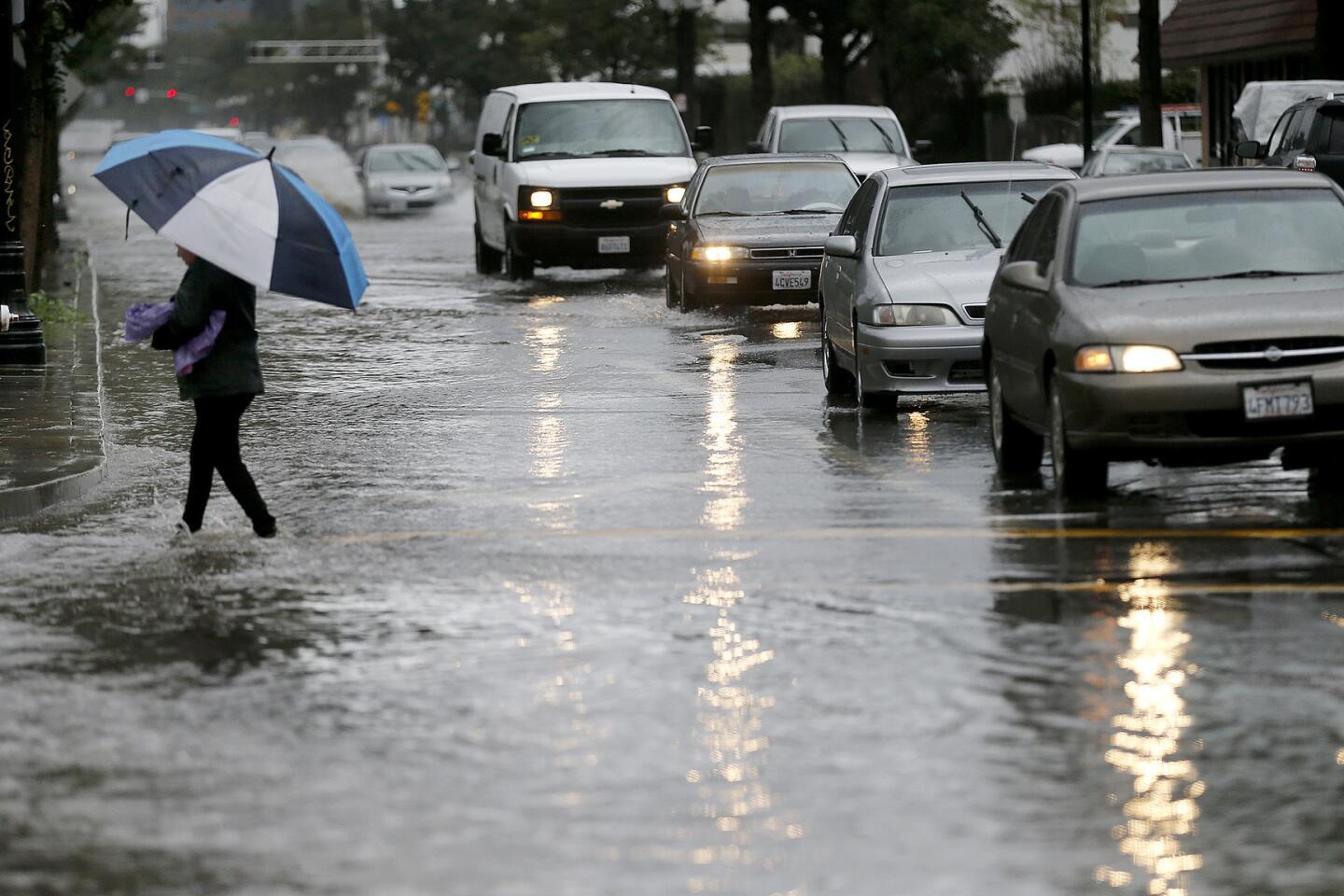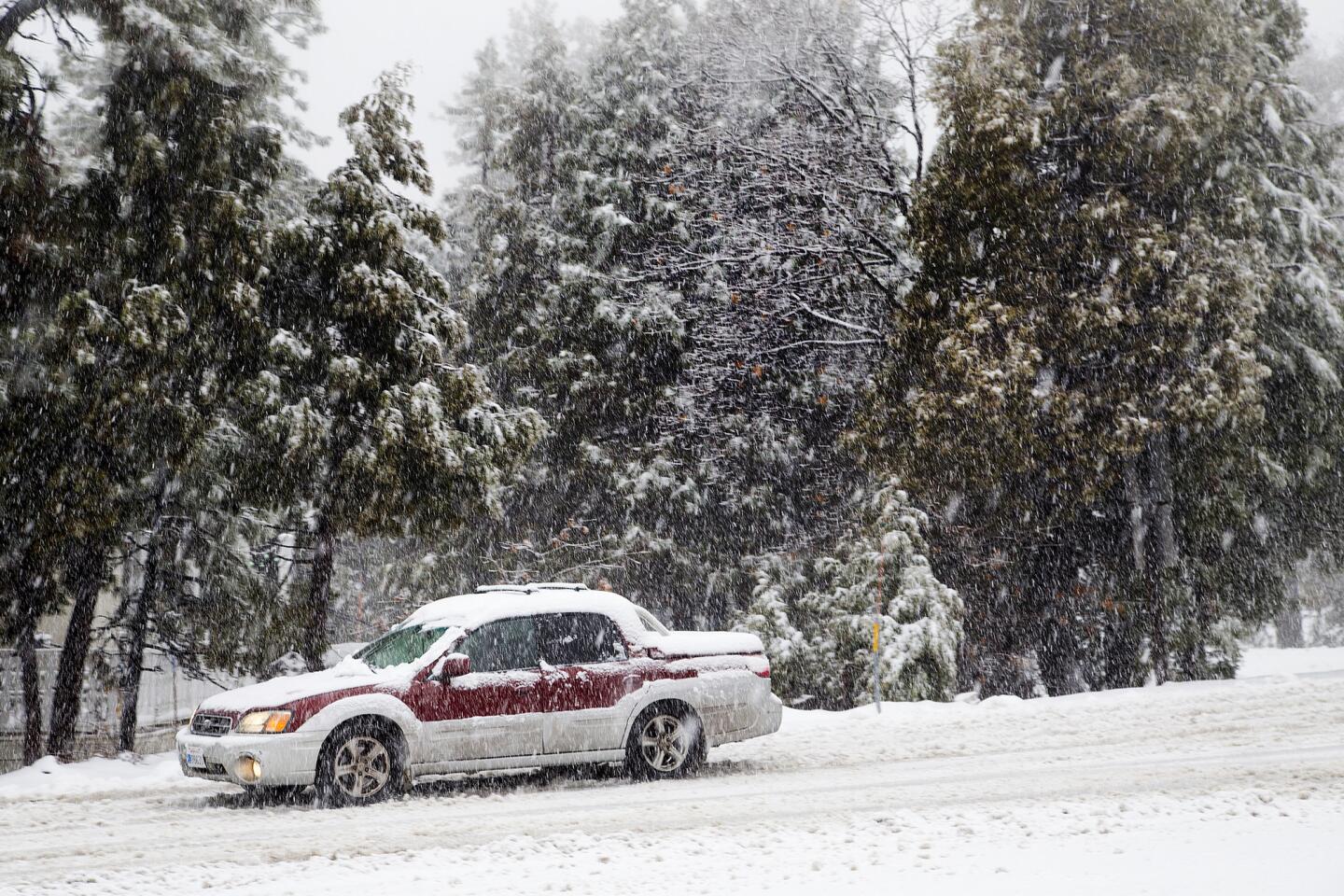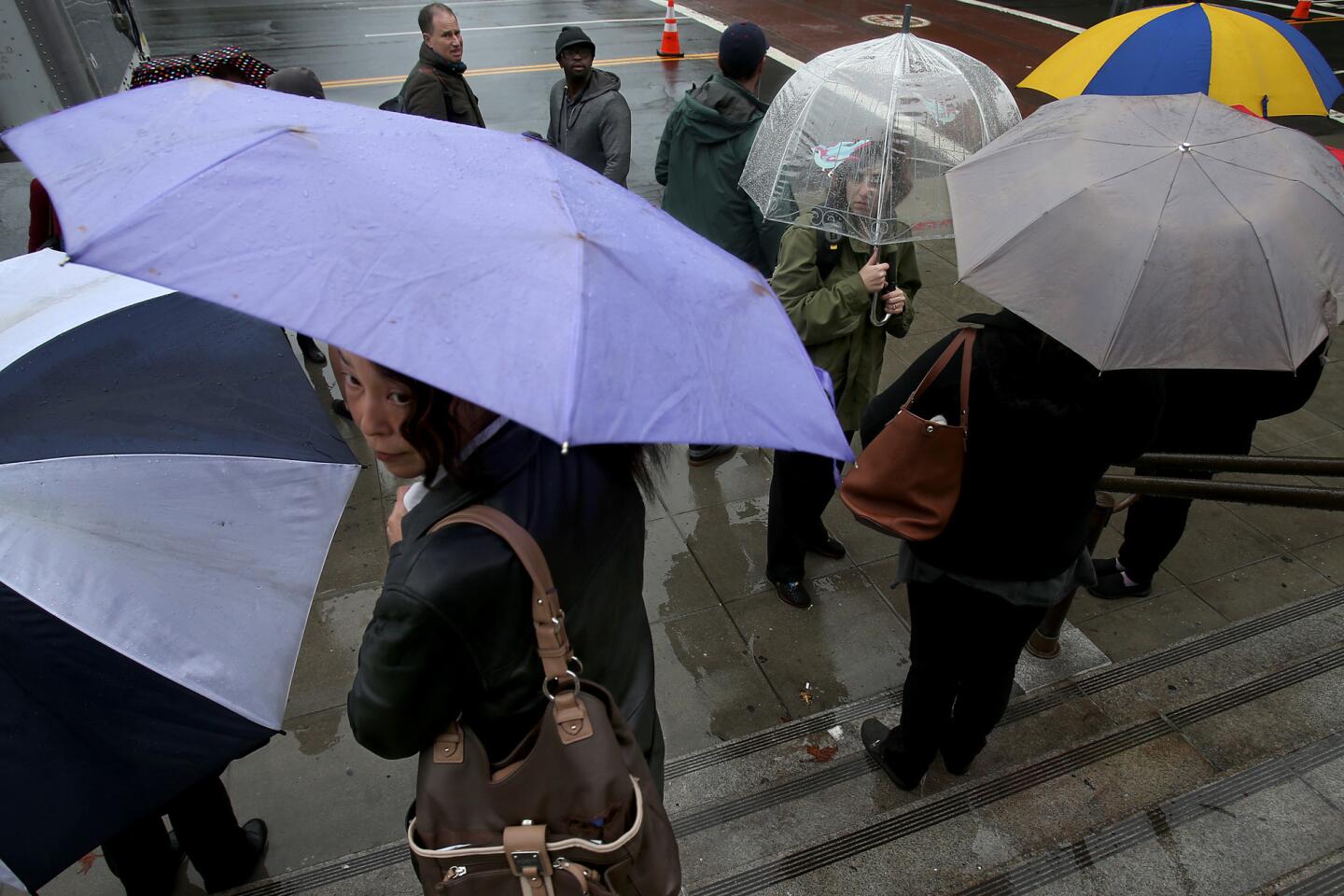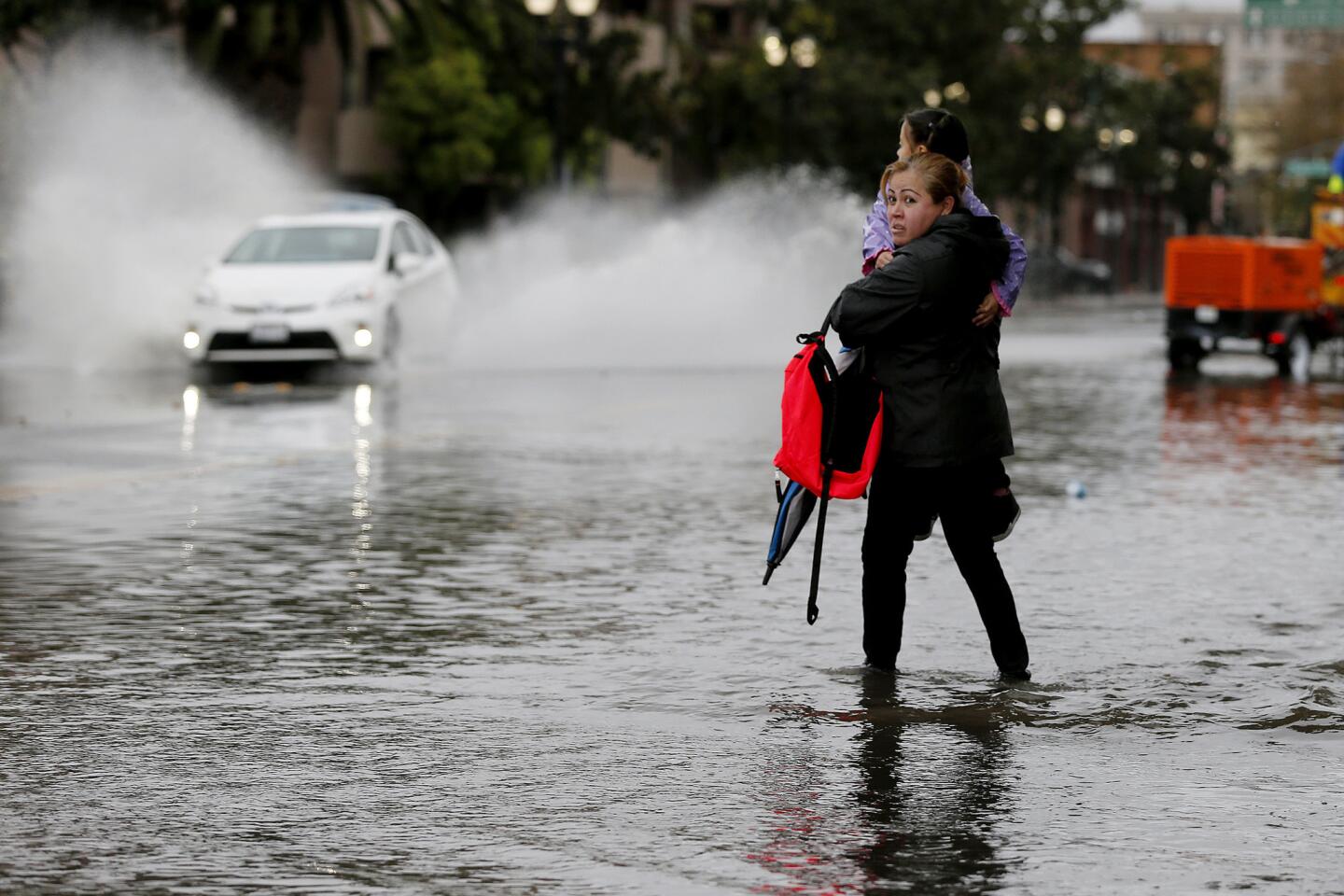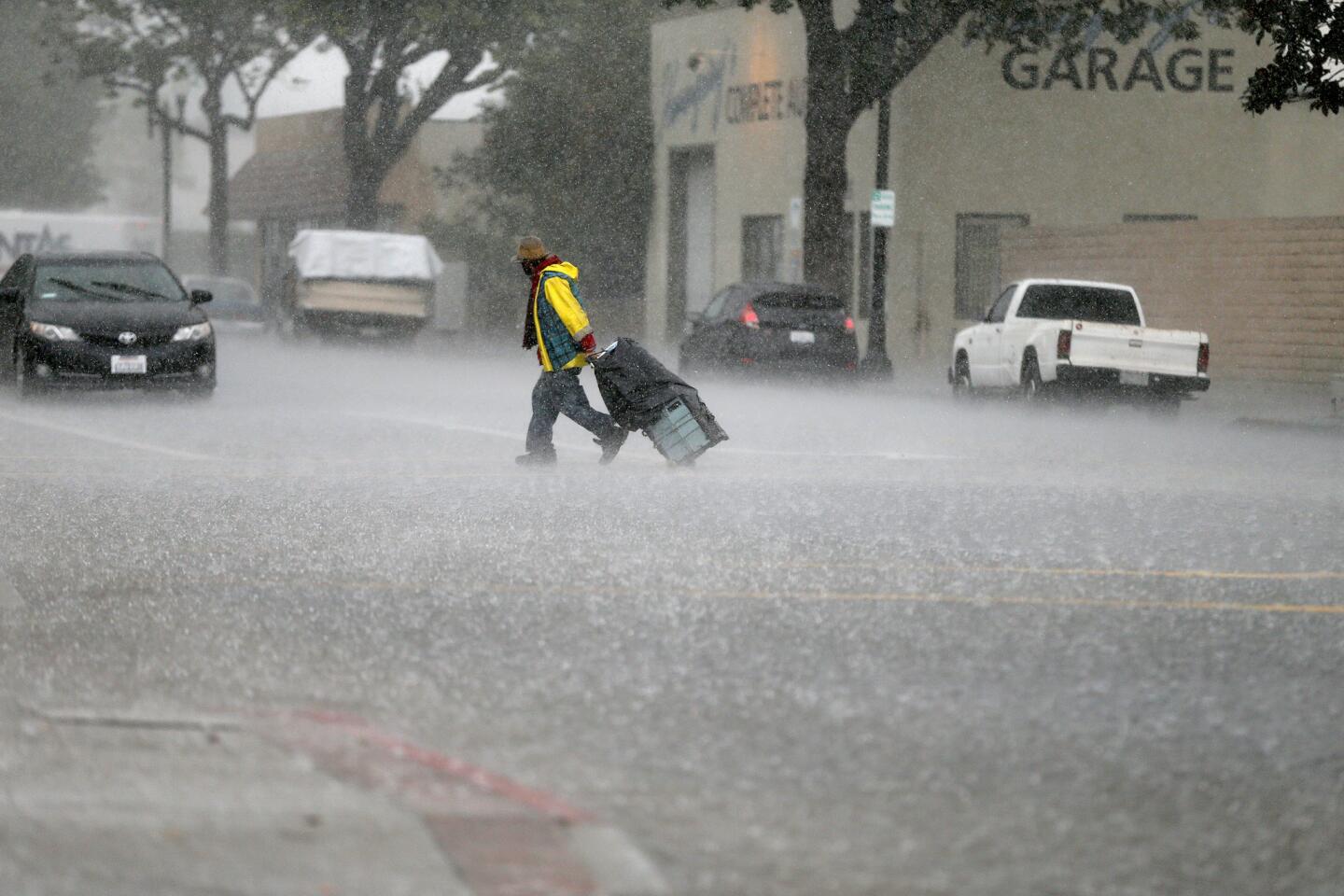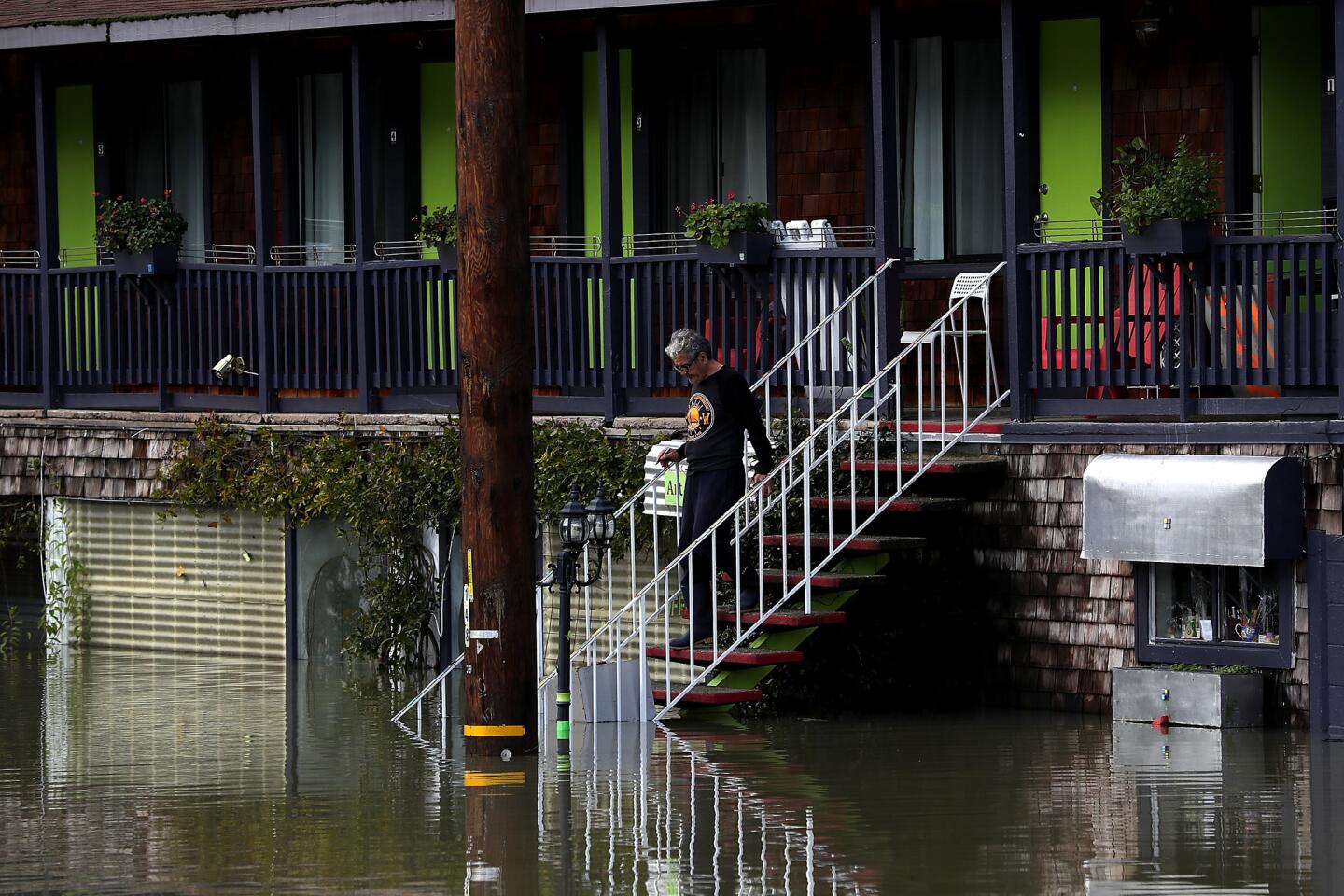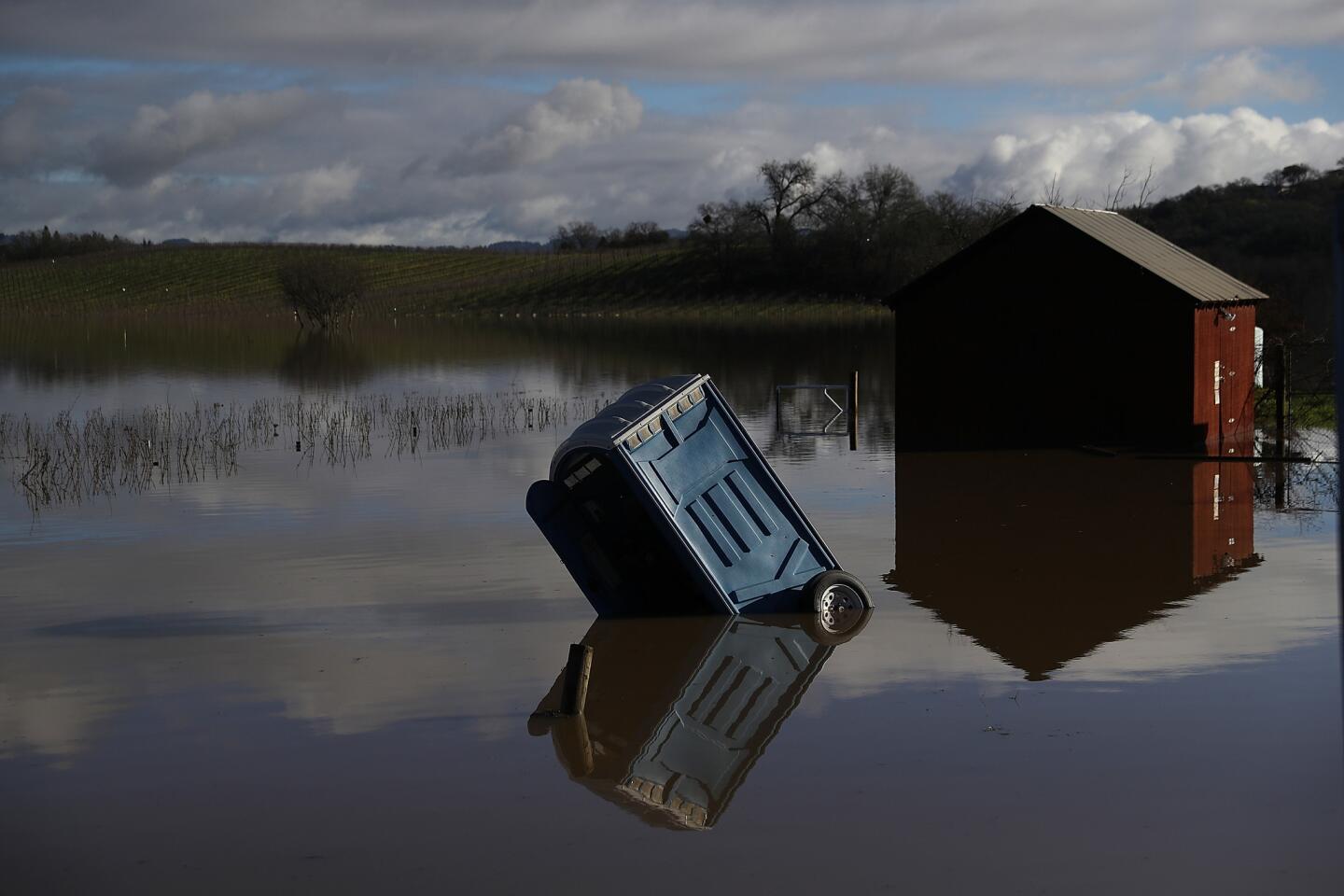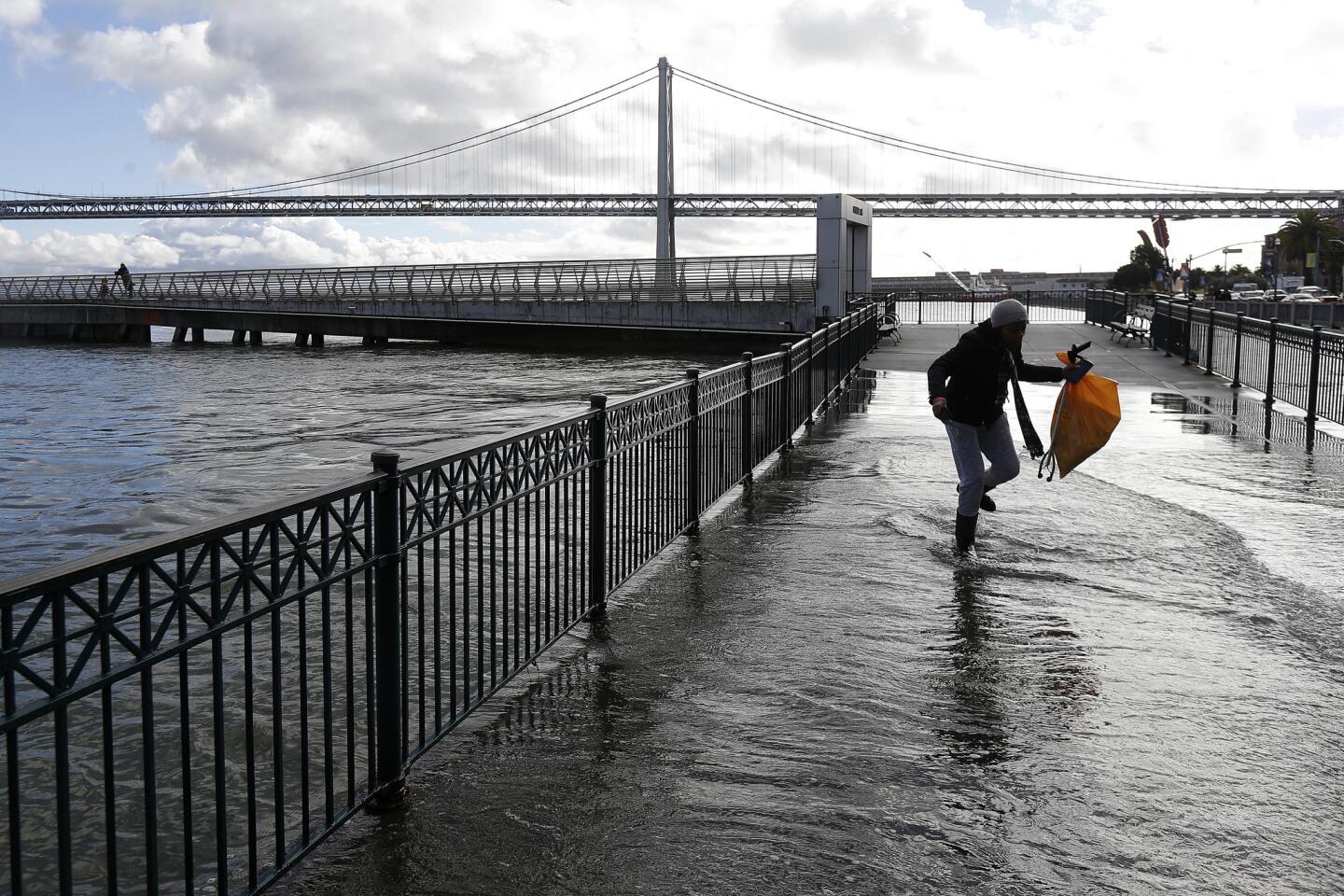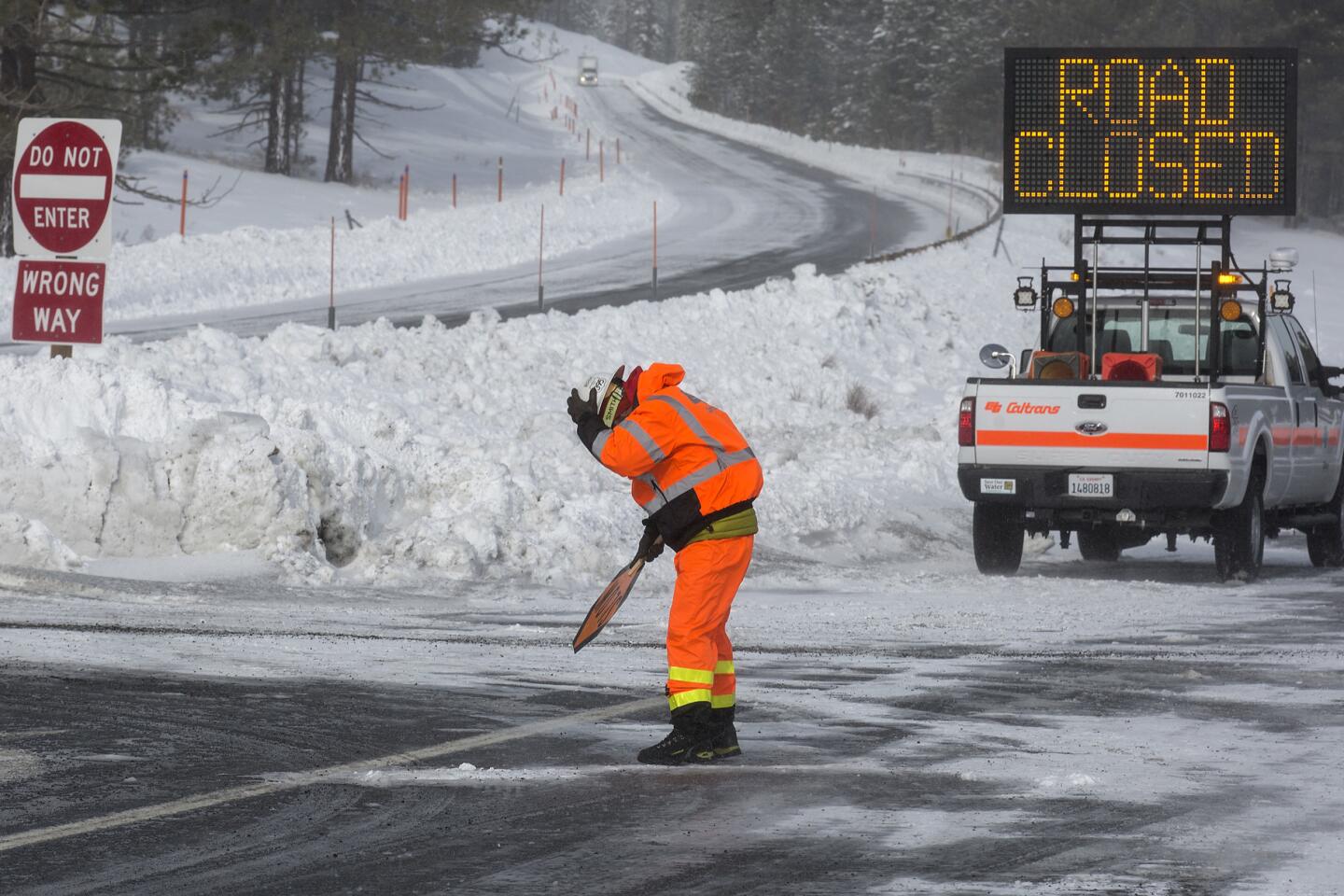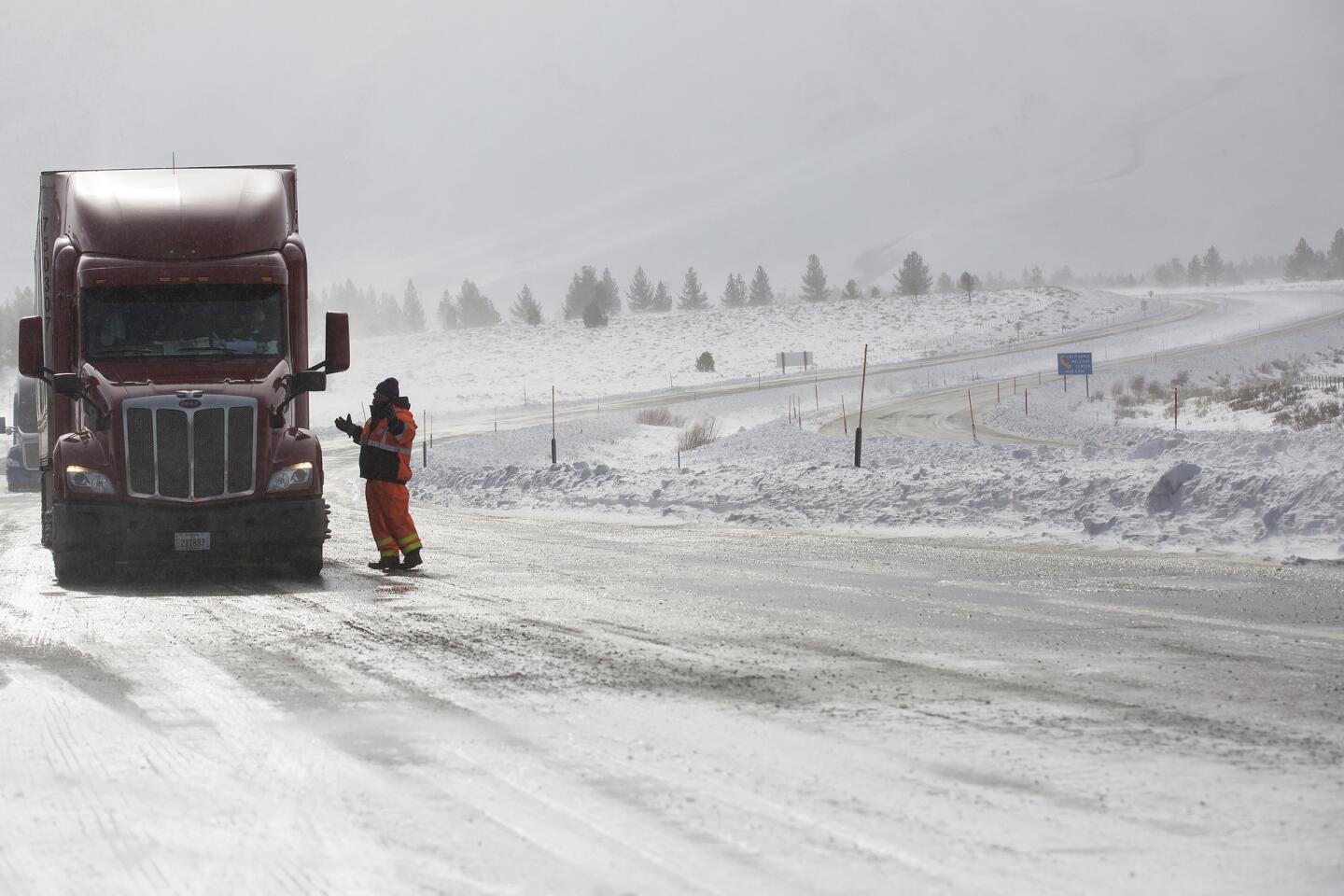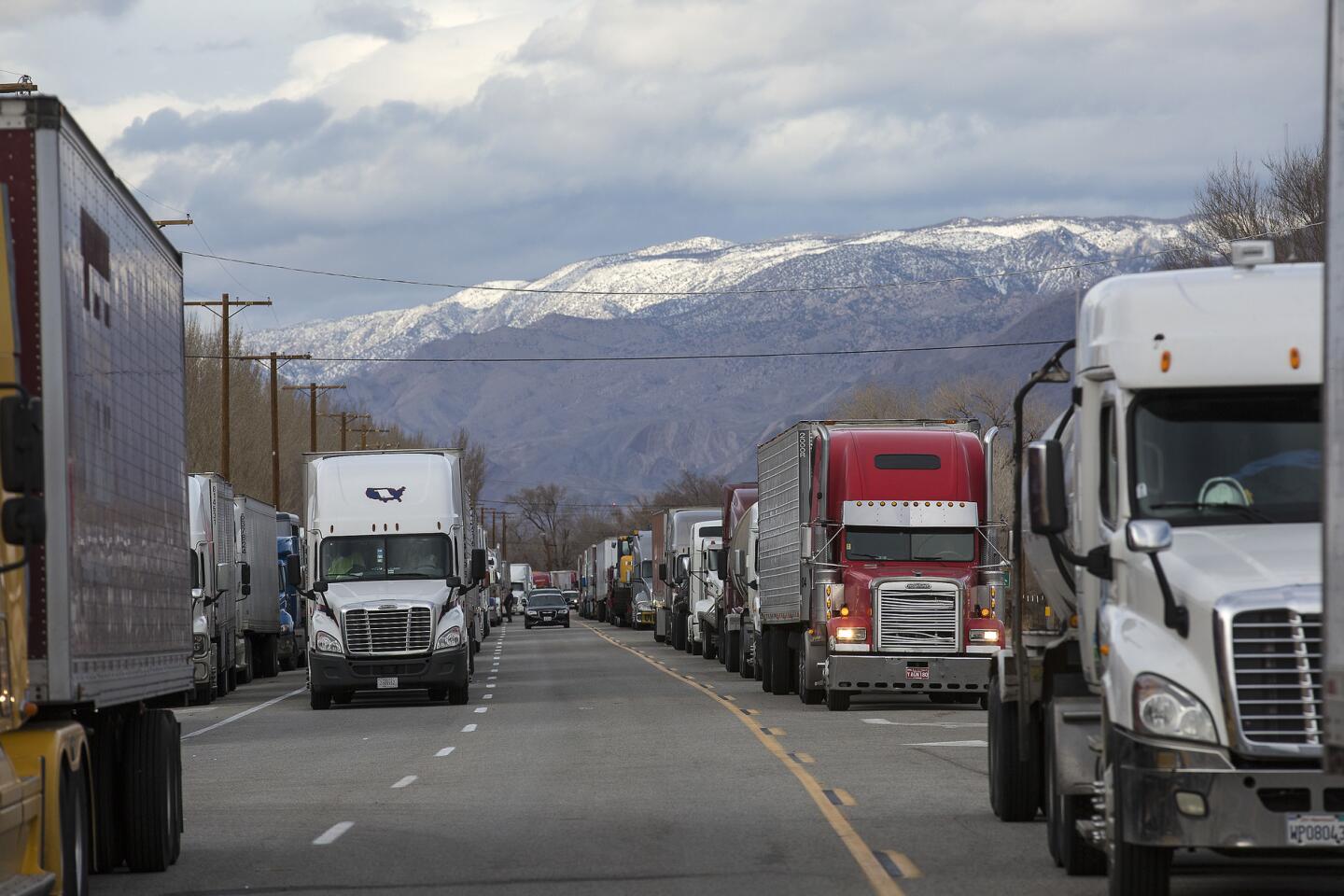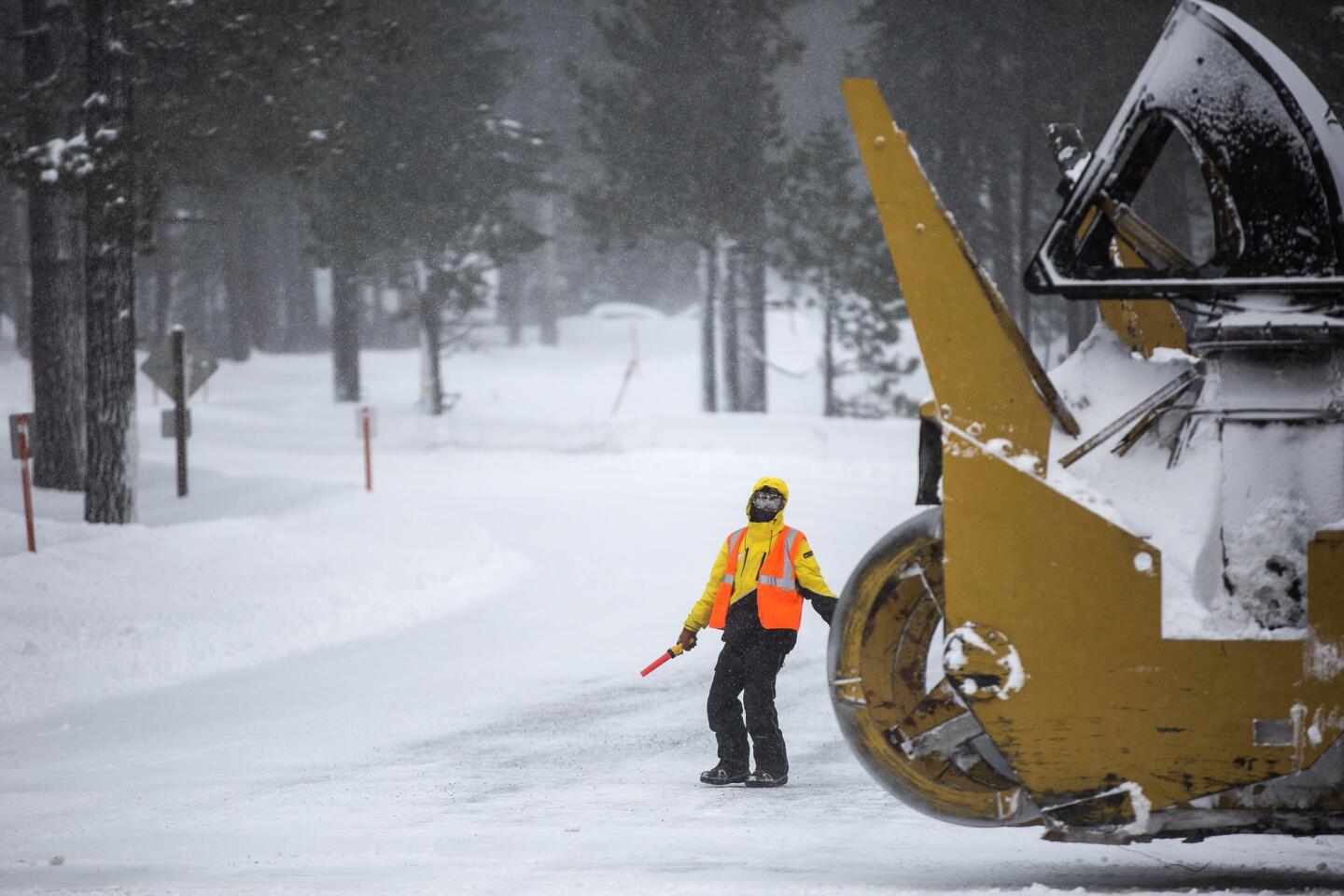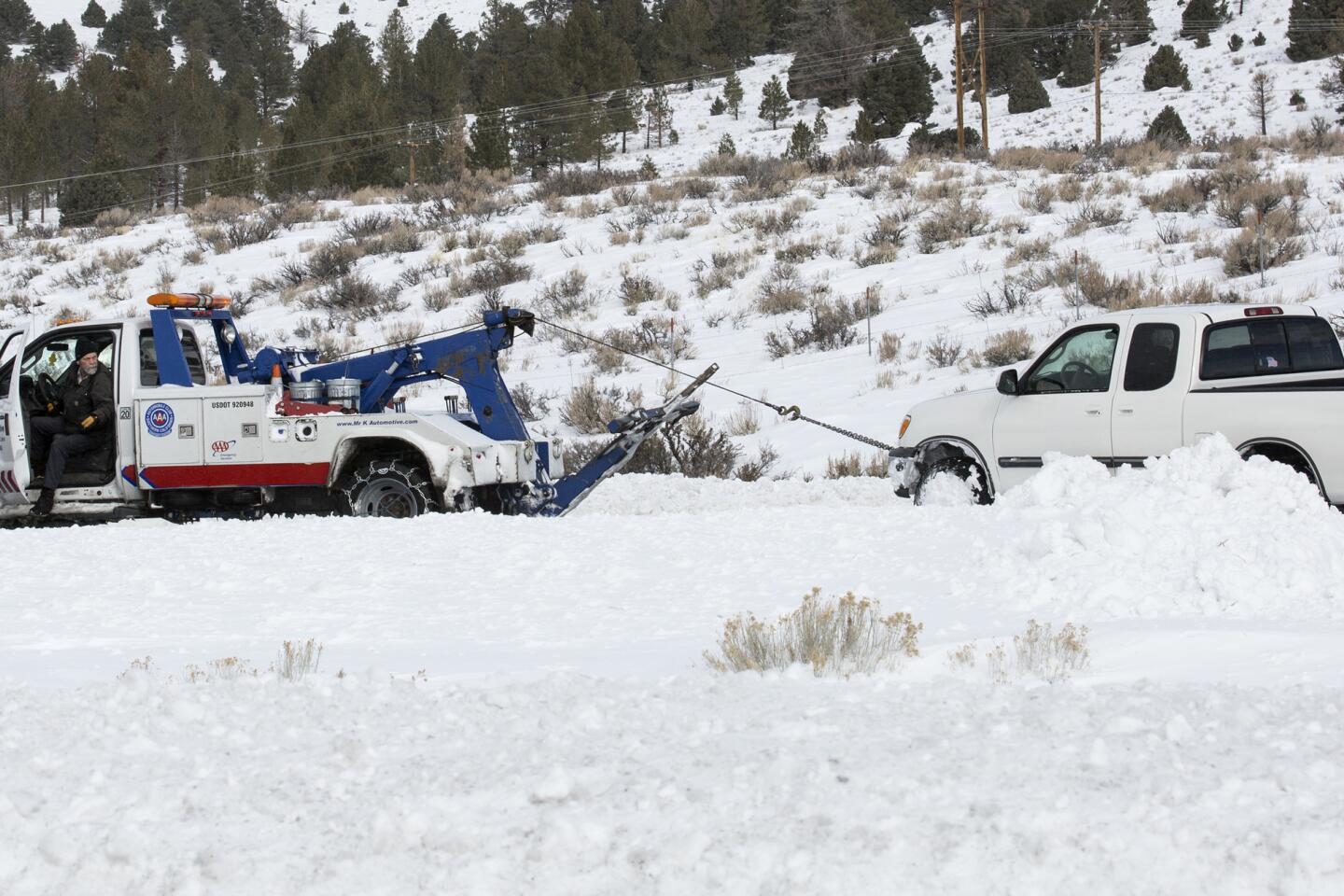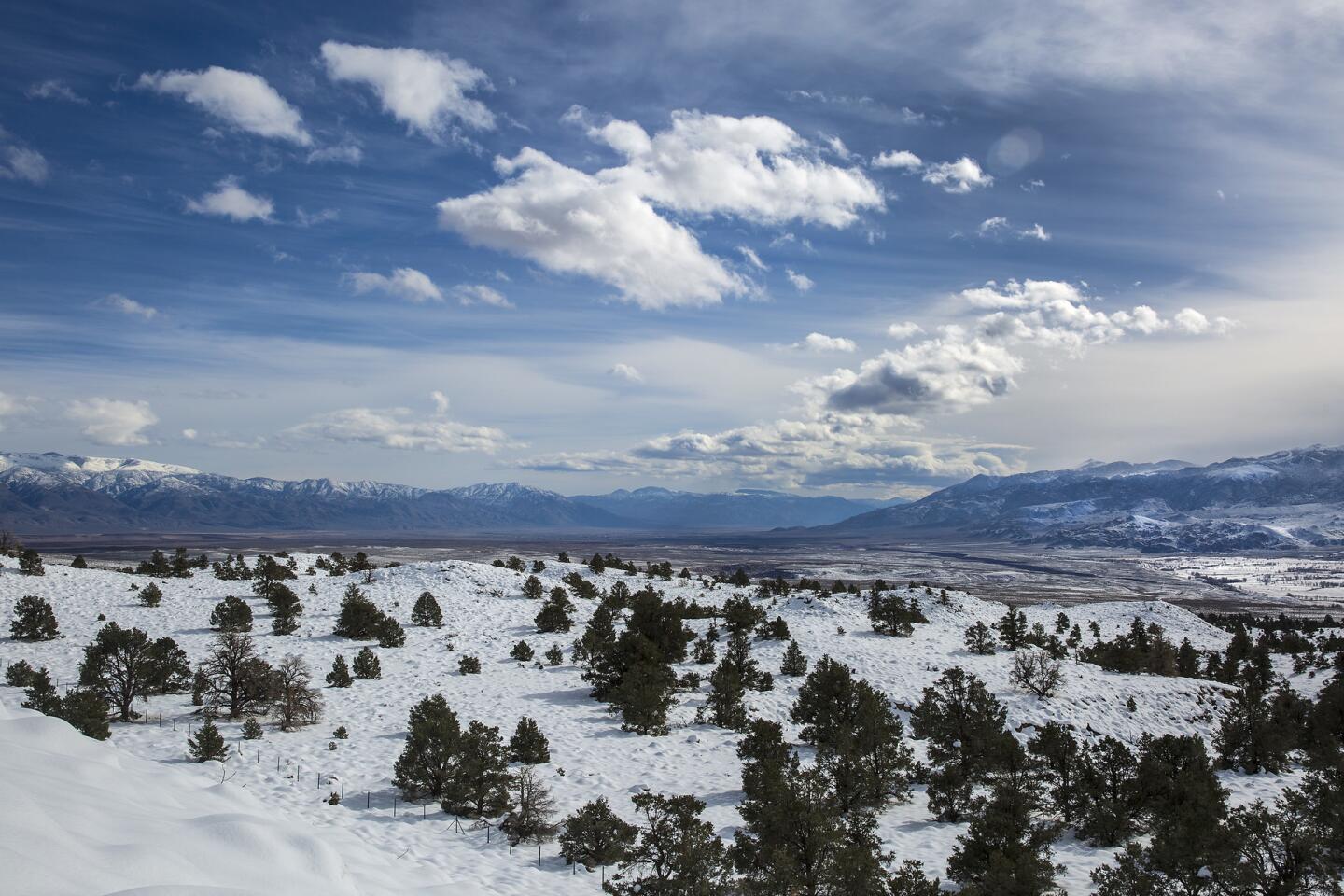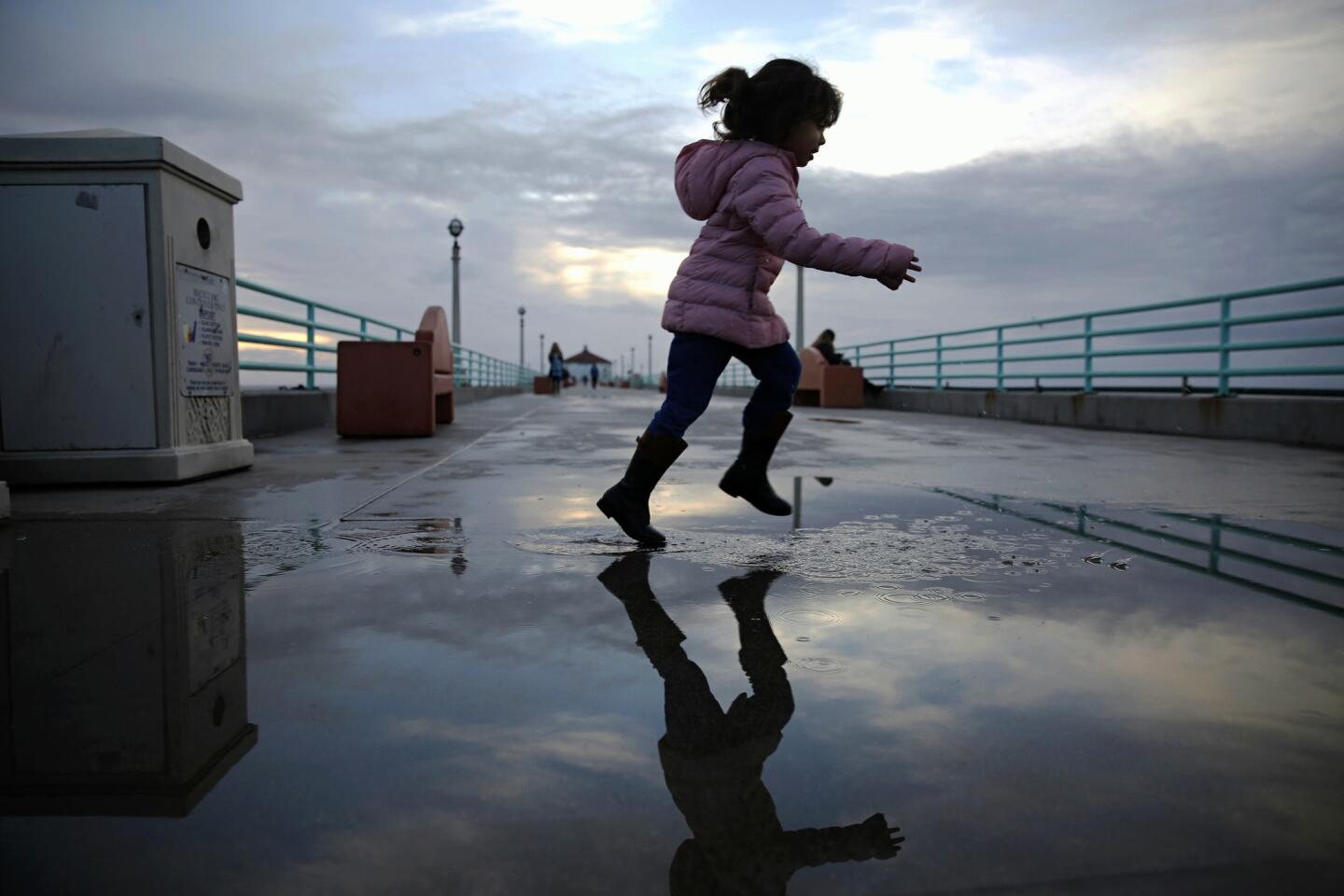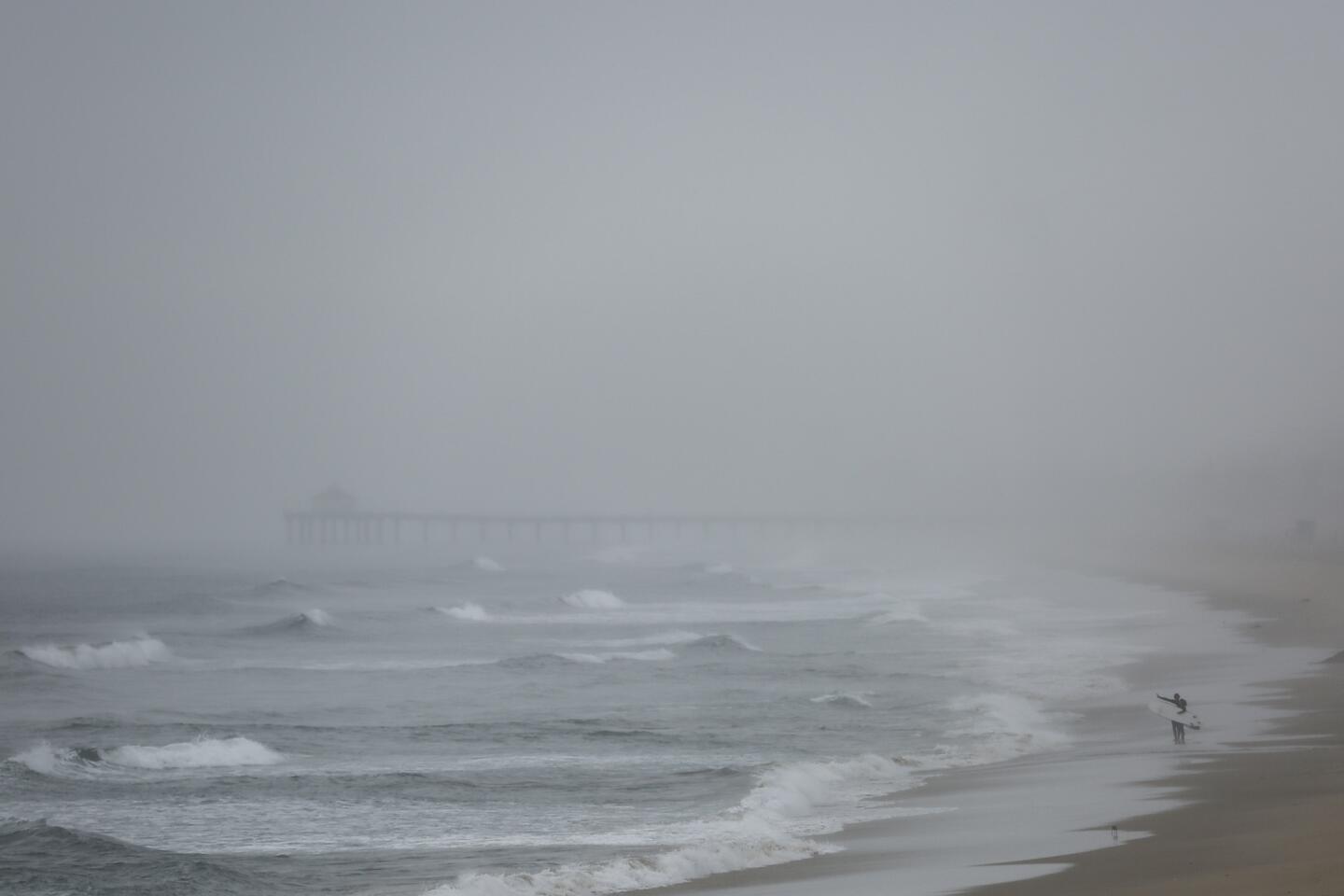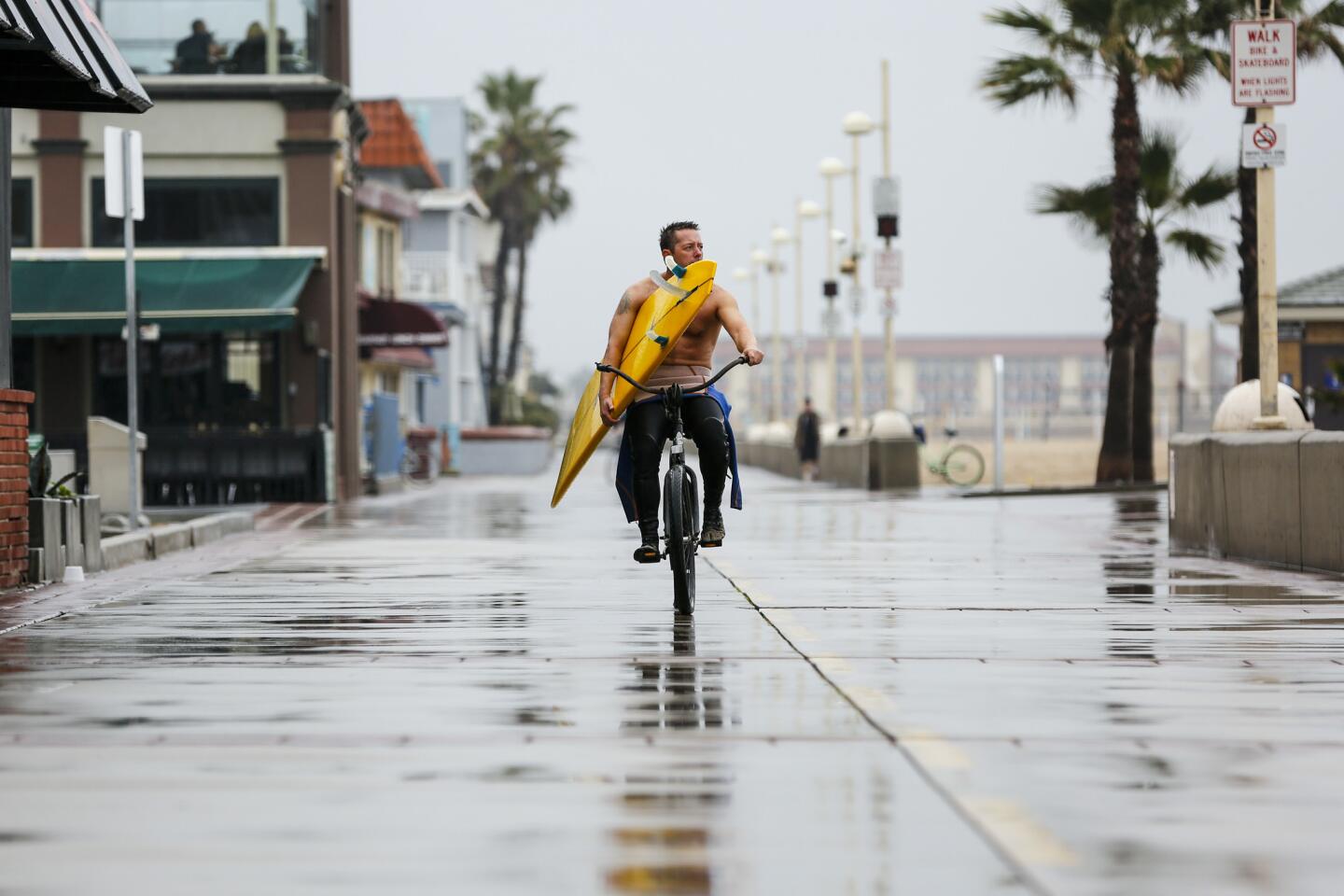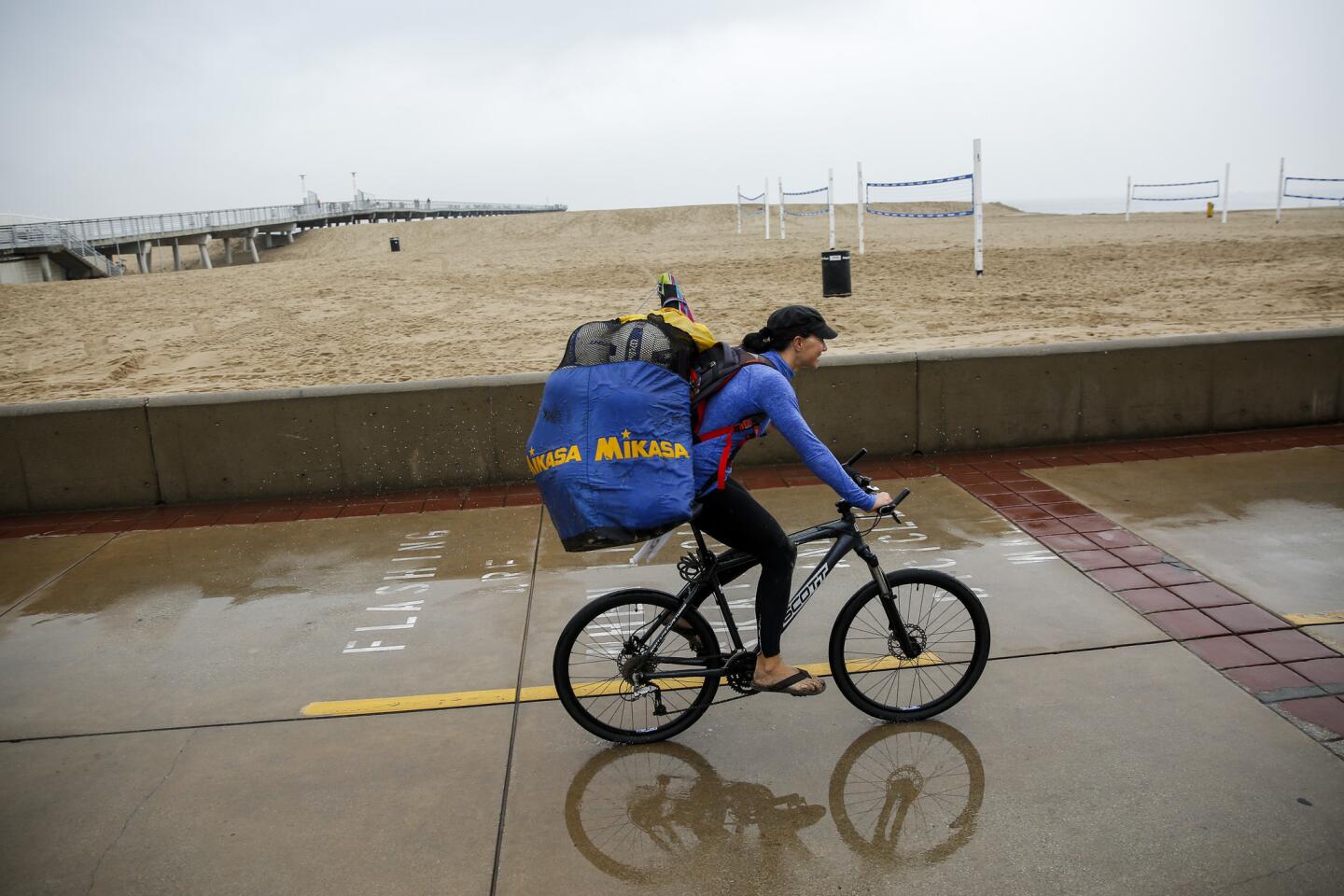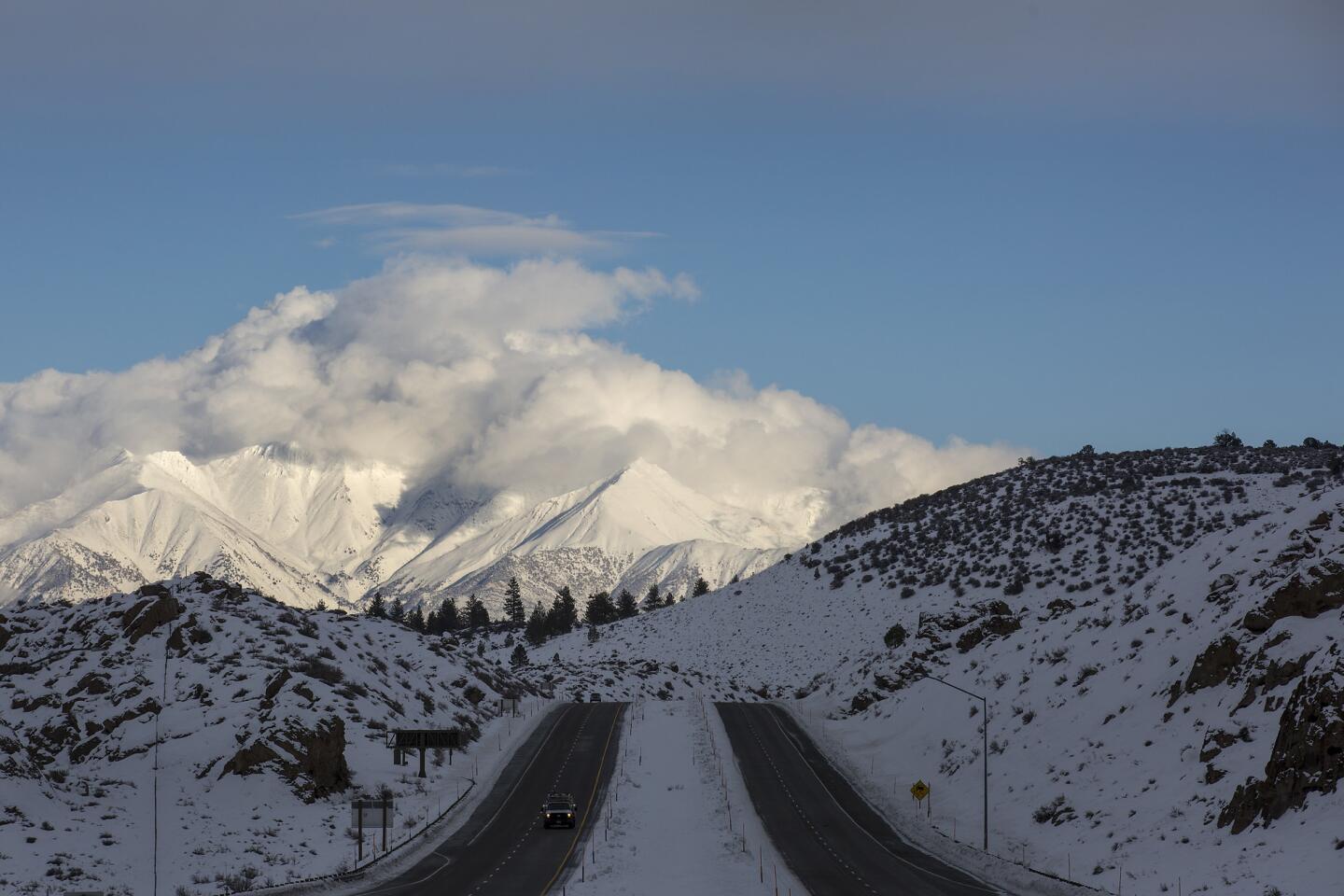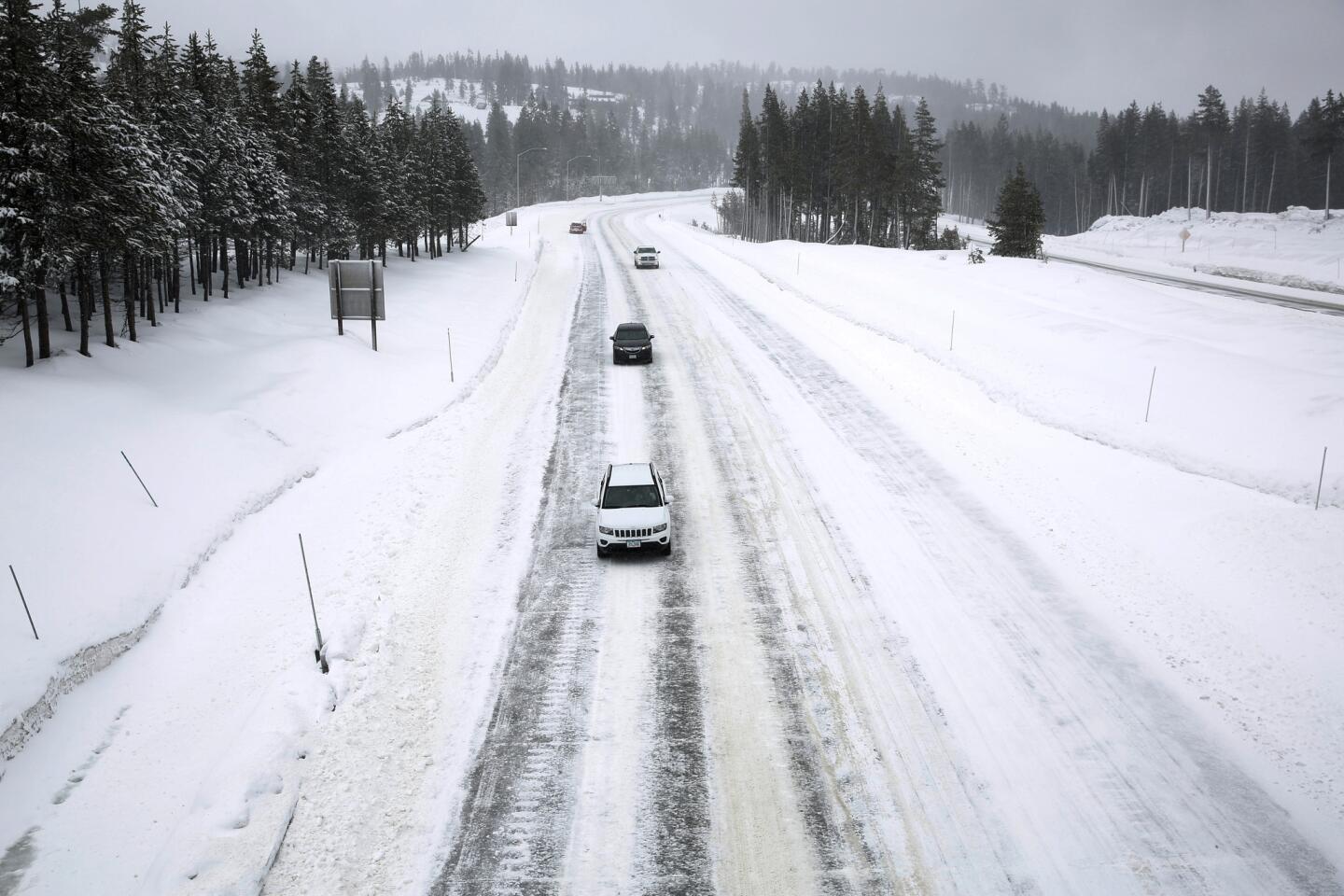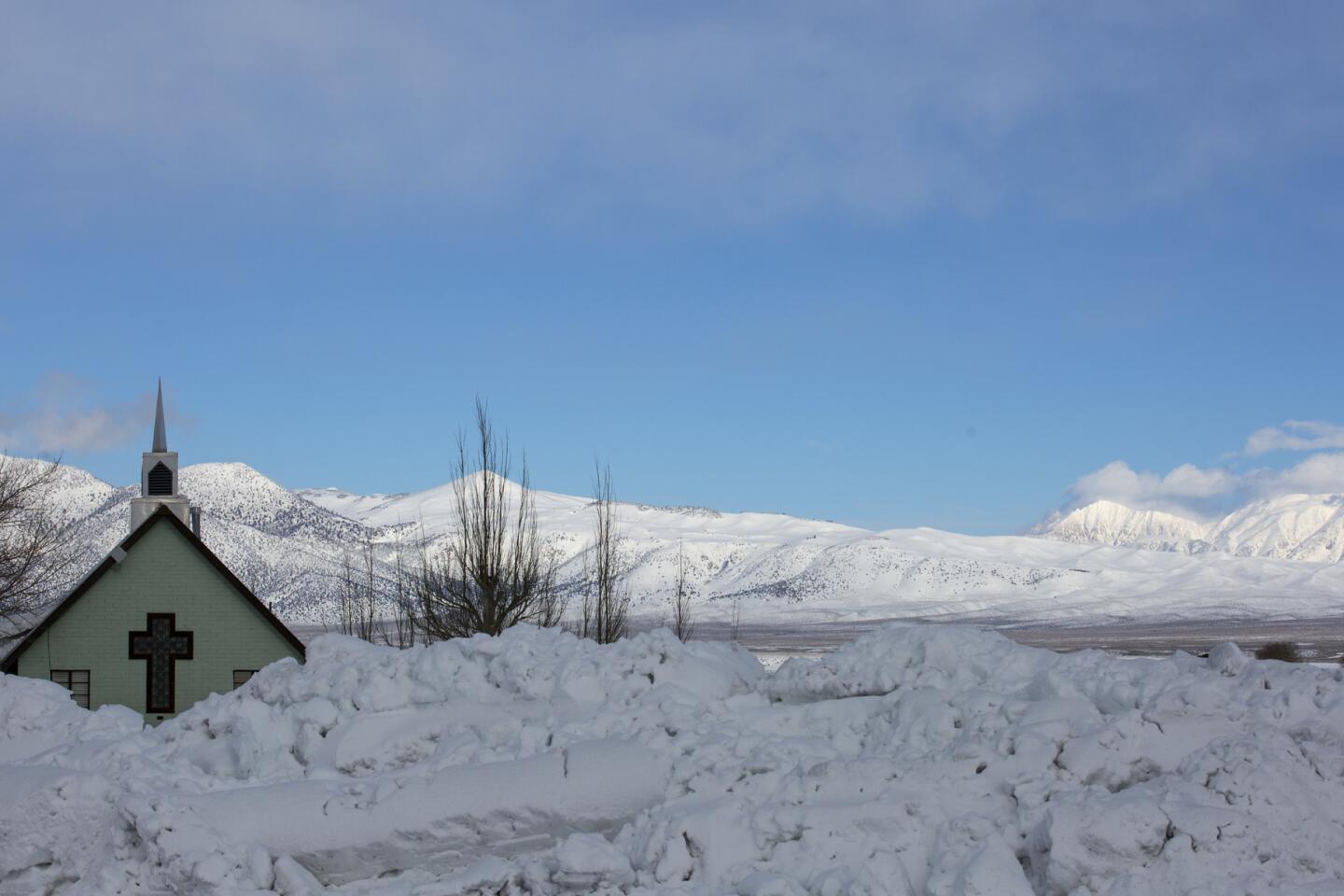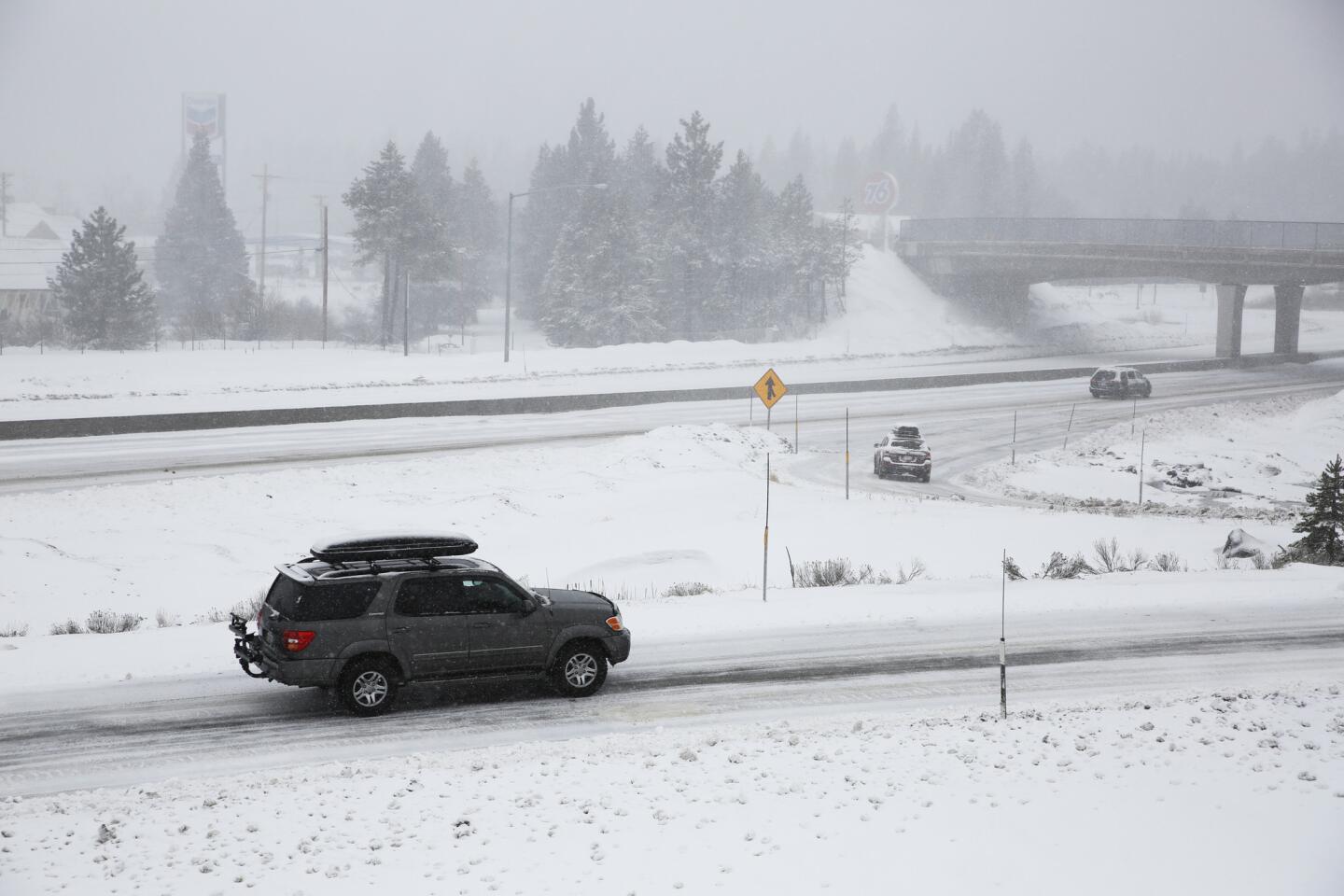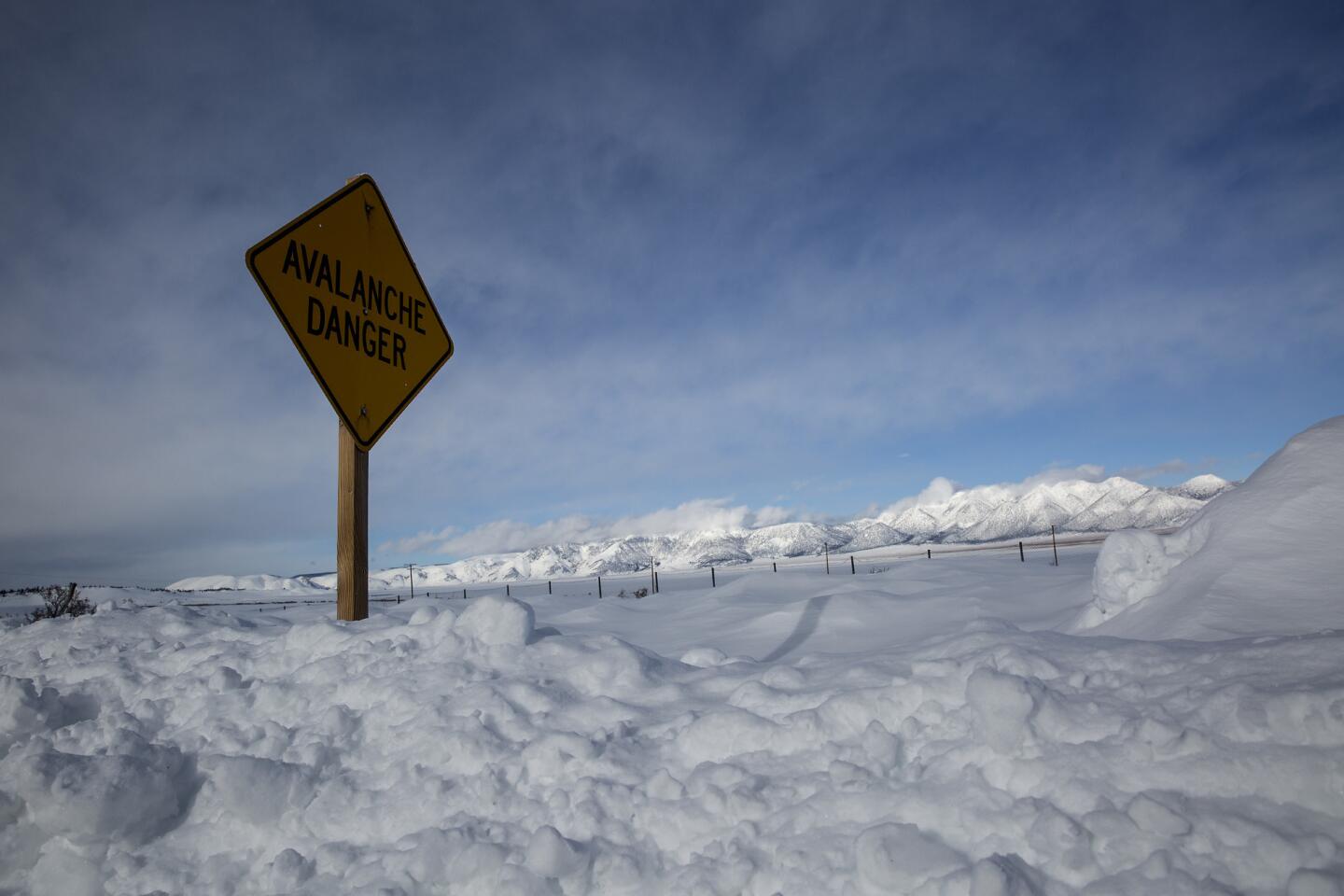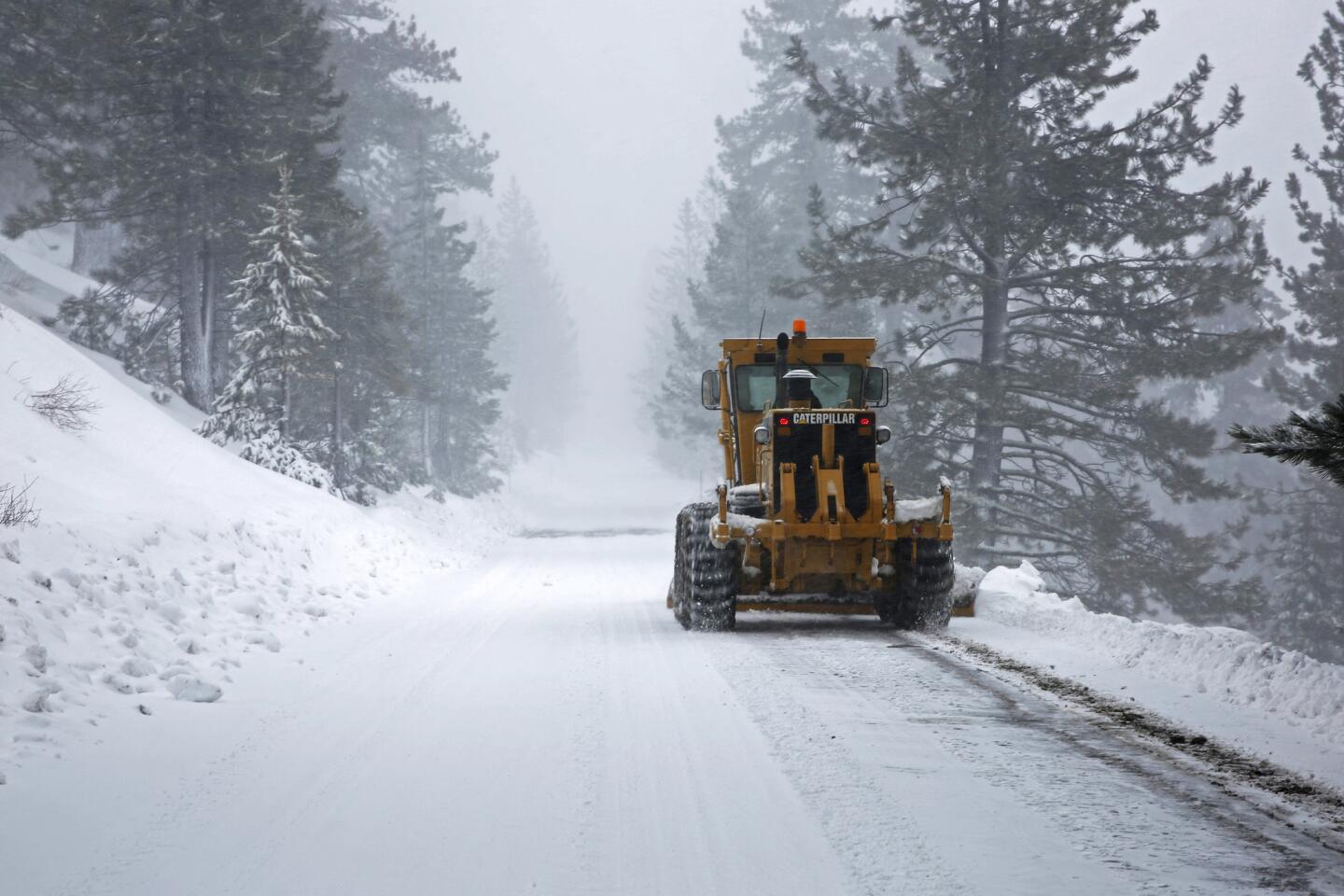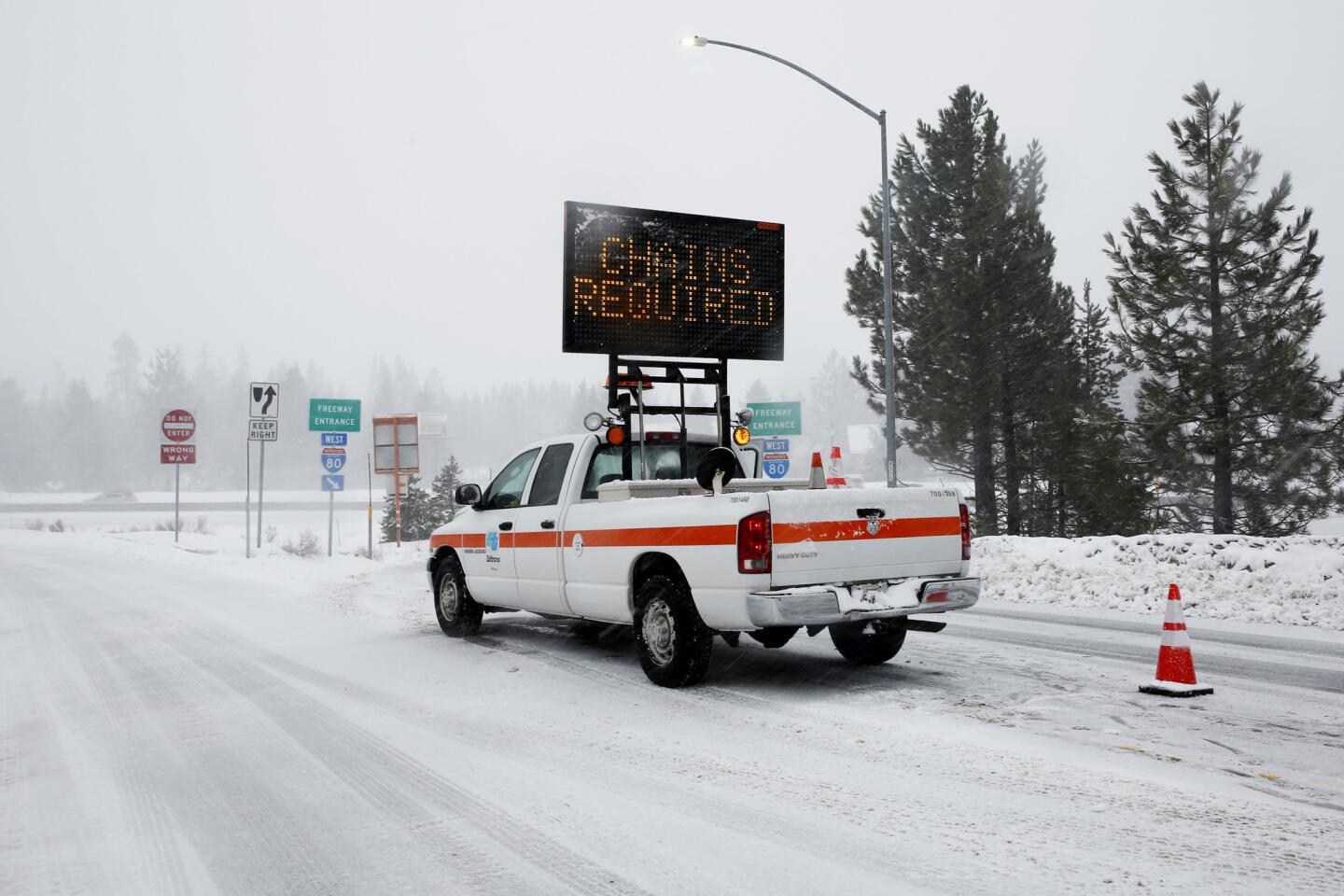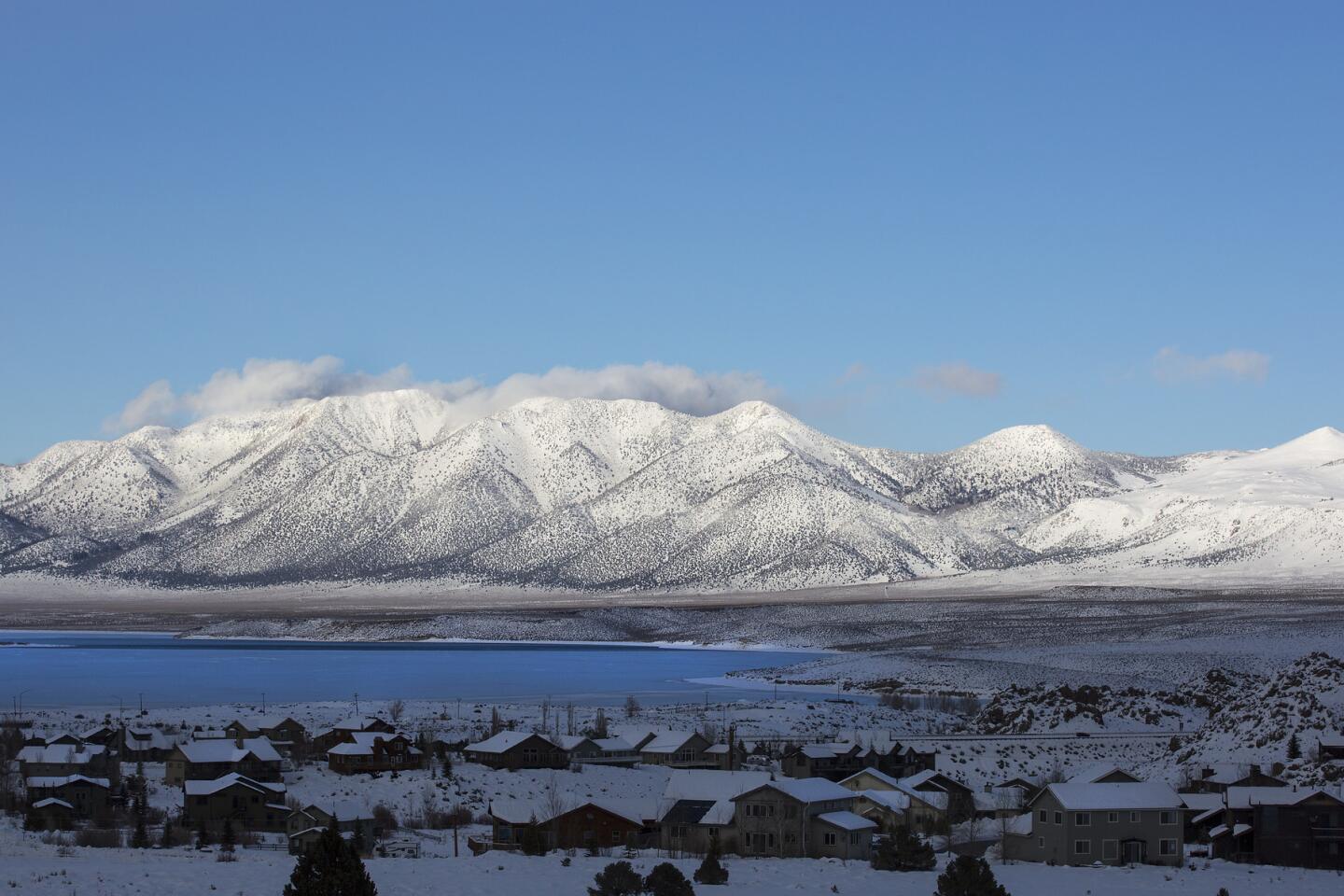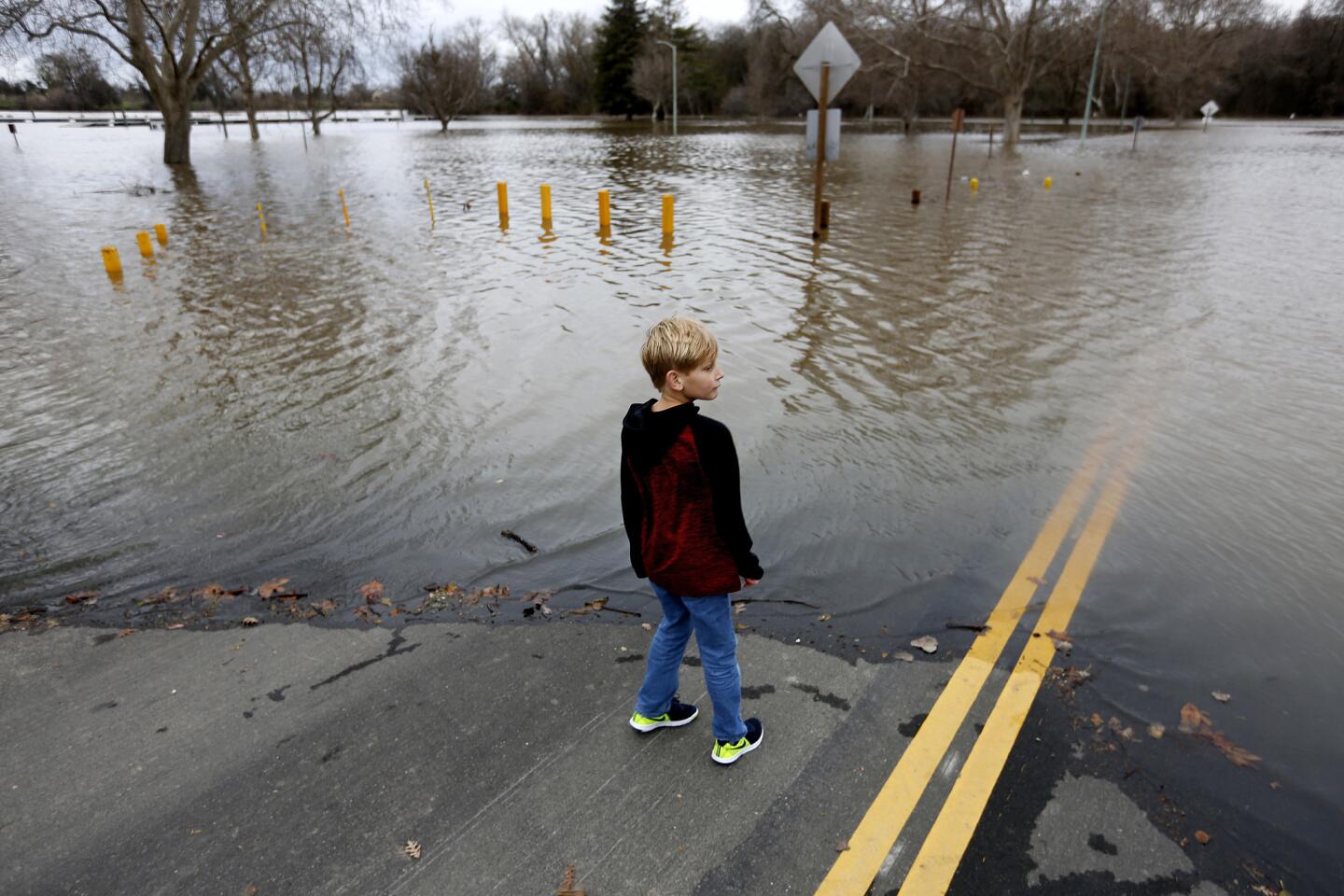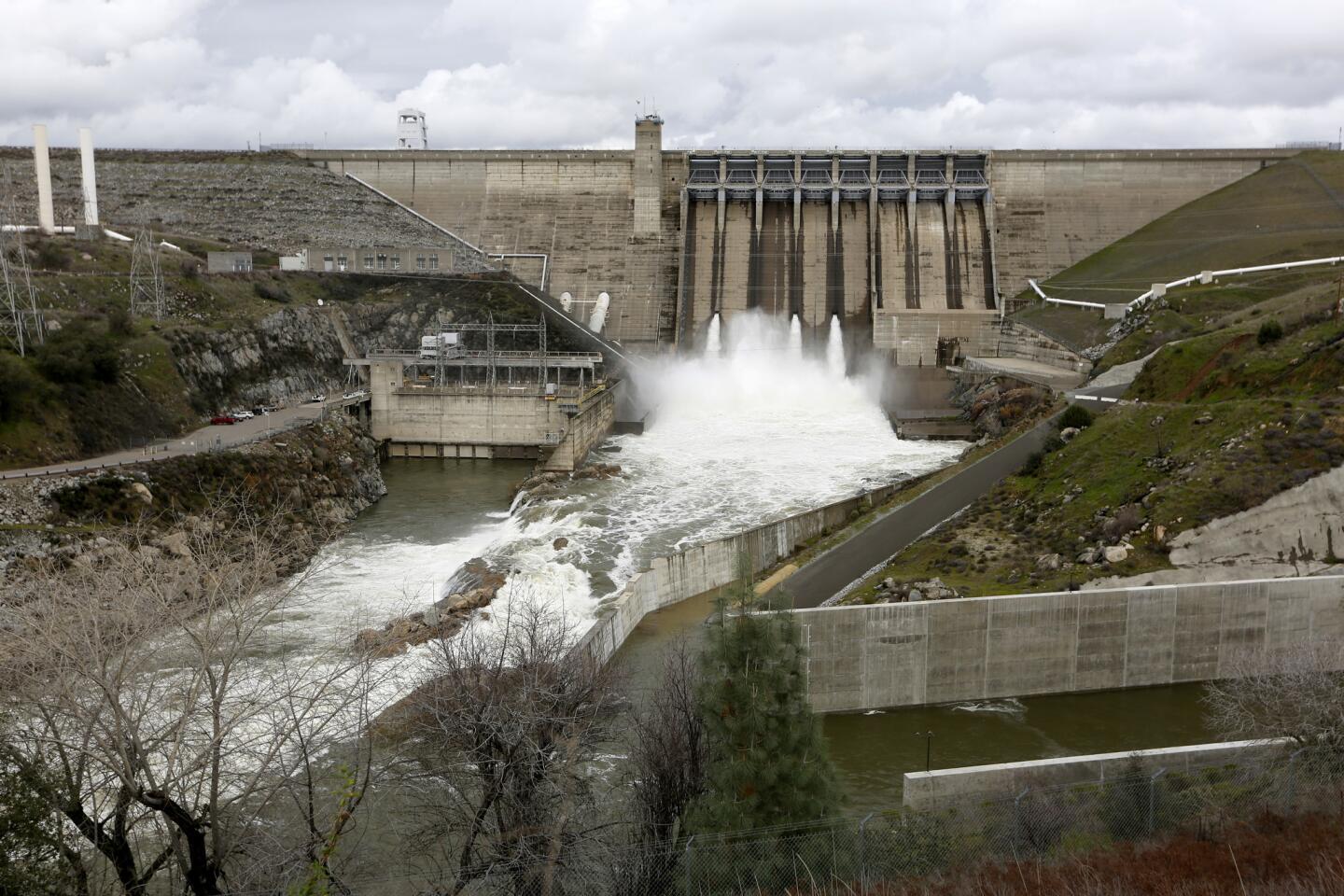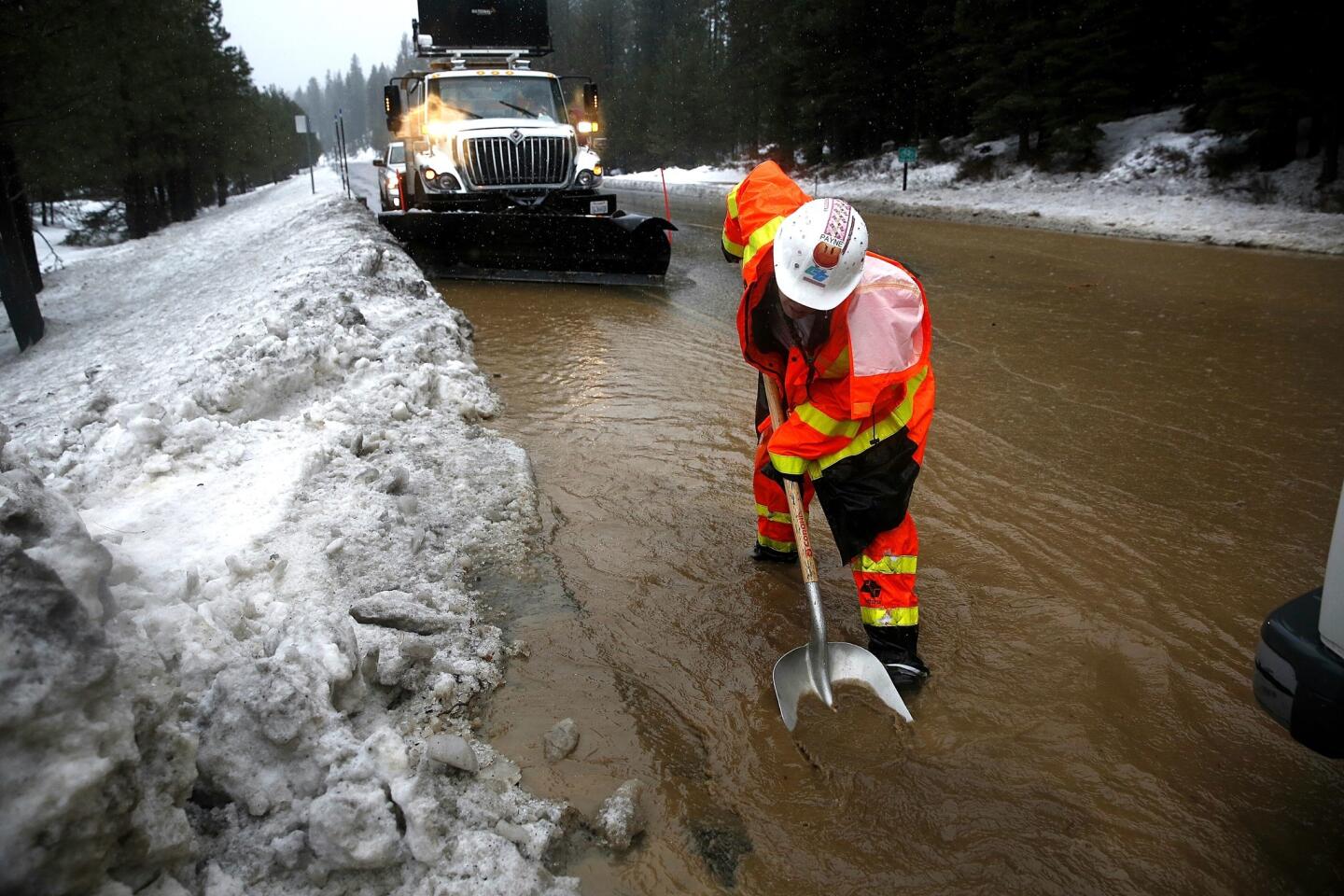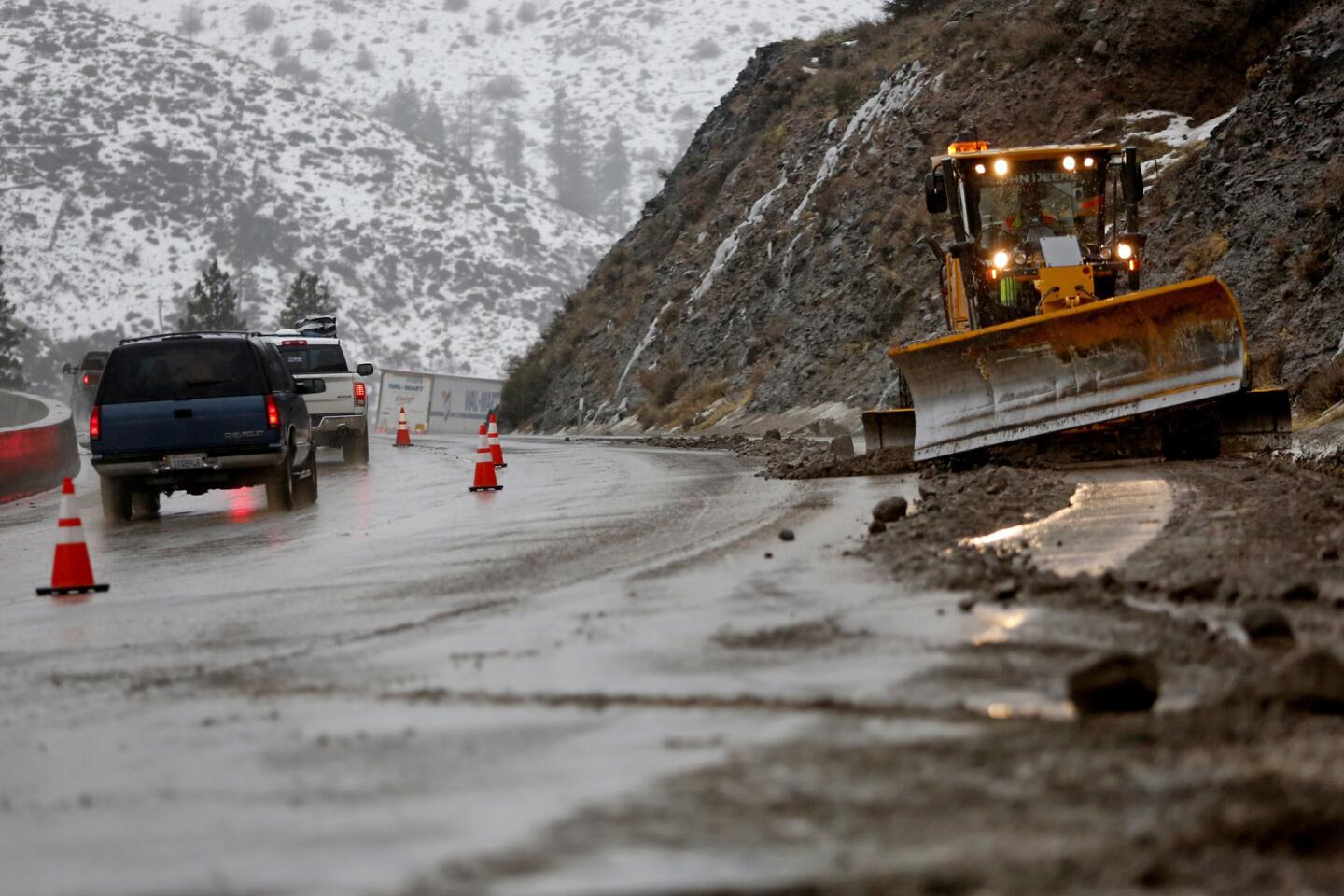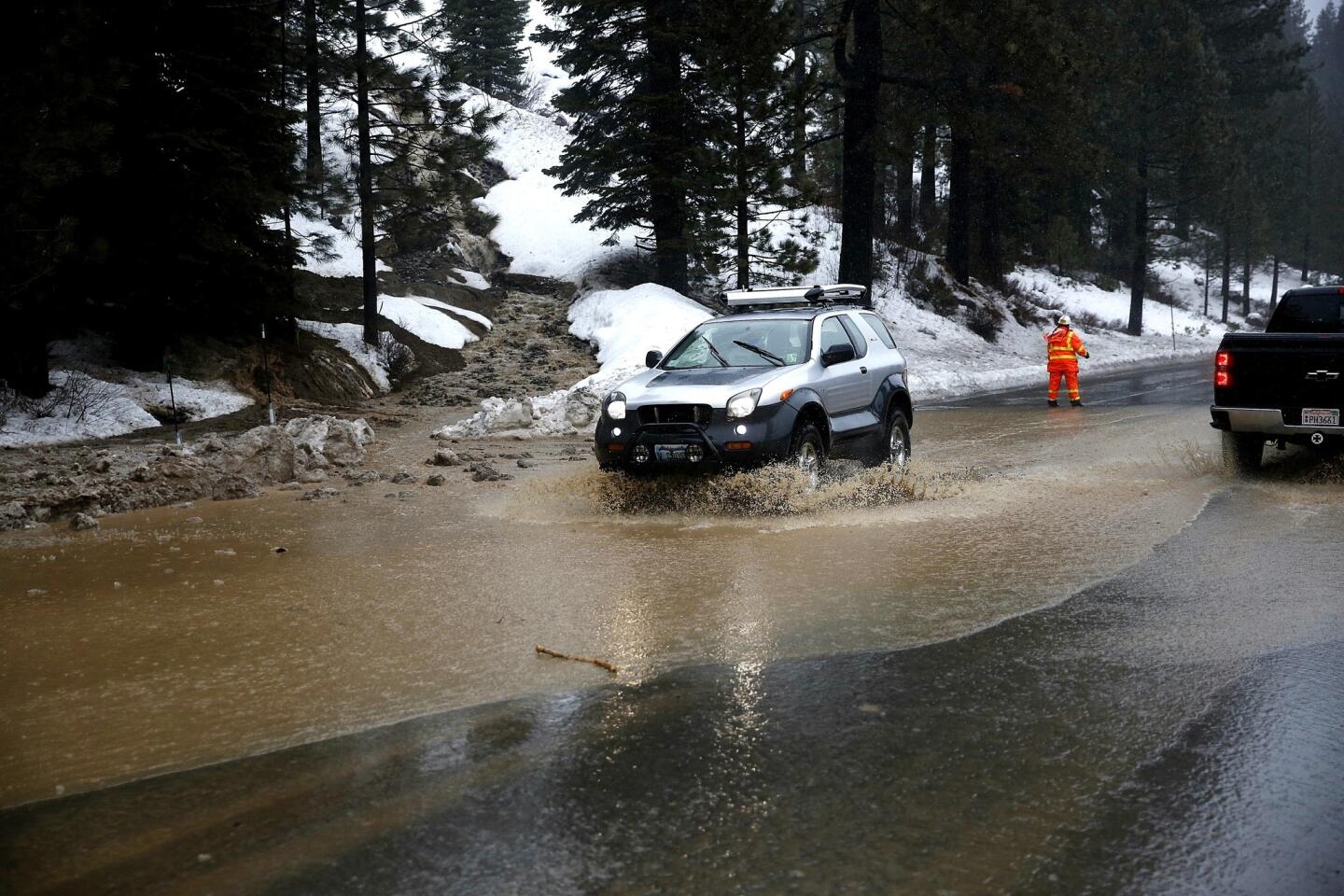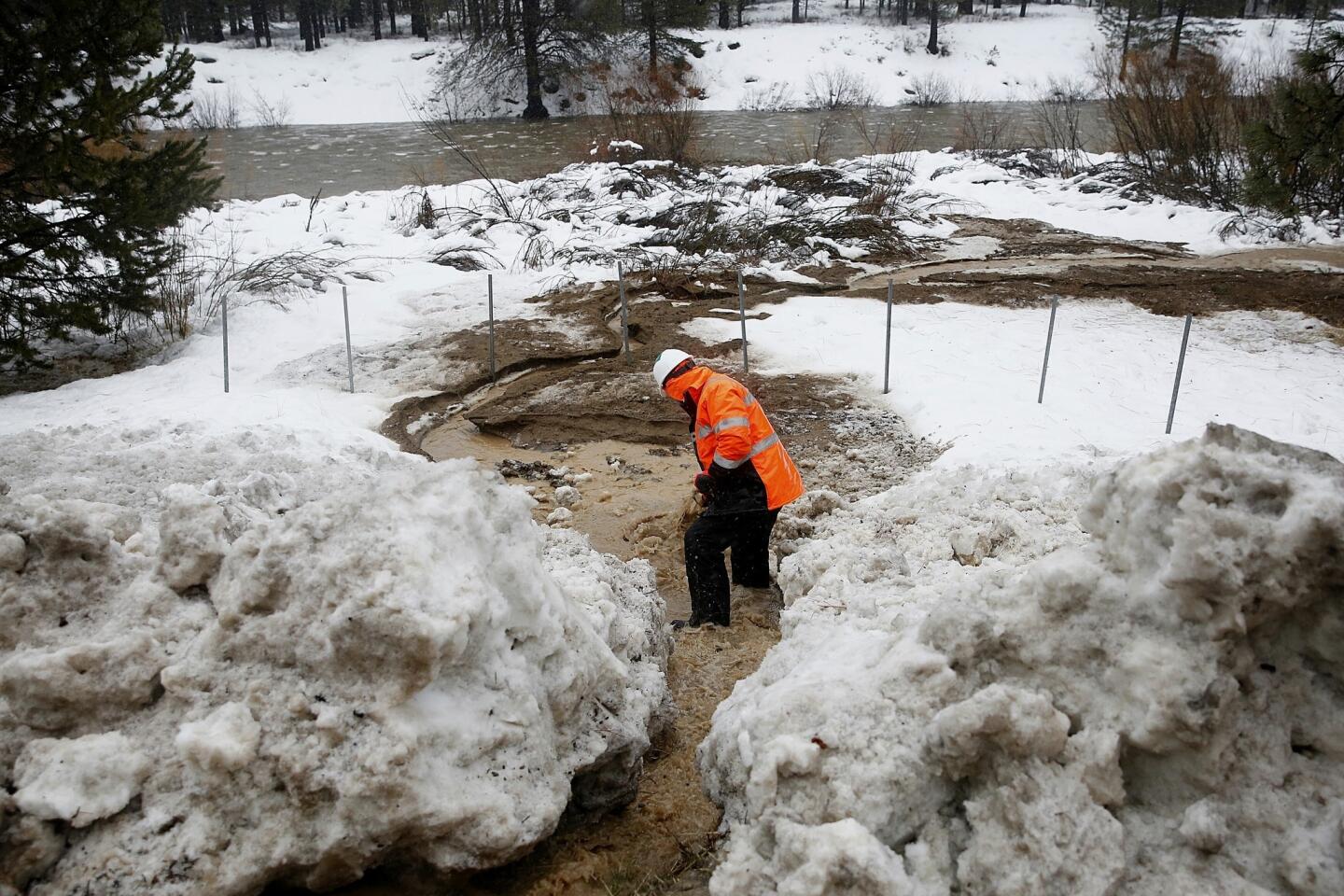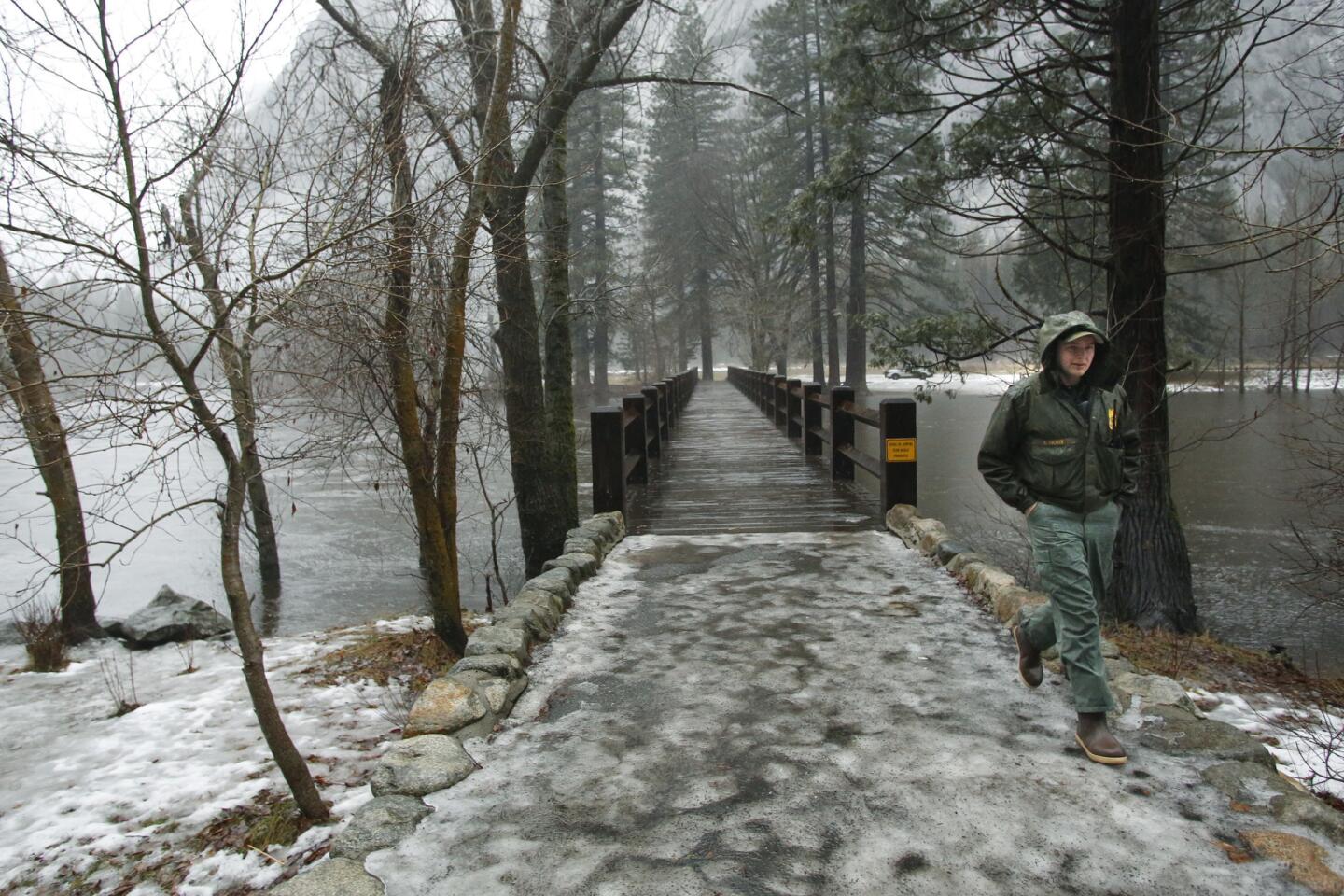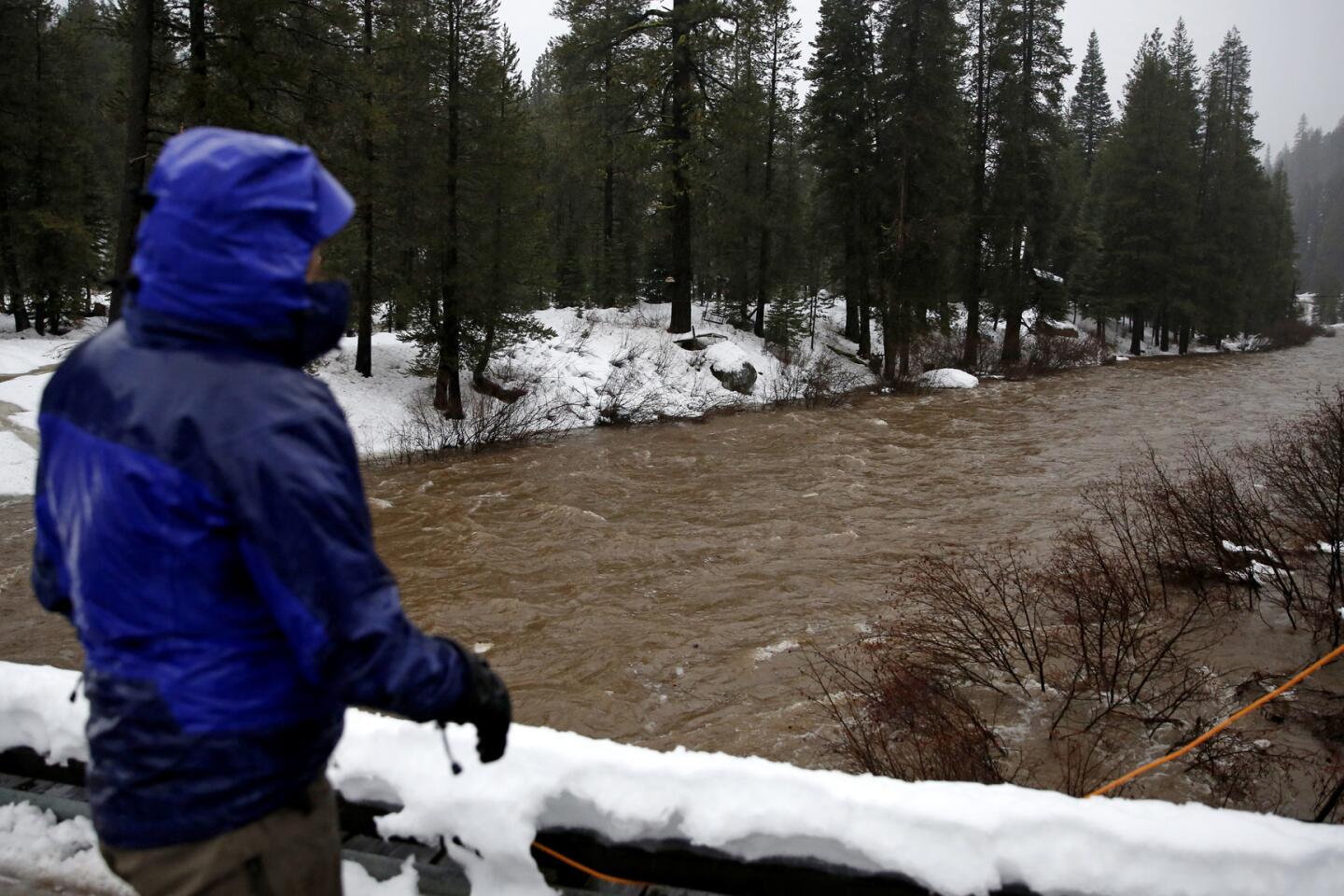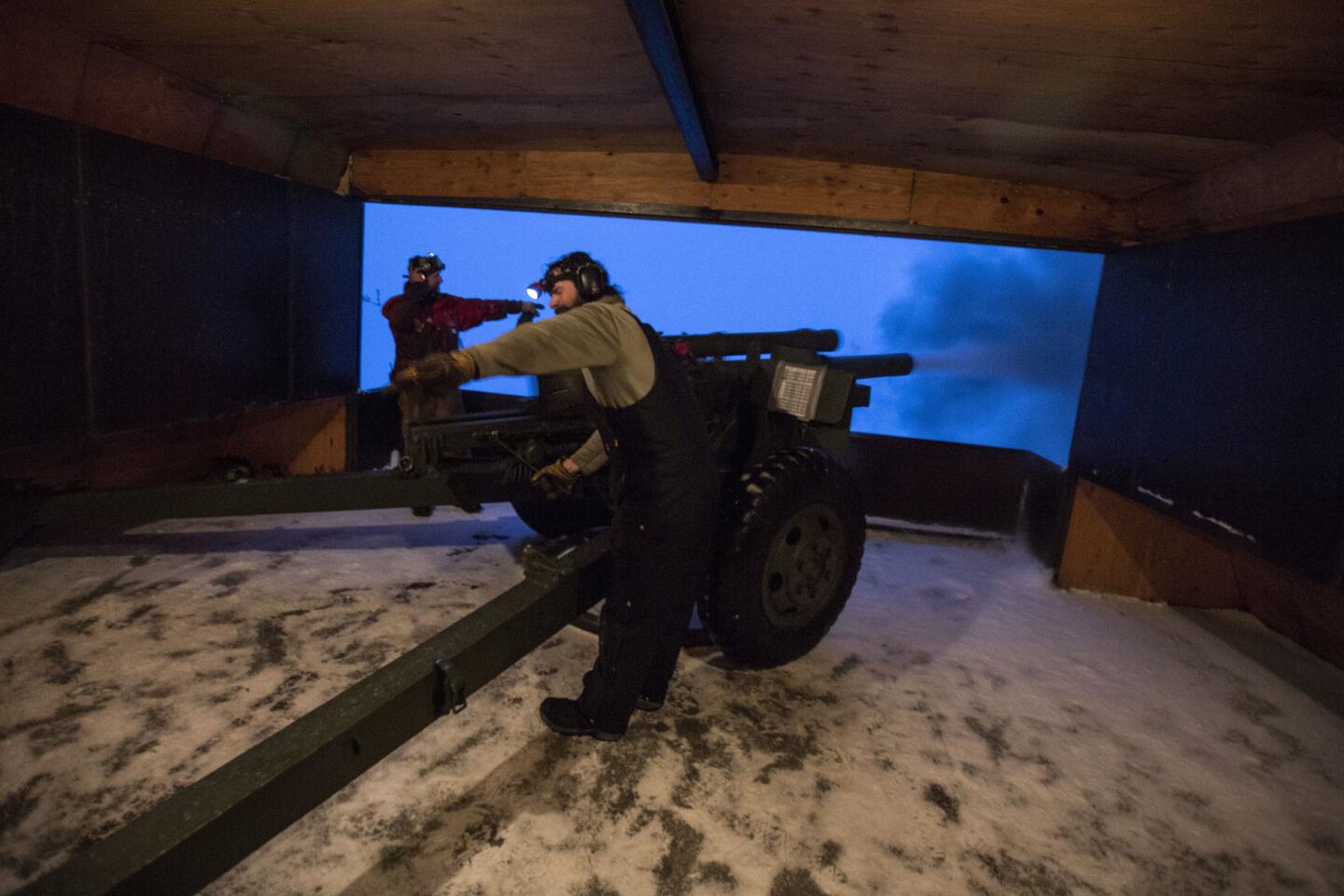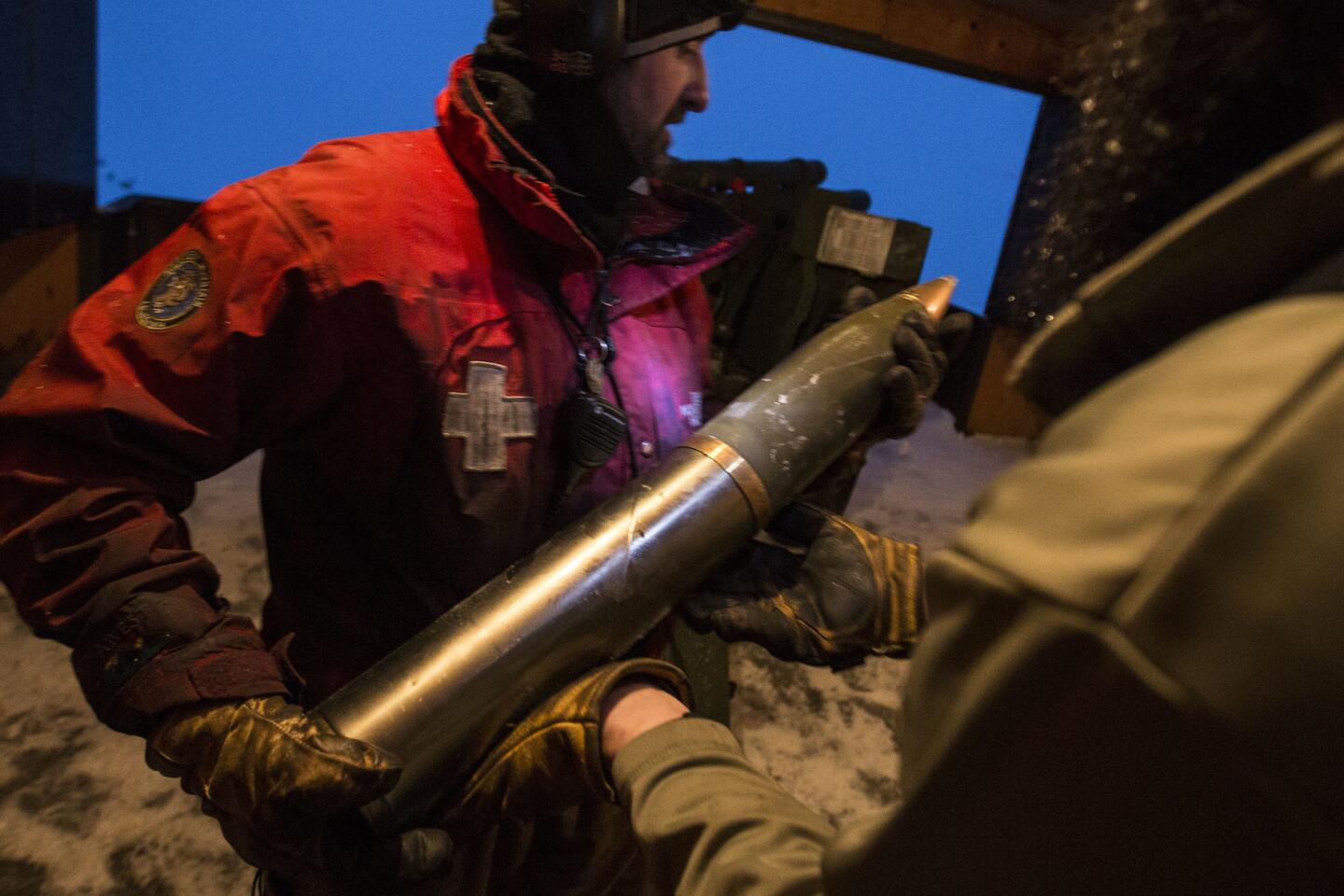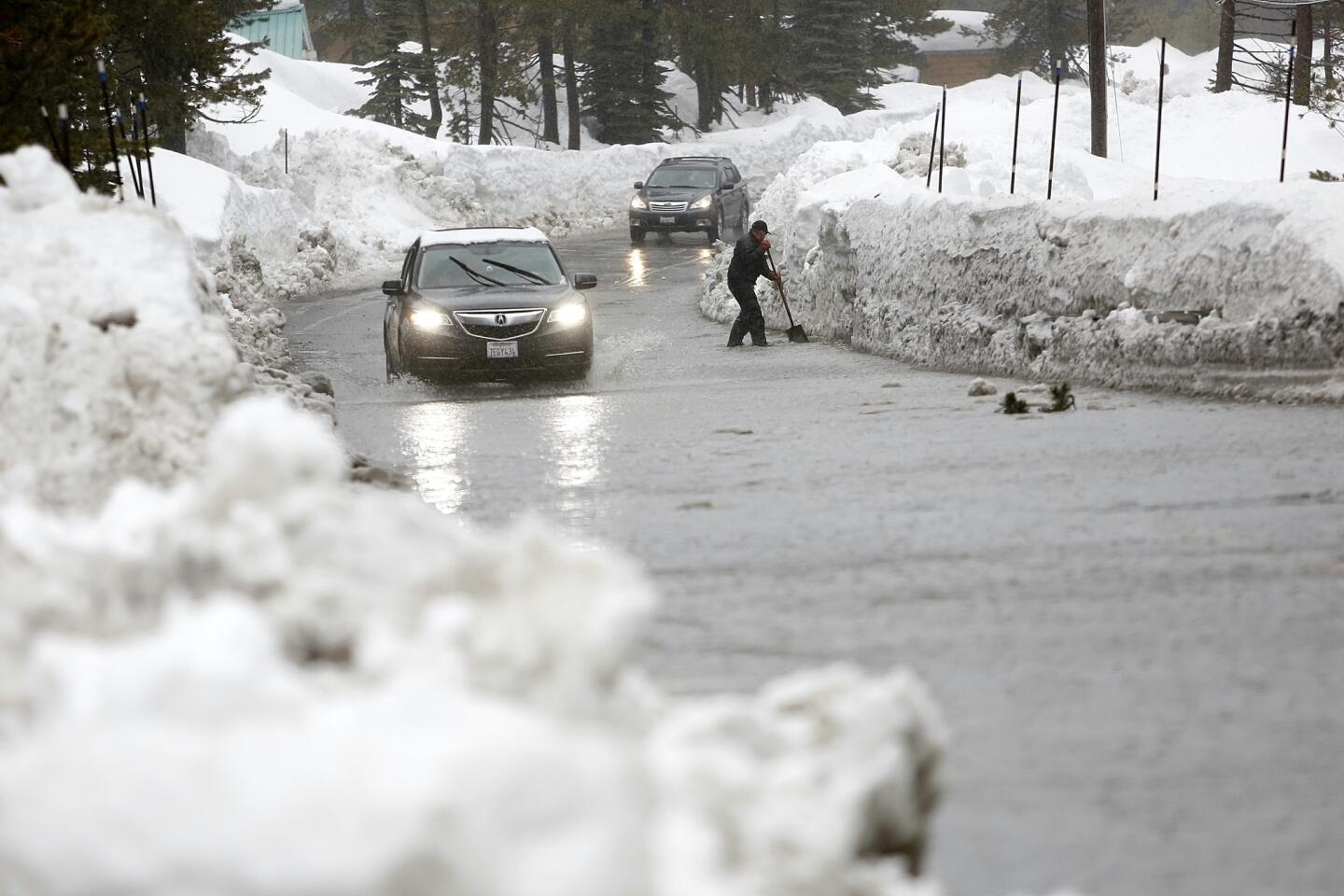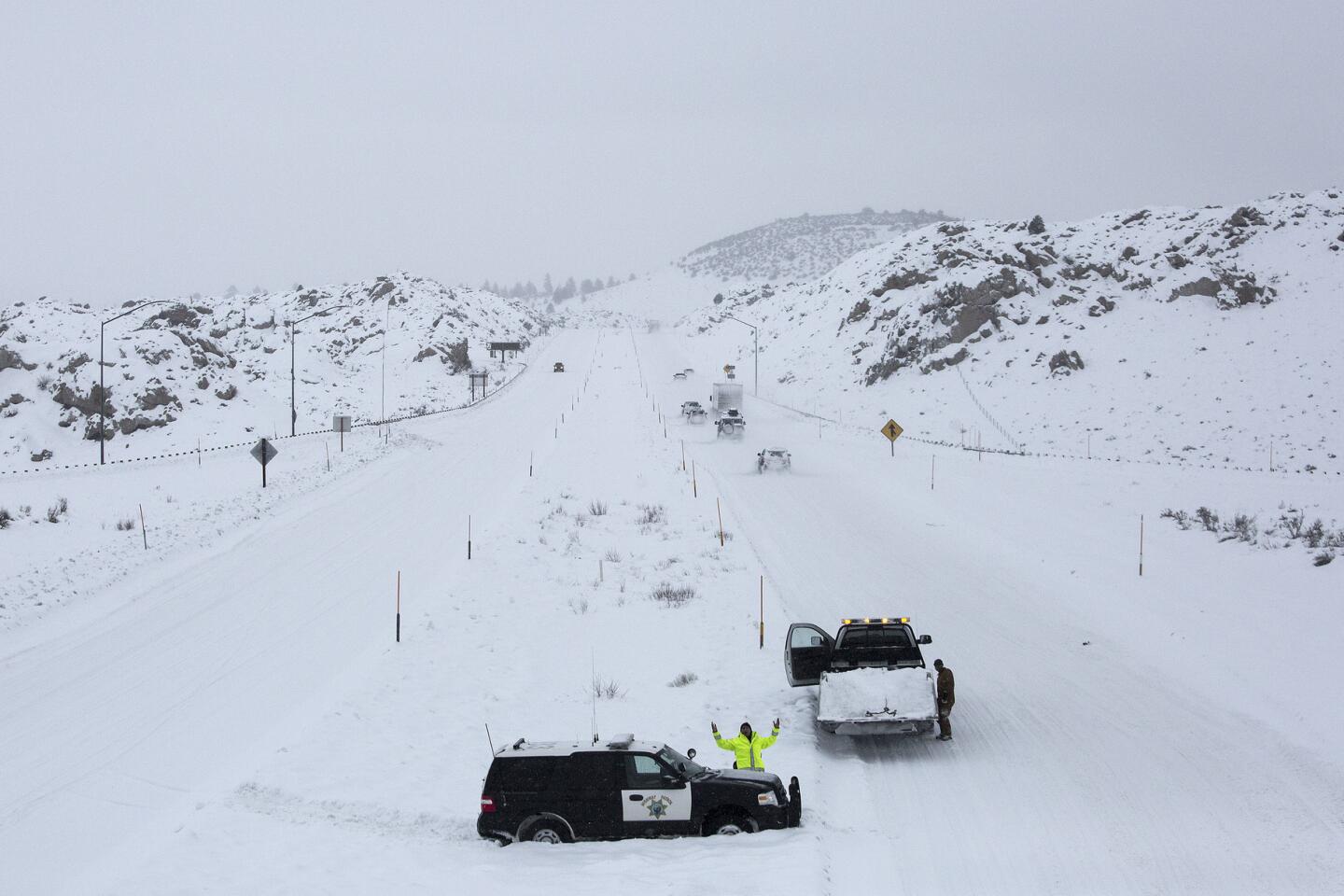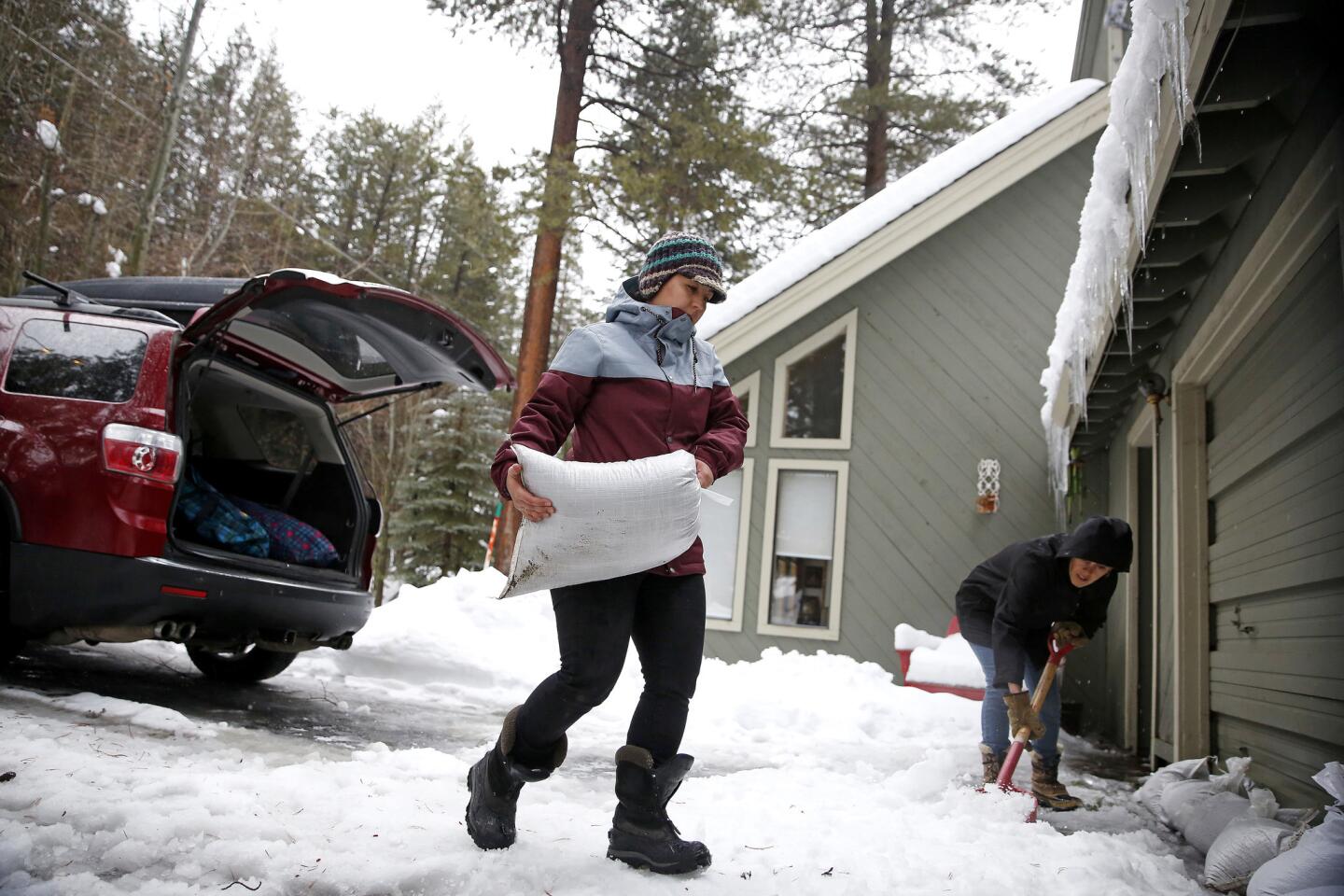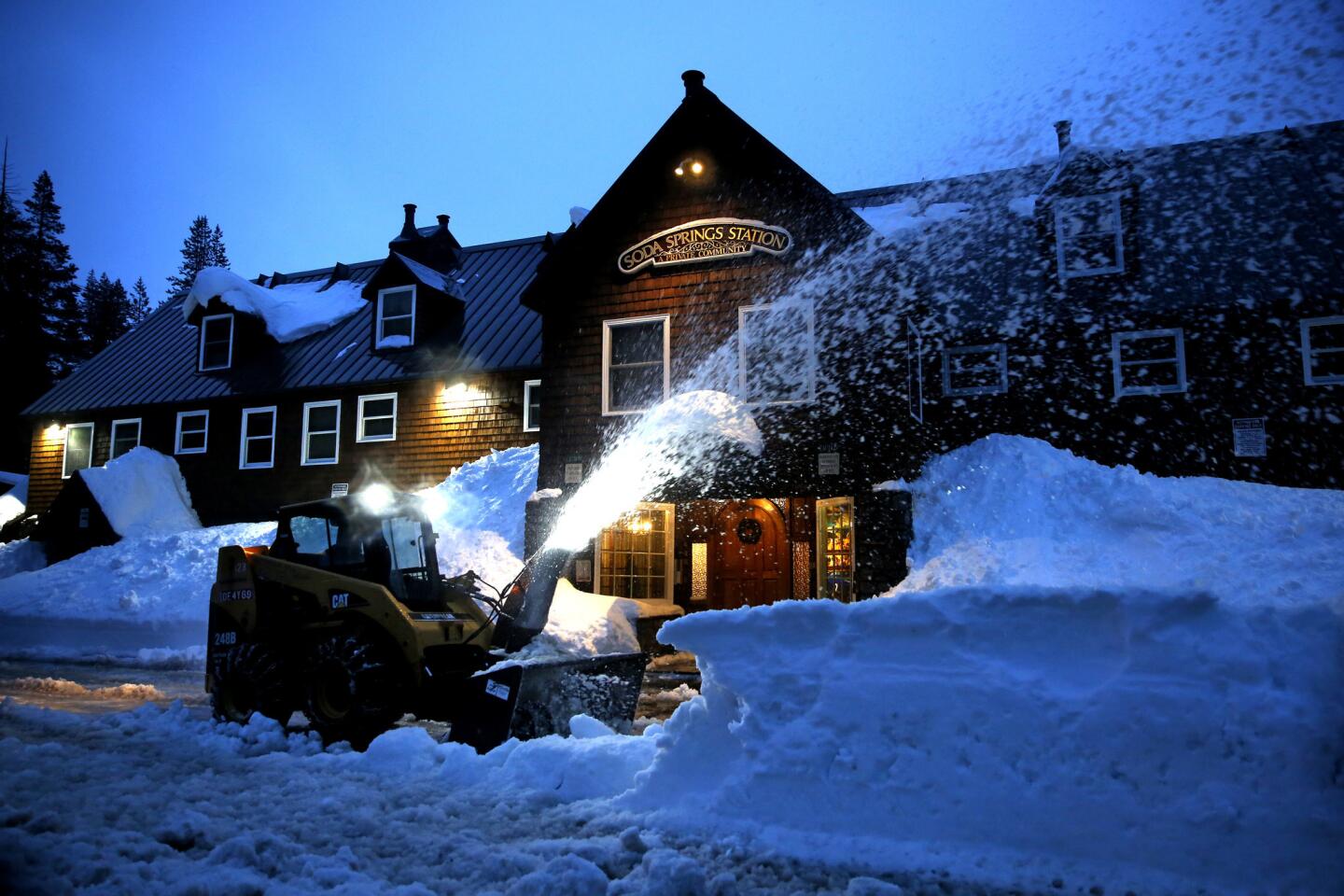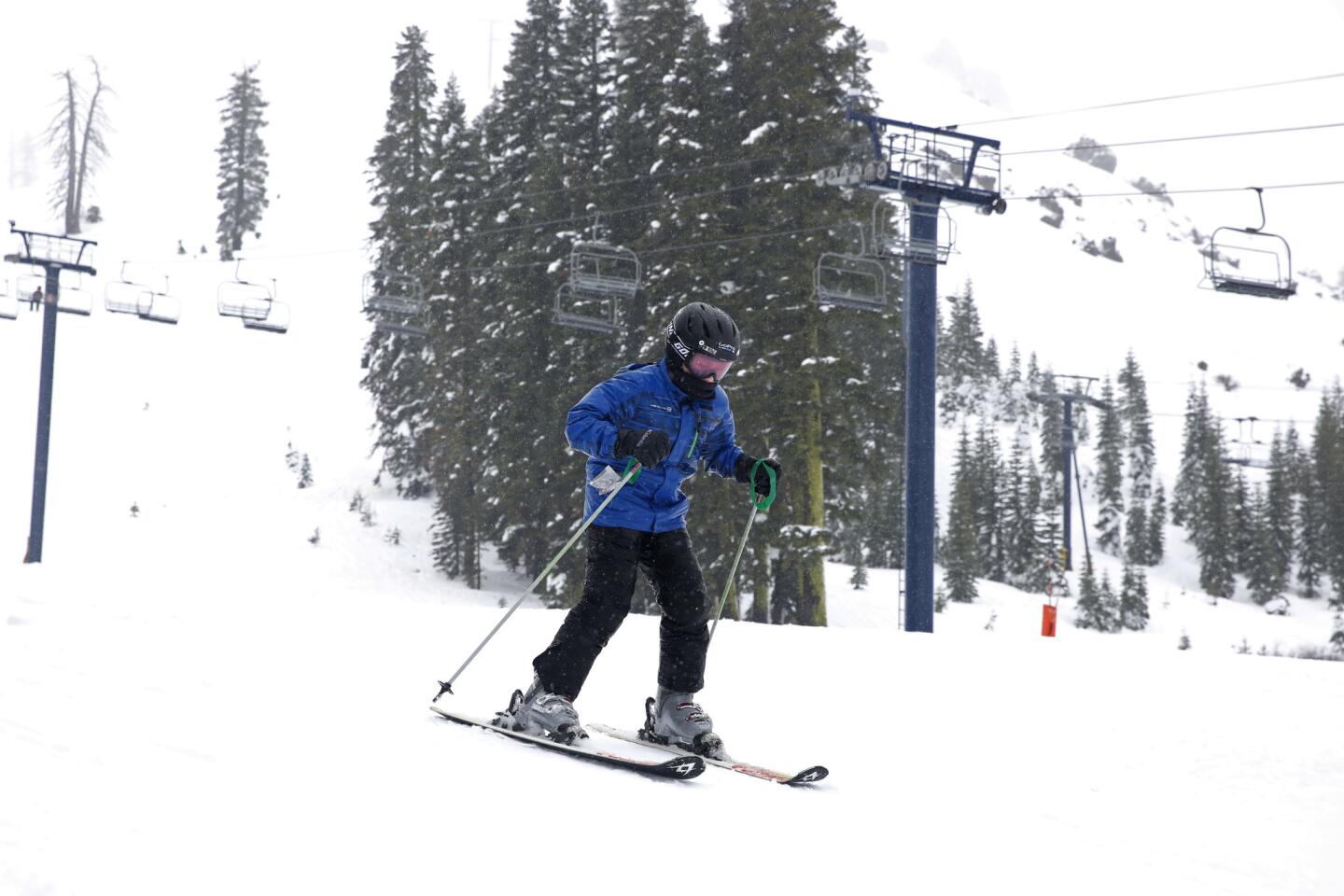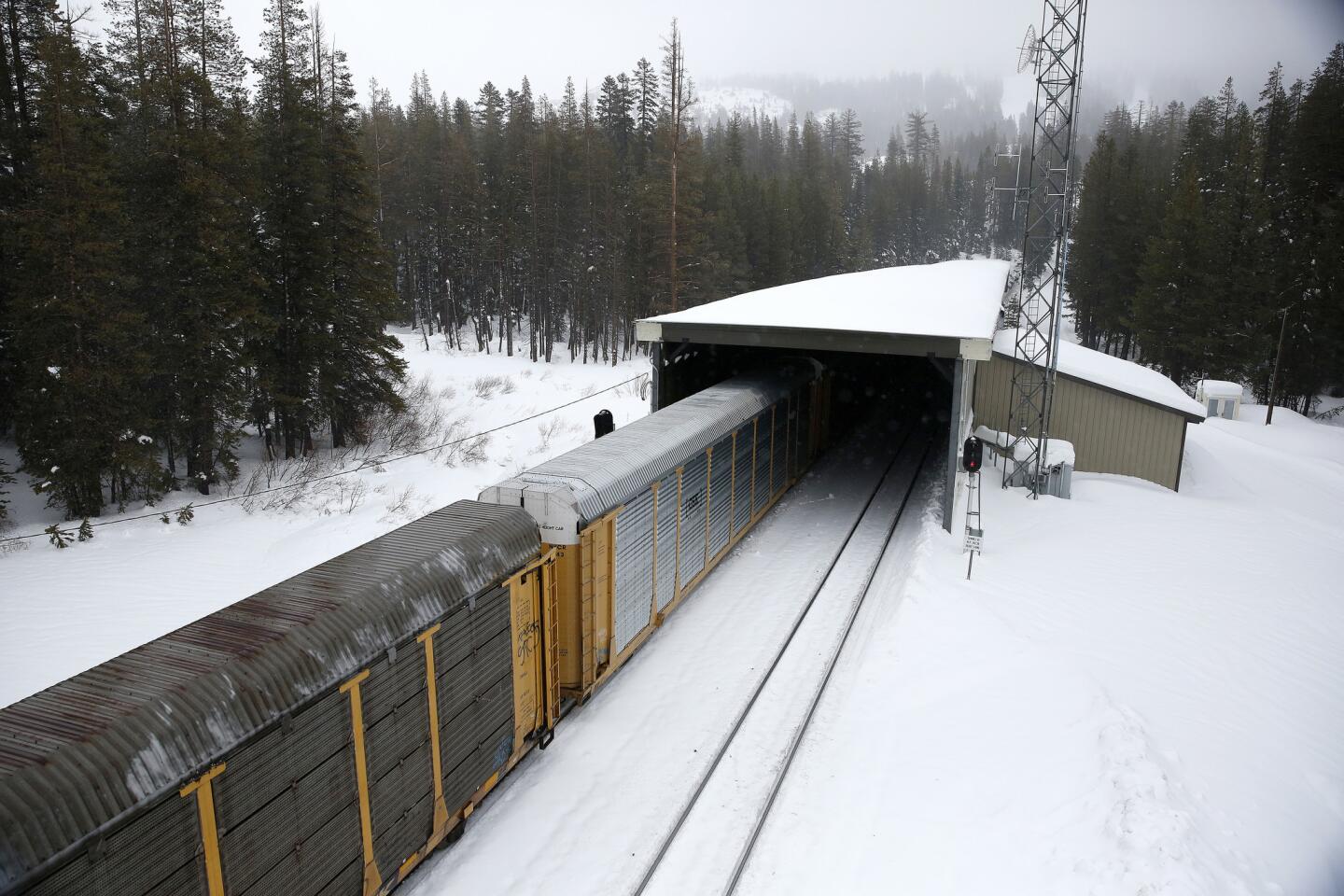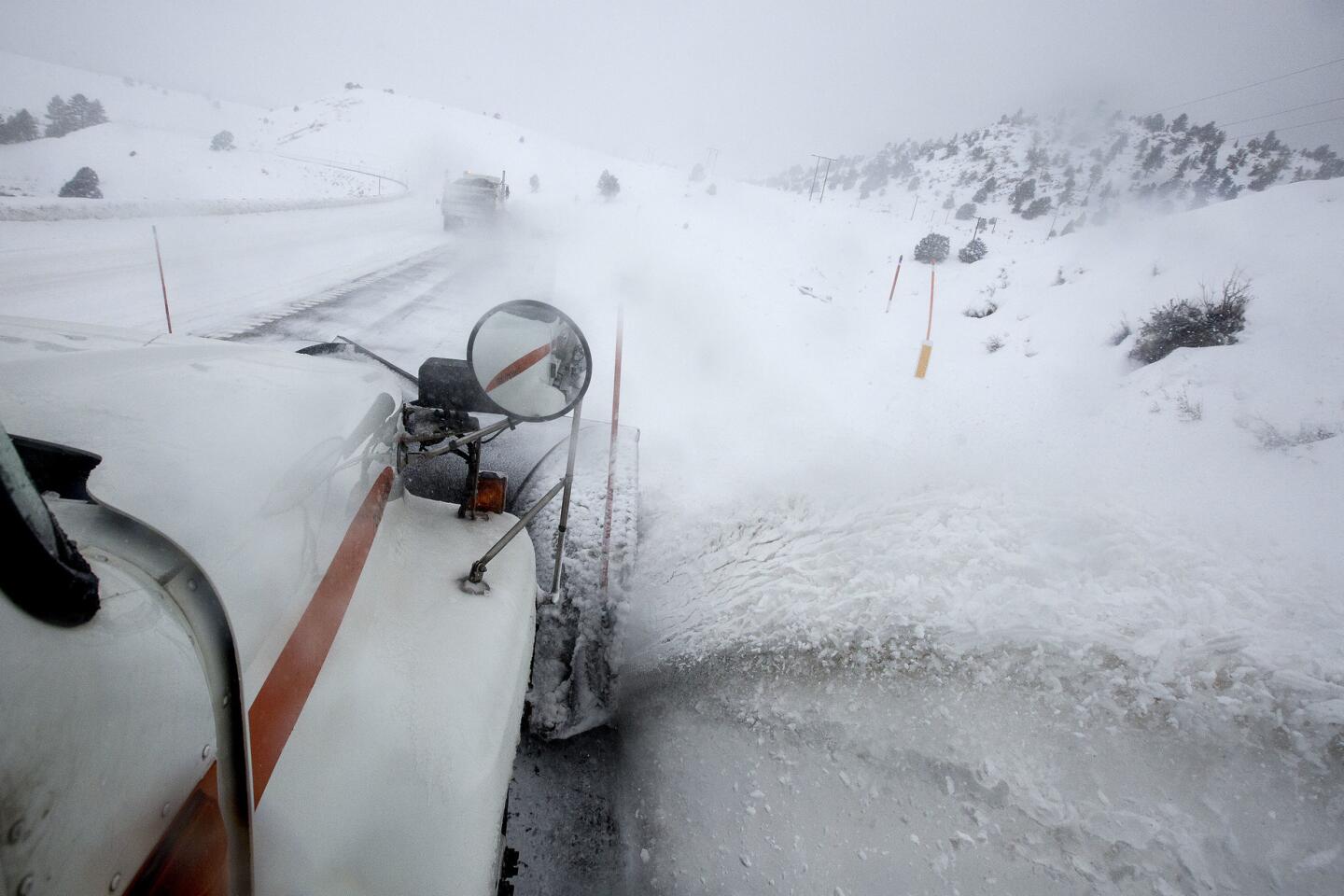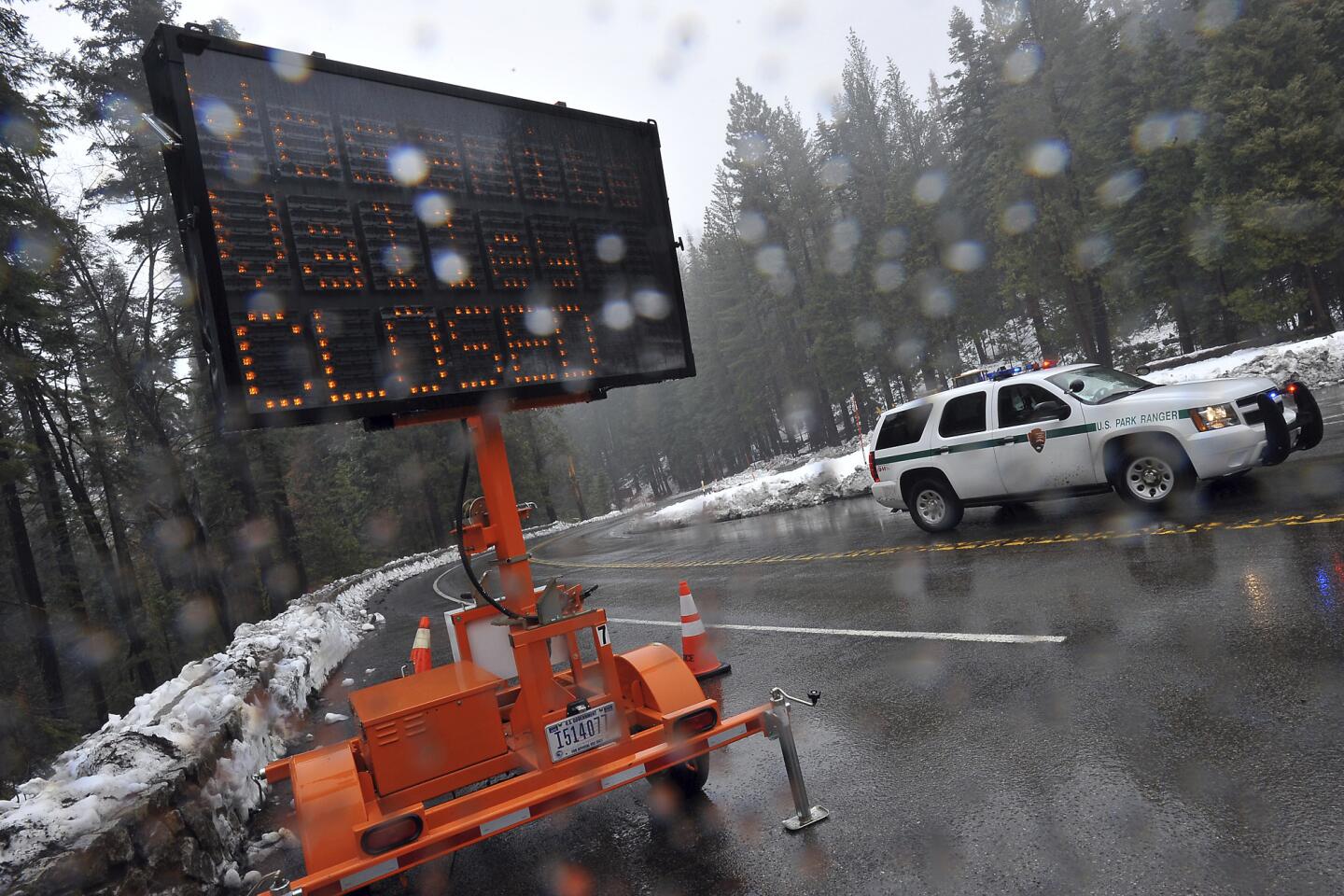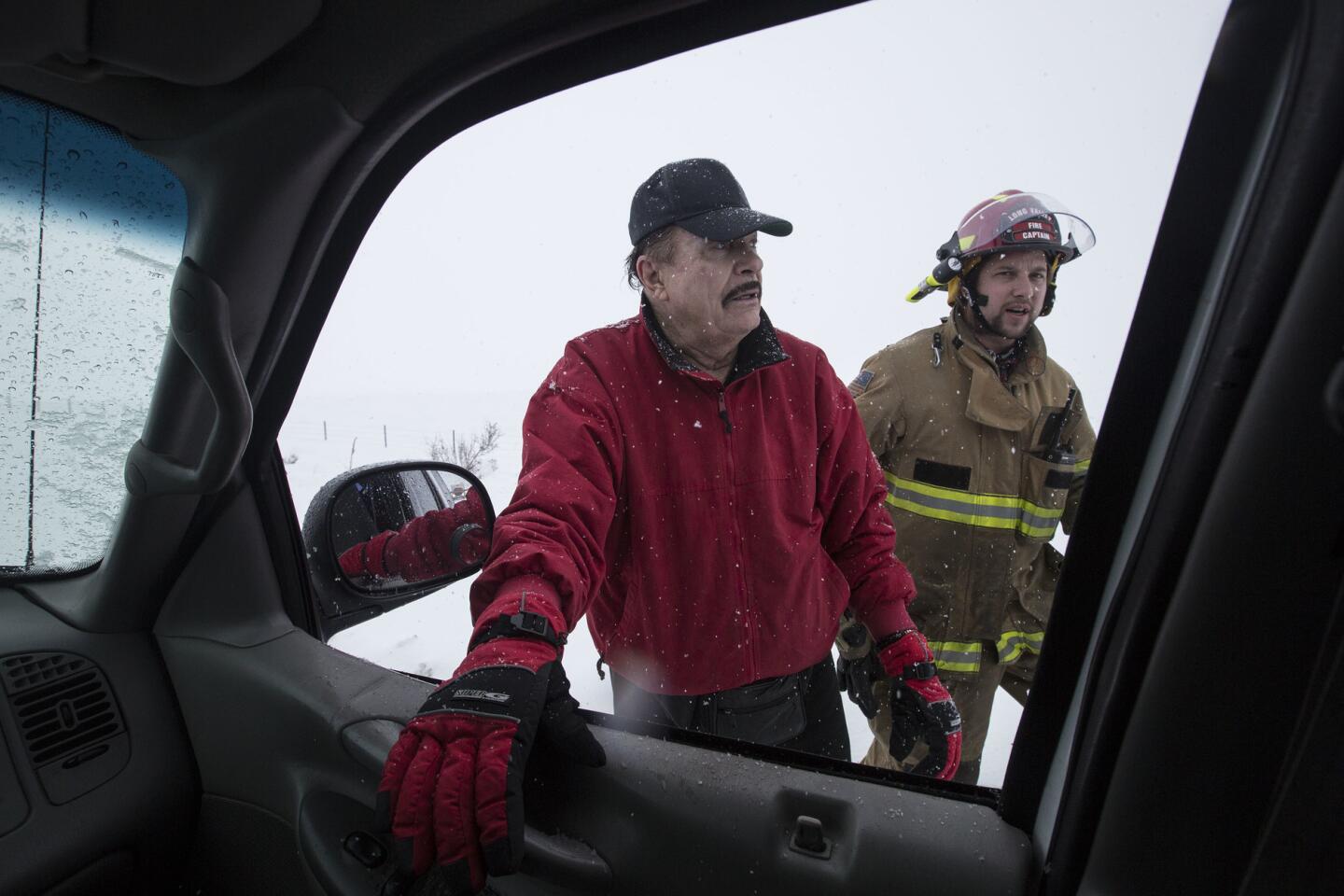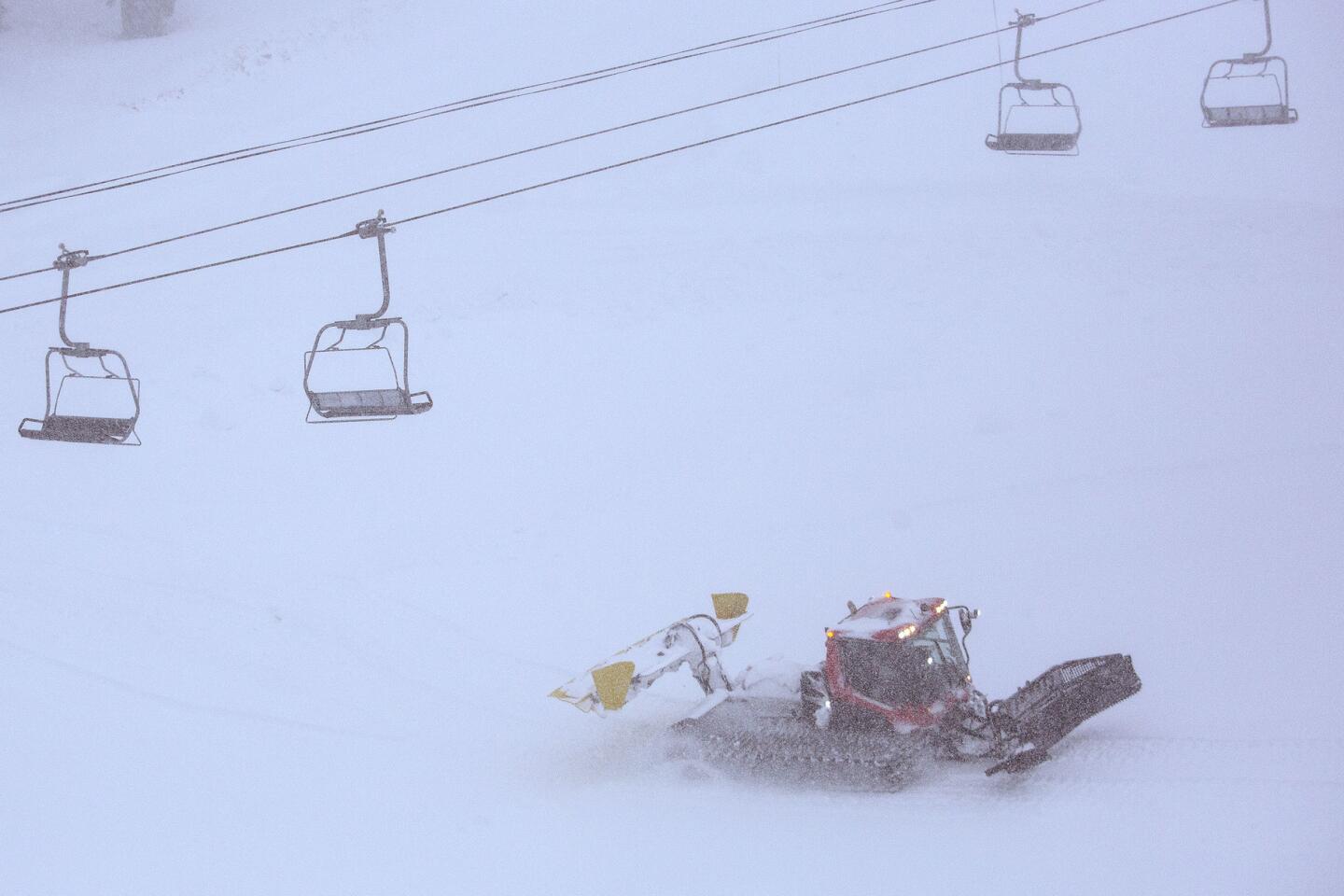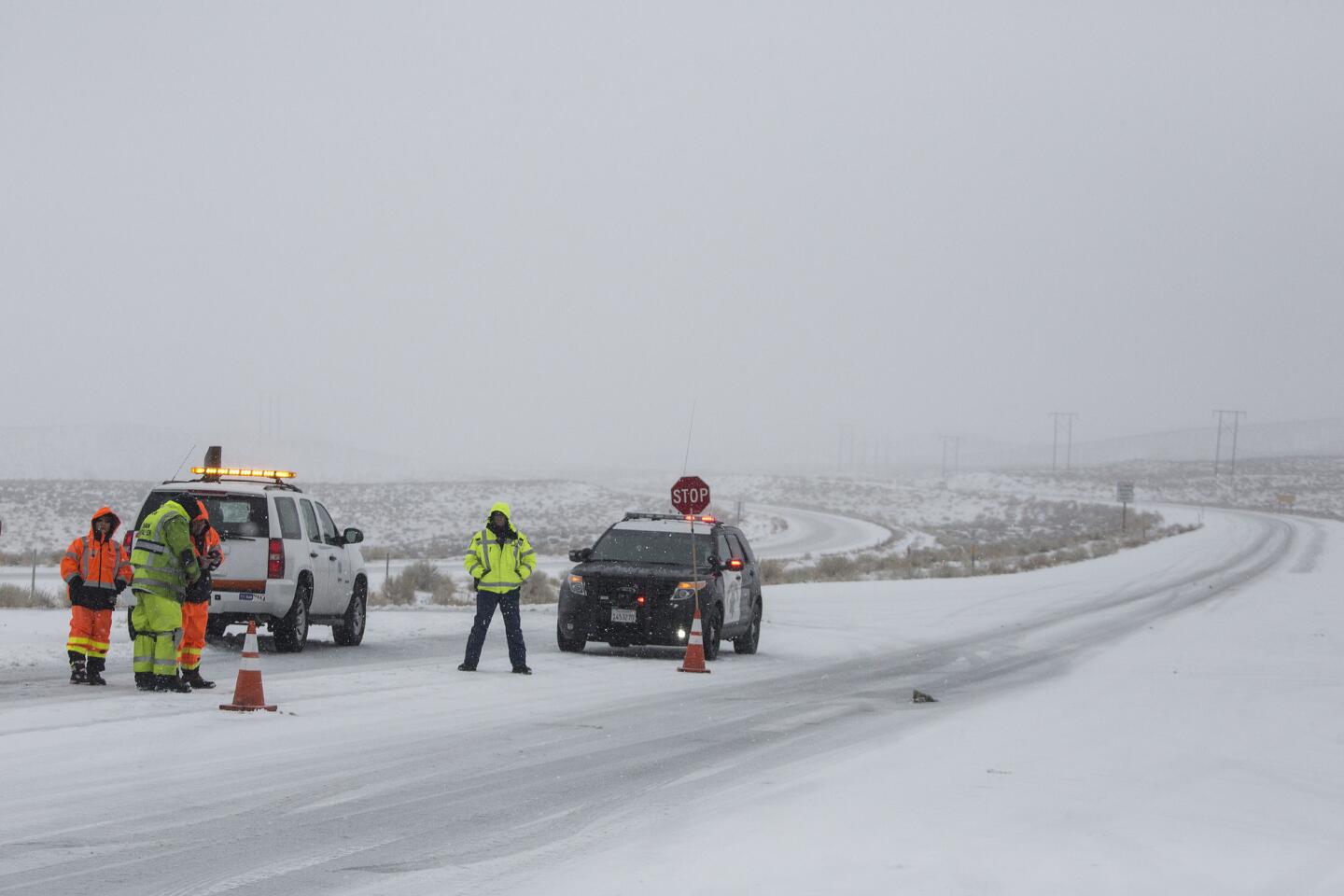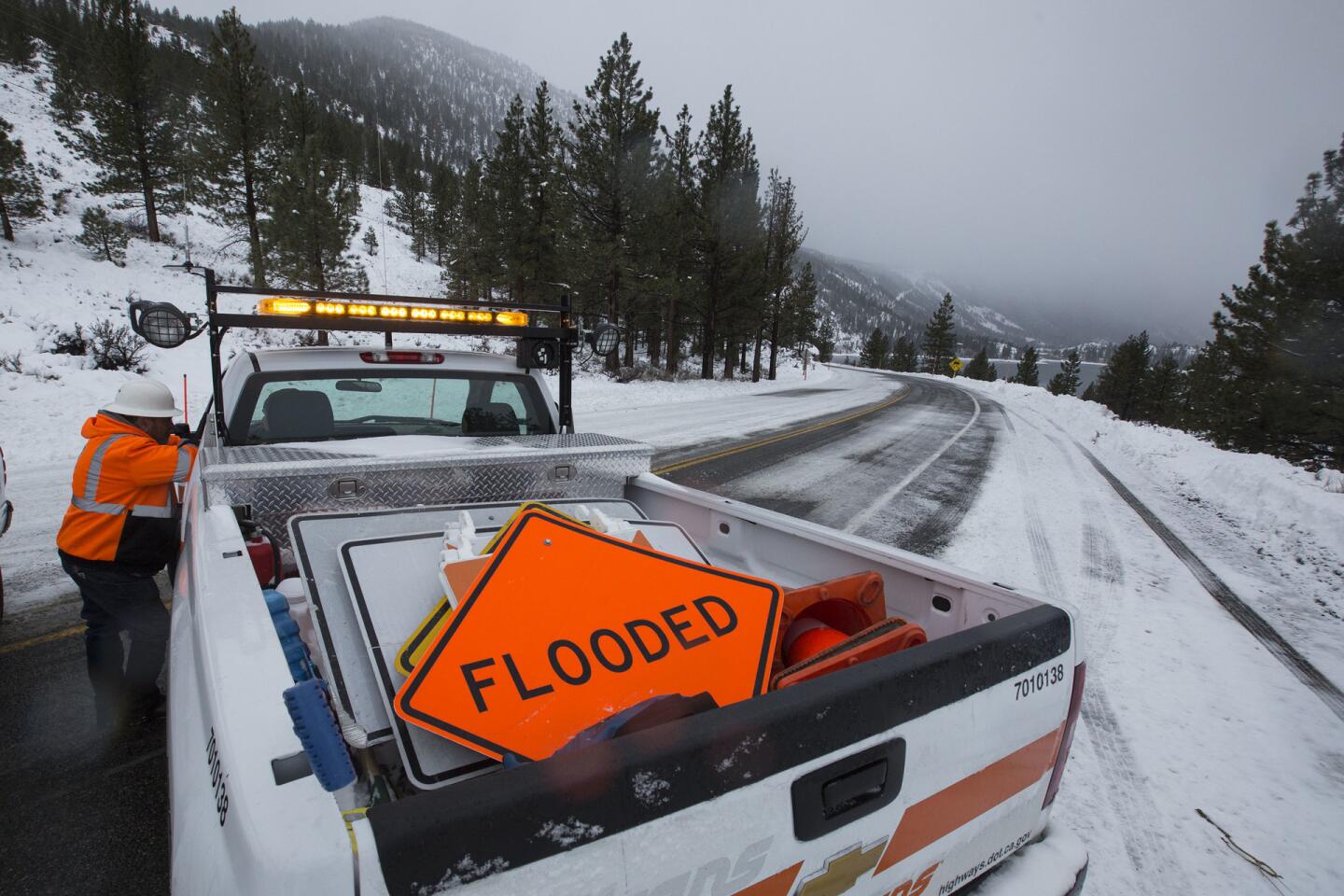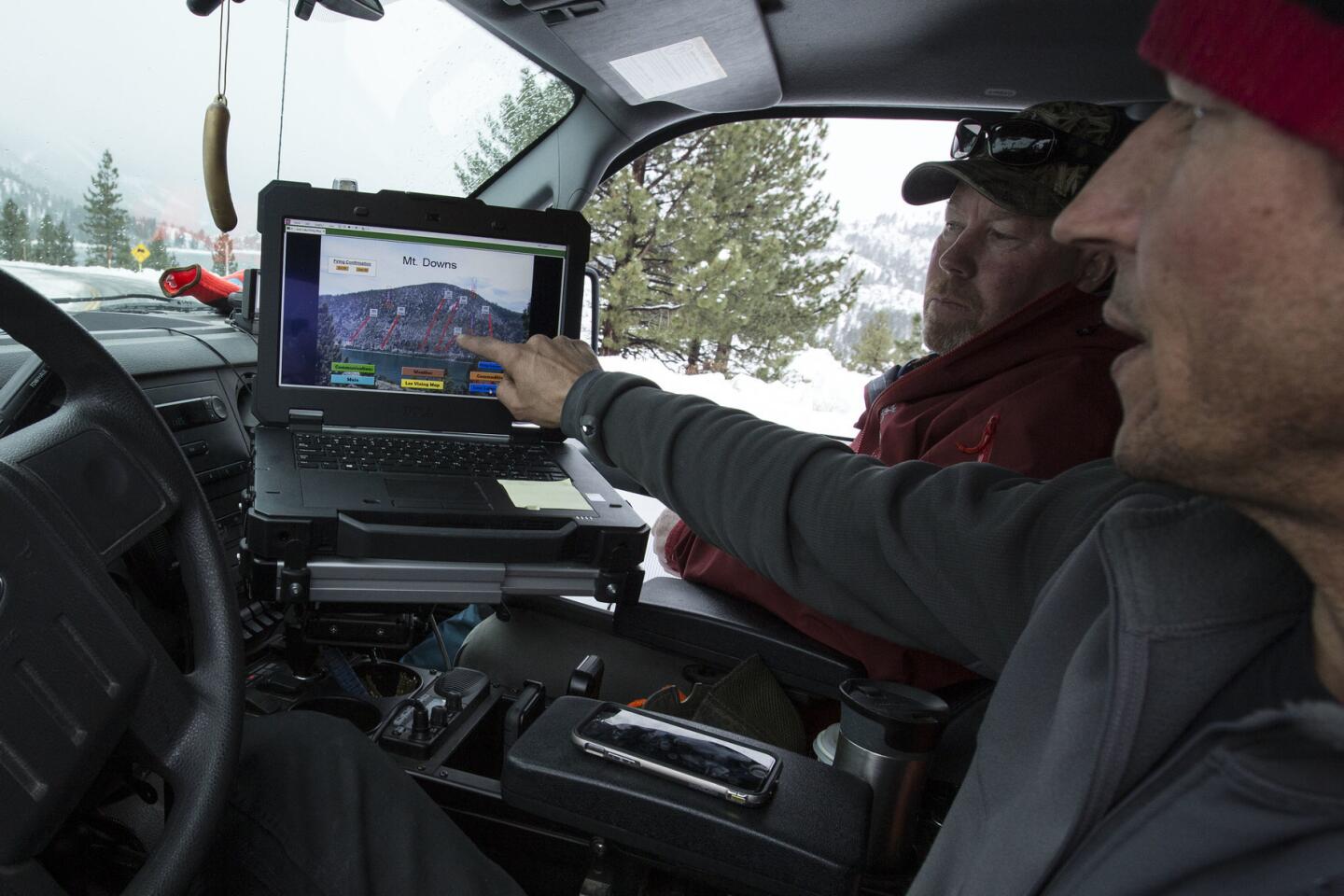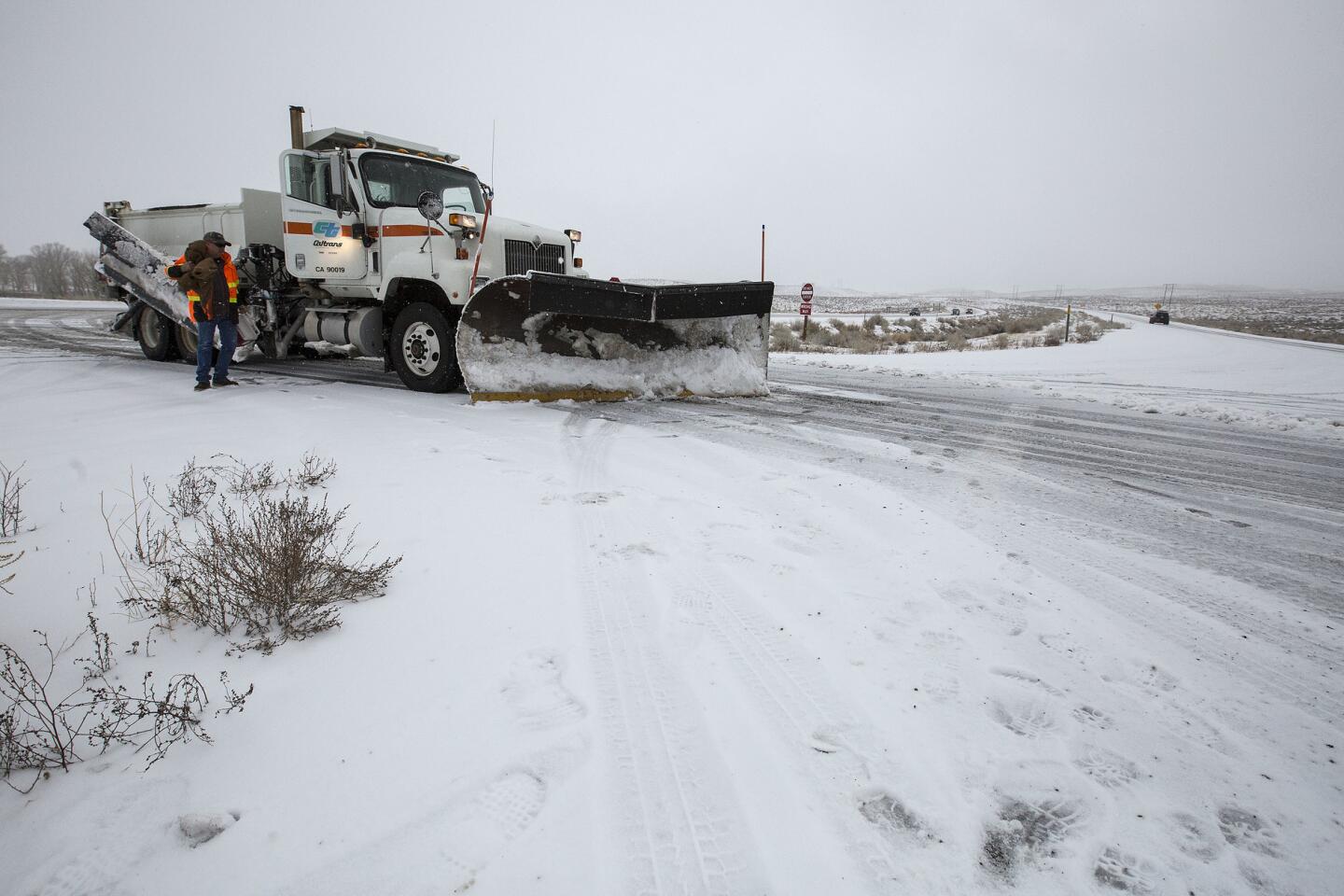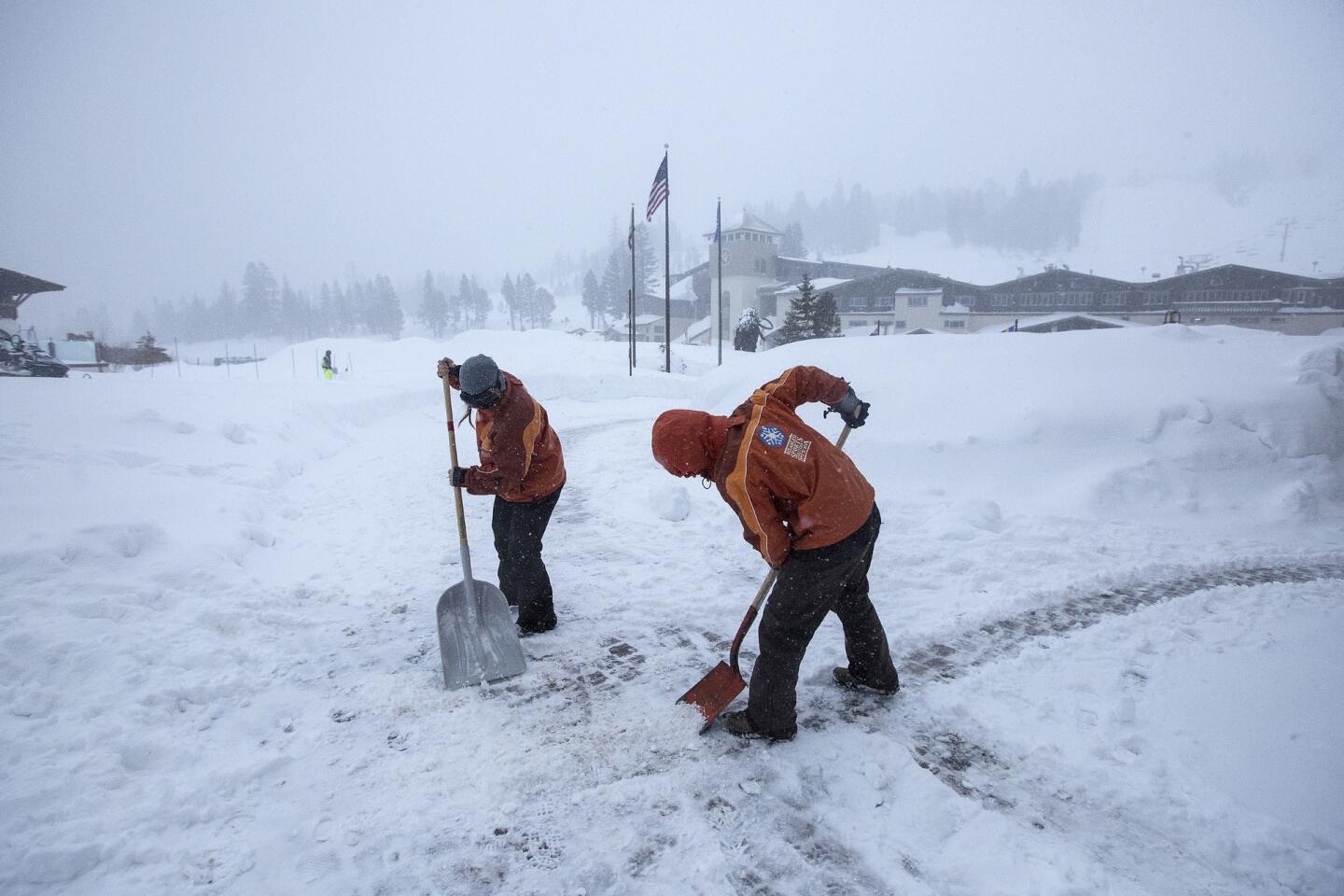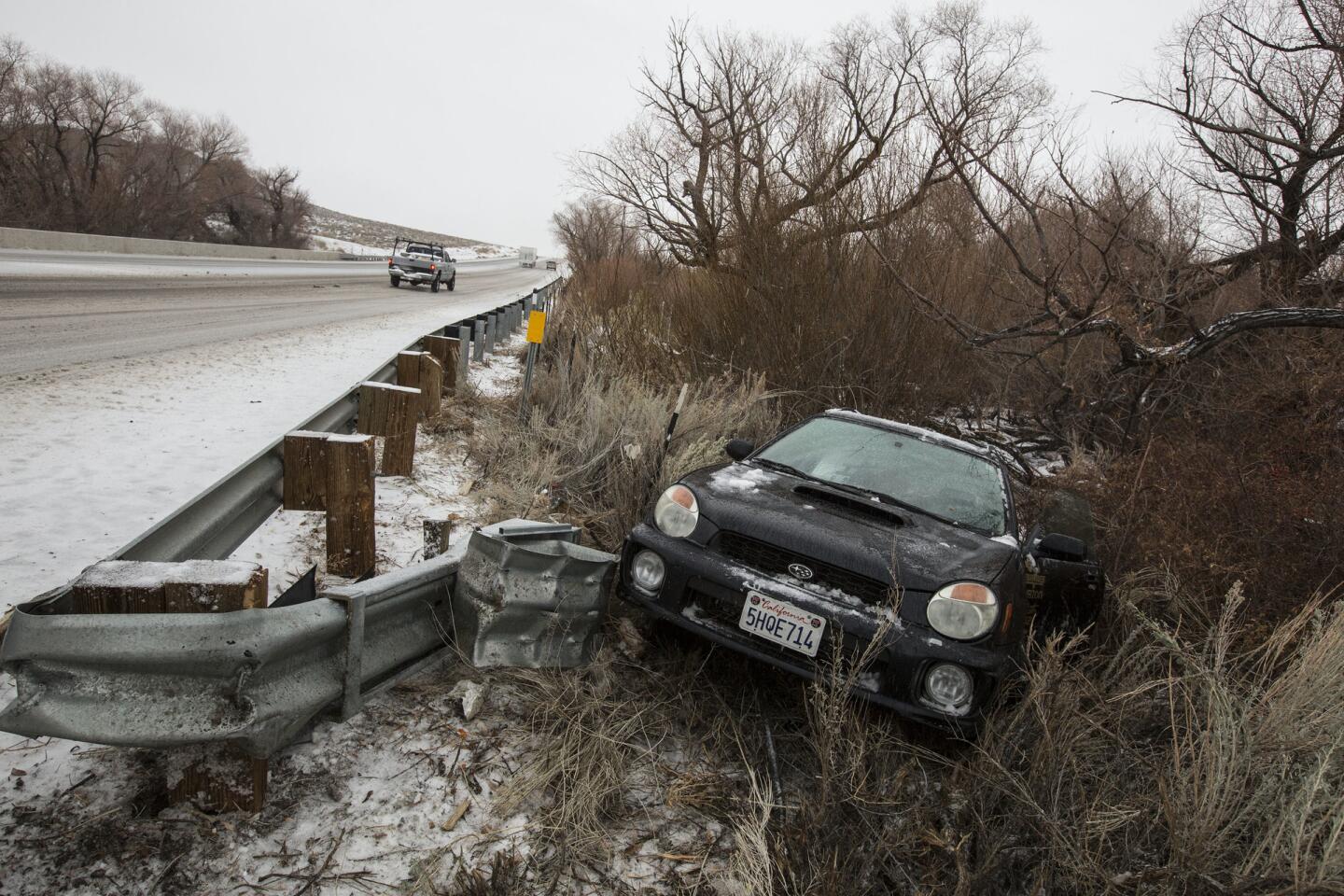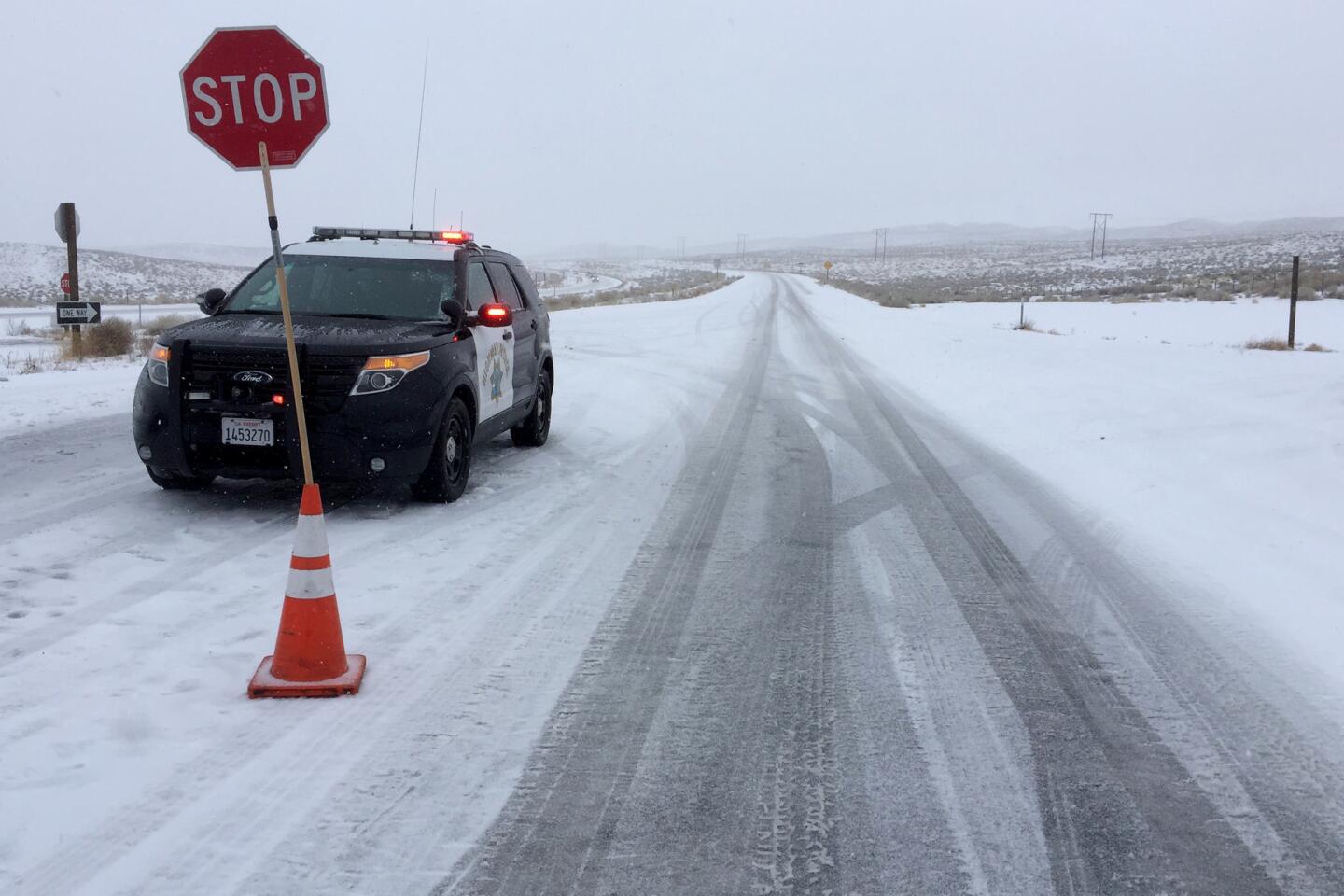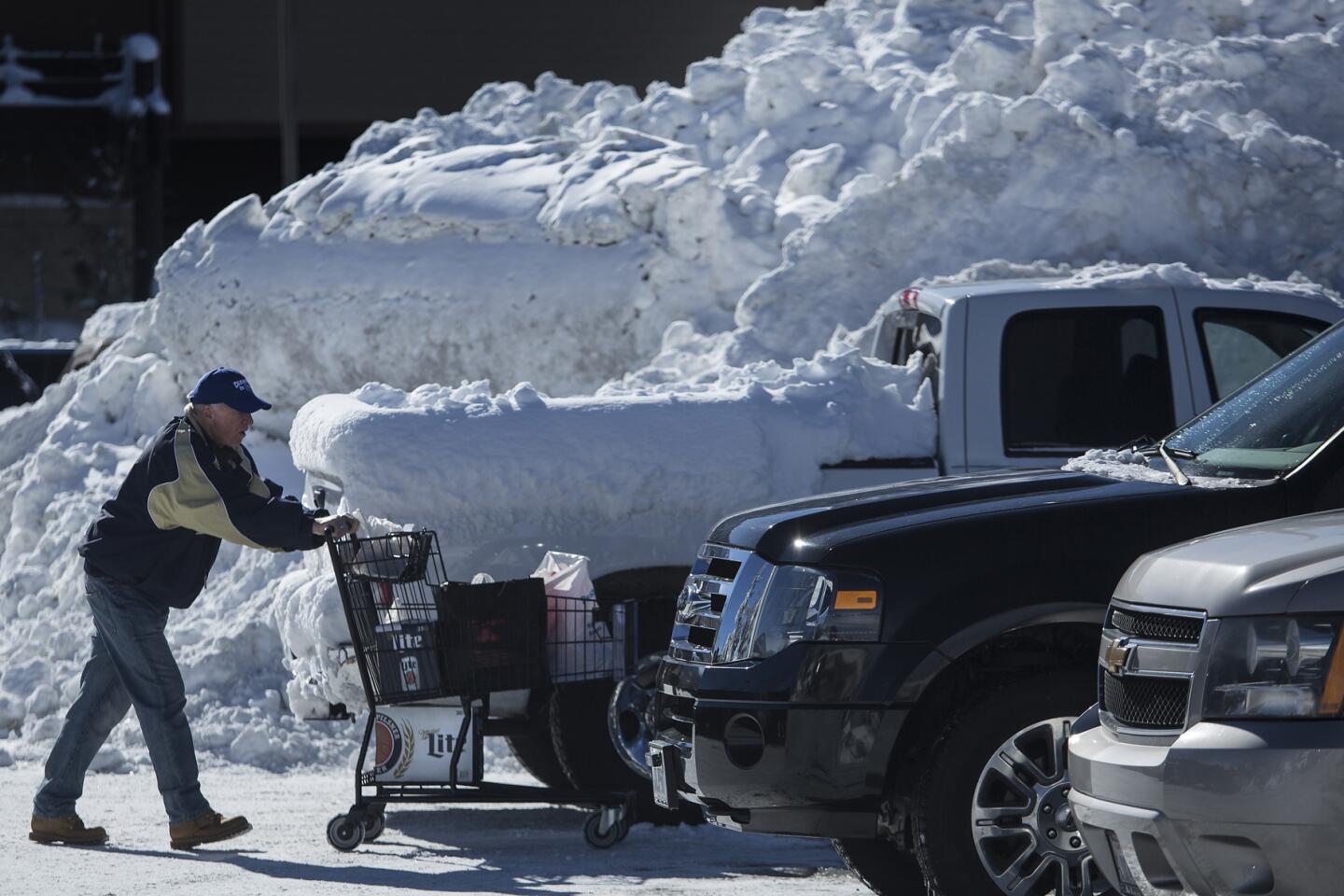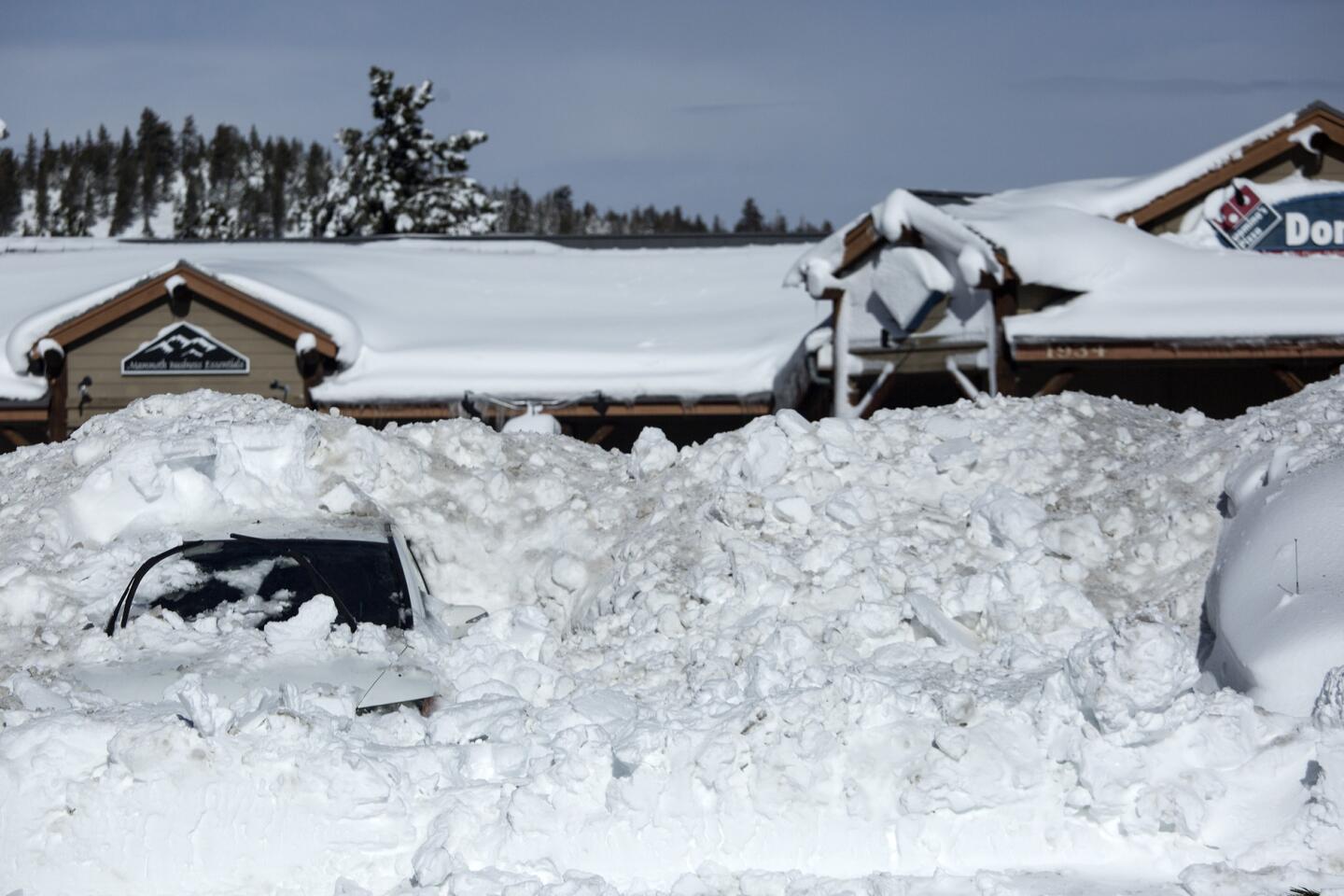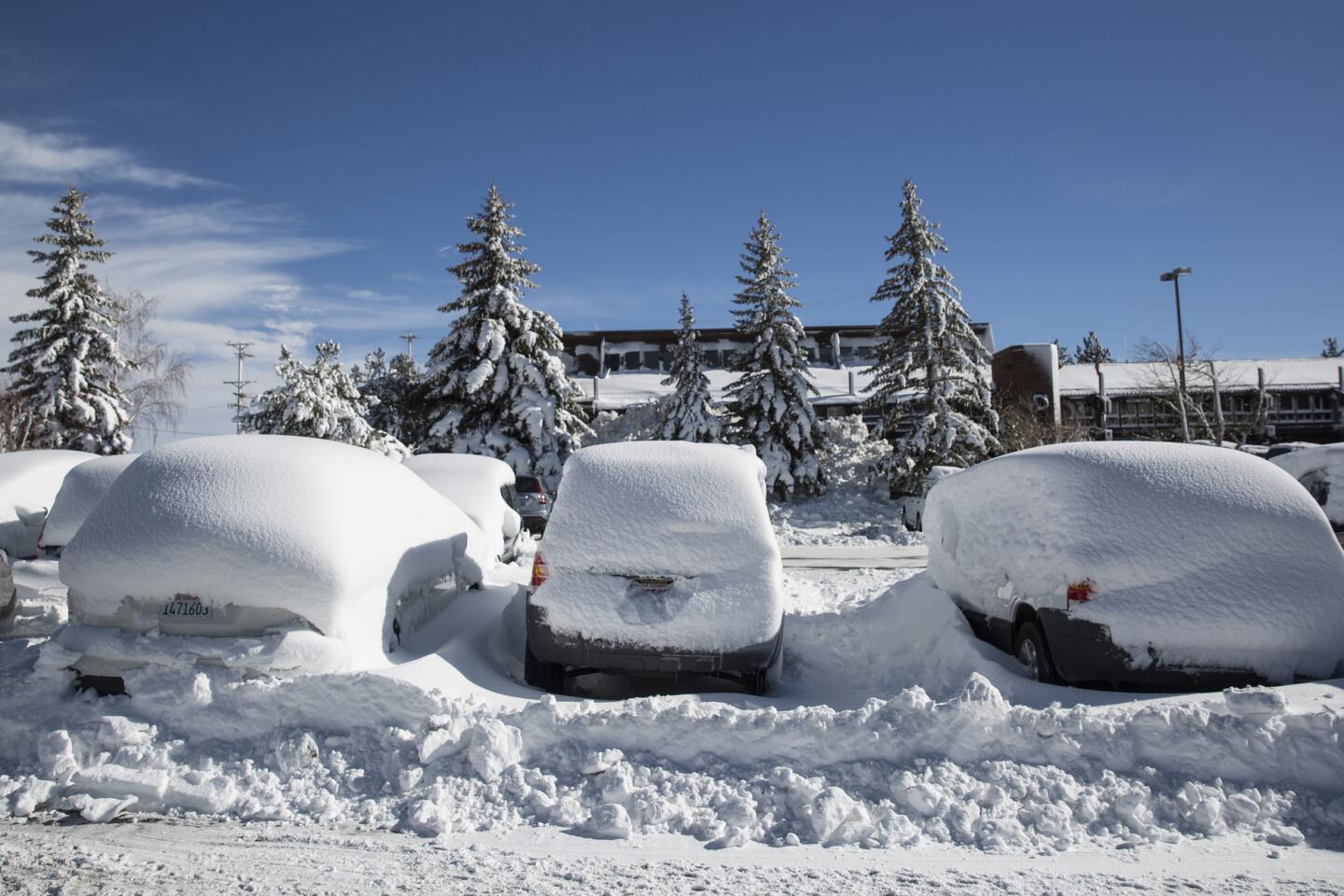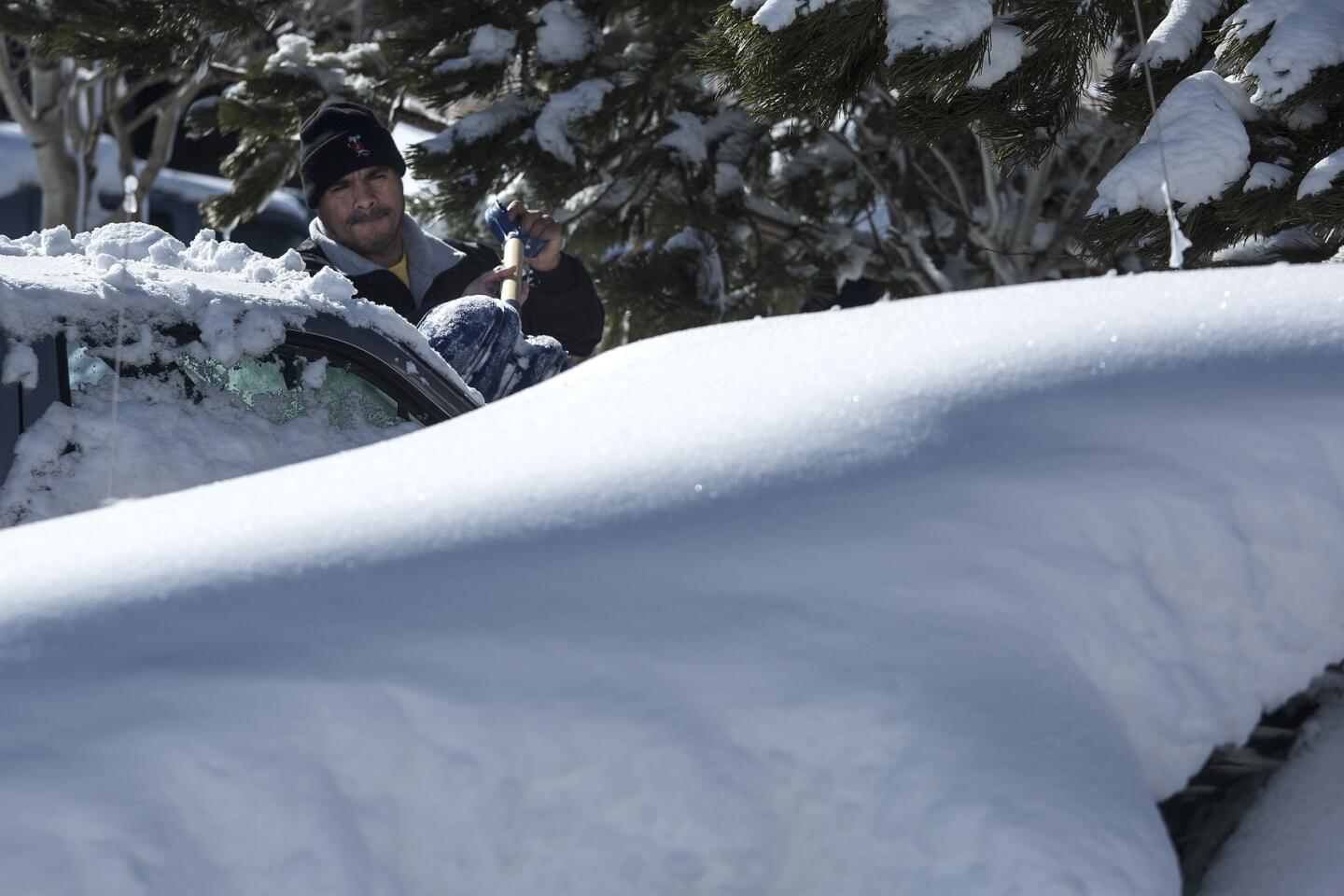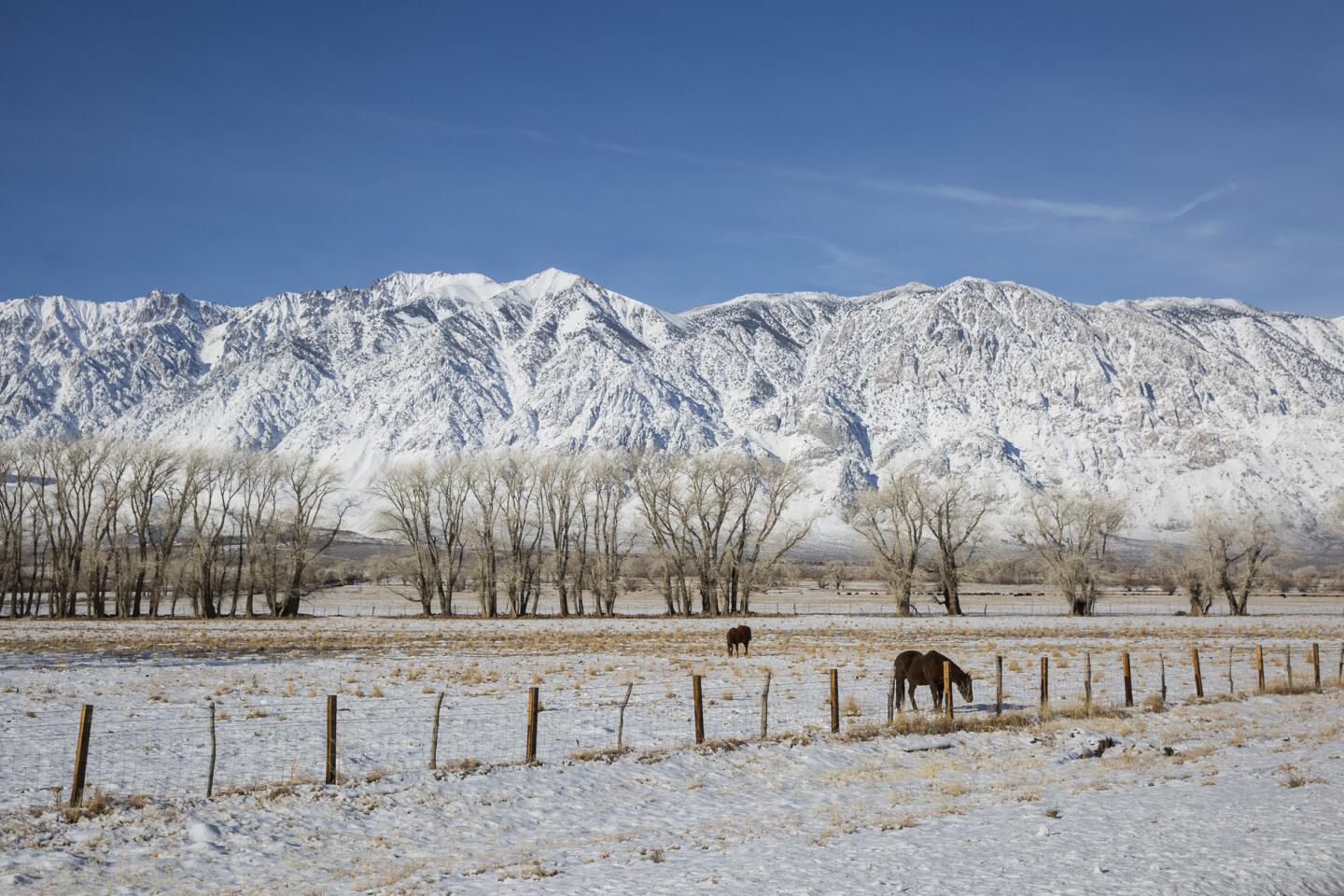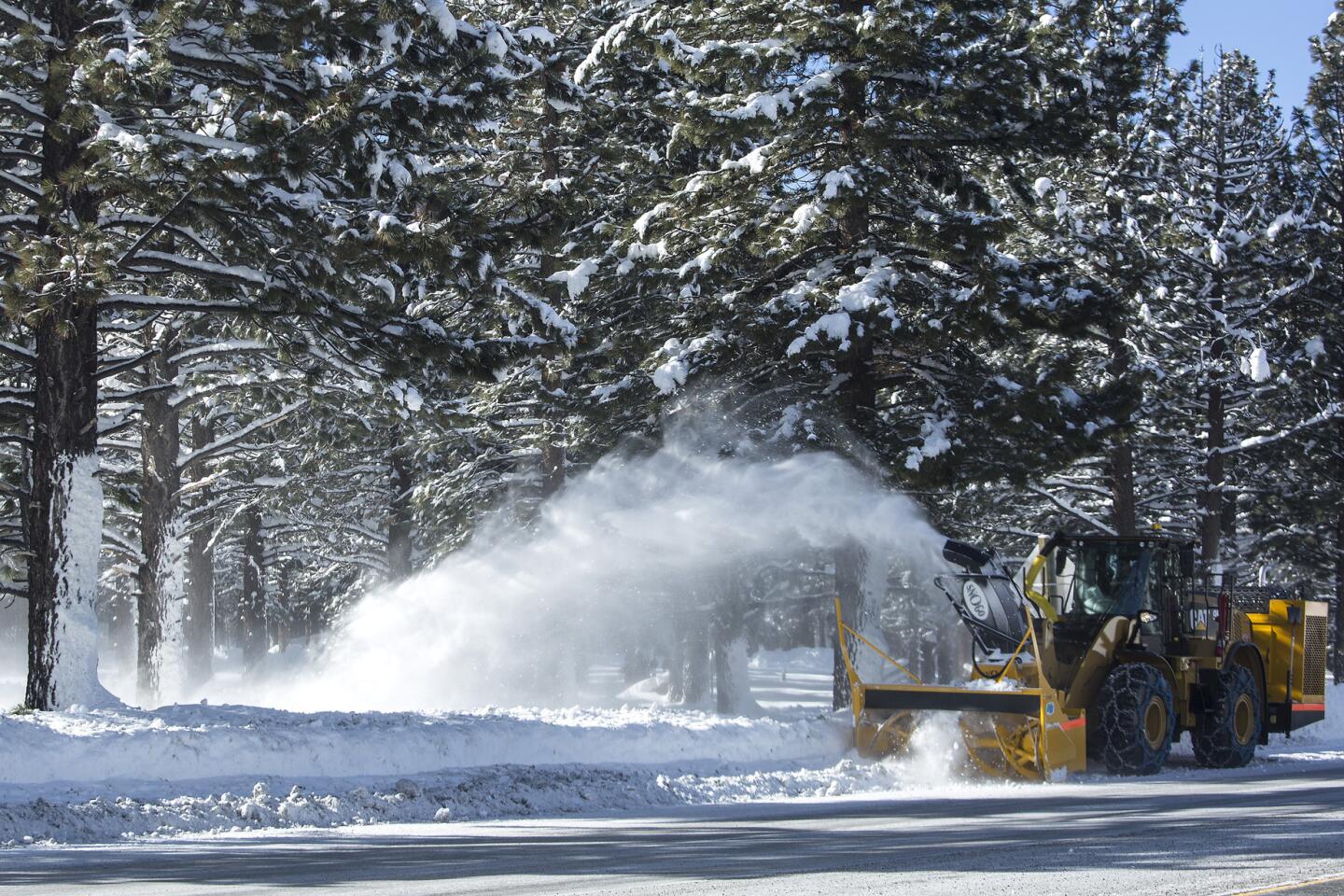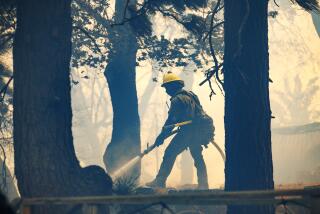Reporting from Mammoth Mountain — Rescuing skiers and backcountry trekkers is a life’s work for men like ski patrolman Cliff Klock and U.S. Forest Service emergency response expert Jeffrey Karl.
On Mammoth Mountain, a Sierra peak synonymous with snow, they also have a time-tested approach for dealing with avalanche hazards: They shoot at them with a 105-millimeter howitzer leased from the U.S. Army.
If Klock and Karl take you along on gun duty, be prepared to follow a bumpy route through whiteout conditions to a squat concrete and steel bunker perched halfway up the mountain that attracts about 1.3 million skier visits a year.
On Sunday, their mission was to blast slopes over snowy overhangs that had developed overnight and could fall, triggering avalanches.
As a lightning storm pummeled the surrounding countryside before dawn, they took the wraps off the World War II-era weapon, then set to work methodically checking its sights, barrel and mounts. They even kicked its tires.
Hinges groaned as Karl opened a heavy steel door to reveal a basement room known as the “wine rack.”
That’s because unarmed projectiles are stored horizontally in its walls like wine bottles.
Together, they assembled the shells and screwed in the detonators. Drawing on decades of records and years of experience with the forces that transform pile powder into dangerous unstable mounds, Klock planned to launch 15 rounds into the mountain about 300 miles north of Los Angeles, just off Highway 395.
1/67
Surfer and Huntington Beach lifeguard Jachin Hamborg watches the dramatic sky and waves after surfing following his lifeguarding shift at dusk at the Huntington Beach pier.
(Allen J. Schaben / Los Angeles Times) 2/67
A man is silhouetted against a dramatic sky at sunset while walking on the Huntington Beach pier.
(Allen J. Schaben / Los Angeles Times) 3/67
A pedestrian takes to flight crossing 4th Street in Santa Ana after heavy rain flooded the area.
(Allen J. Schaben / Los Angeles Times) 4/67
Snowplows clear Highway 18 during a storm on Jan. 12, 2017, in Running Springs.
(Gina Ferazzi / Los Angeles Times) 5/67
Jessica Pompa and Albert Arroyo make a snowman at Firehouse Park in Running Springs.
(Gina Ferazzi / Los Angeles Times) 6/67
Michelle Graves keeps an eye on the sky as she waits to cross Spring Street in downtown Los Angeles.
(Luis Sinco / Los Angeles Times) 7/67
Laurel Canyon Boulevard remained closed in both directions Thursday morning in the Hollywood Hills after part of a home’s concrete foundation tumbled down a hillside after a round of rainfall.
(Al Seib / Los Angeles Times) 8/67
News crews gather on Laurel Canyon Blvd, which remained closed in both directions Thursday morning in the Hollywood Hills when part of a home’s concrete foundation tumbled down a hillside after a round of rainfall.
(Al Seib / Los Angeles Times) 9/67
A pedestrian wades through a flooded 4th Street in Santa Ana.
(Allen J. Schaben / Los Angeles Times) 10/67
Traffic moved slowly on a snowy Highway 18 in the Running Springs area.
(Gina Ferazzi / Los Angeles Times) 11/67
Members of a film crew shelter under umbrellas as the rain comes down in front of L.A. City Hall.
(Luis Sinco / Los Angeles Times) 12/67
A pedestrian wades through a flooded 4th Street in Santa Ana carrying her daughter.
(Allen J. Schaben / Los Angeles Times) 13/67
A man crossing the street gets caught in a heavy burst of rain on 4th Street in Santa Ana.
(Allen J. Schaben / Los Angeles Times) 14/67
A Guernville resident walks down steps toward the foodwater surrounding his home.
(Justin Sullivan / Getty Images) 15/67
A portable toilet is submerged in floodwaters at a vineyard in Forestville. (Justin Sullivan / Getty Images)
16/67
A woman walks through water from a king tide that flooded onto the Embarcadero in San Francisco on Wednesday.
(Jeff Chiu / Associated Press) 17/67
Caltrans worker Brad Larson is whipped by high winds on Tuesday as he mans a checkpoint closing all northbound traffic at U.S. 395 and State Route 203 near Mammoth Lakes.
(Brian van der Brug / Los Angeles Times) 18/67
Caltrans worker Mark Reistetter tells a Reno-bound truck driver his options at a checkpoint closing all northbound traffic at U.S. 395 and State Route 203 near Mammoth Lakes.
(Brian van der Brug / Los Angeles Times) 19/67
More than 100 trucks line Main Street in Lone Pine on Tuesday, stranded as U.S. 395 closed to high-profile vehicles in both directions because of high winds.
(Brian van der Brug / Los Angeles Times) 20/67
A Mammoth Mountain employee directing traffic is dwarfed by a snow removal vehicle on Minaret Road leading to the Mammoth Mountain ski area in Mammoth Lakes.
(Brian van der Brug / Los Angeles Times) 21/67
A tow truck driver pulls a pickup truck out of a snowbank in the median of U.S. 395 near Mammoth Lakes.
(Brian van der Brug / Los Angeles Times) 22/67
Clouds drift over the Owens Valley in a view from above Round Valley near Bishop.
(Brian van der Brug / Los Angeles Times) 23/67
Emma Soriano jumps in a puddle on the Manhattan Beach Pier after posing for pictures for her dad.
(Jay L. Clendenin / Los Angeles Times) 24/67
With the Manhattan Beach Pier in the distance, surfers scan the waves of Hermosa Beach.
(Jay L. Clendenin / Los Angeles Times) 25/67
Morgan Harris of Hermosa Beach rides home along The Strand after a couple of hours of surfing south of Hermosa Beach.
(Jay L. Clendenin / Los Angeles Times) 26/67
A biker at Hermosa Beach, where people were dealing with a lingering rainstorm.
(Jay L. Clendenin / Los Angeles Times) 27/67
A break in a series of storms moving across California highlights the snow-covered White Mountains looming over U.S. Highway 395 in Crowley Lake.
(Brian van der Brug / Los Angeles Times) 28/67
Traffic moves slowly at the Donner Pass Road exit on snowy Interstate 80 in Soda Springs.
(Gary Coronado / Los Angeles Times) 29/67
The Green Church, a beloved landmark along U.S. 395, is partly obscured by snow during a break in a series of storms in the Eastern Sierra Nevada near Mammoth Lakes.
(Brian van der Brug / Los Angeles Times) 30/67
Snow falls along Interstate 80 at Exit 184 in Truckee.
(Gary Coronado / Los Angeles Times) 31/67
A break in a series of storms in the Eastern Sierra Nevada highlights the snow-covered White Mountains near Convict Lake.
(Brian van der Brug / Los Angeles Times) 32/67
A plow removes freshly fallen snow along Donner Pass Road in Soda Springs, Calif.
(Gary Coronado / Los Angeles Times) 33/67
On a snowy day, a sign makes it clear that chains are required on this stretch of Interstate 80 in Truckee.
(Gary Coronado / Los Angeles Times) 34/67
Snow-covered mountains provide a dramatic backdrop for Crowley Lake. (Brian van der Brug / Los Angeles Times)
35/67
Jack Ryan and his family came out to see firsthand water cresting the south bank of the American River, flooding American River Parkway in Sacramento’s Discovery Park.
(Gary Coronado / Los Angeles Times) 36/67
Folsom Lake continues to rise as the Folsom reservoir releases water into the American River.
(Gary Coronado / Los Angeles Times) 37/67
Caltrans worker Wendy Payne clears debris after heavy rains caused flooding along Highway 89 near Truckee. (Gary Coronado / Los Angeles Times)
38/67
Traffic is backed up while CalTrans removes falling rocks and mud which closed one westbound lane along Interstate 80 east of Truckee, near Floriston, Calif.
(Gary Coronado / Los Angeles Times) 39/67
Wendy Payne of CalTrans clears debris along Highway 89 near Truckee.
(Gary Coronado / Los Angeles Times) 40/67
Christian Ochoa of CalTrans removes debris to allow water to flow into the Truckee River. (Gary Coronado / Los Angeles Times )
41/67
Park Ranger Cullen Tucker walks across a bridge during a rain storm on the Merced River in Yosemite National Park.
(Gary Kazanjian / Associated Press) 42/67
Resident June Barnard checks the level of the Truckee River at Bridge 11 along Highway 89. (Gary Coronado / Los Angeles Times)
43/67
Mammoth Mountain ski patrolman Cliff Klock, left, and Forest Service member Jeff Karl fire a 105-millimeter howitzer on Sunday to mitigate avalanche paths at the top of the ski area in Mammoth Lakes, Calif.
(Brian van der Brug / Los Angeles Times) 44/67
Mammoth Mountain ski patrolman Cliff Klock prepares to load a 105-millimeter shell into the breach of a 1943 howitzer.
(Brian van der Brug / Los Angeles Times) 45/67
Heavy rains and ice dams cause flooding along Donner Pass Road in high Sierra Nevada, Soda Springs, CA, Jan. 8, 2017. (Gary Coronado / Los Angeles Times) (Gary Coronado / Los Angeles Times)
46/67
A CHP officer proclaims “aw man!” as he is photographed after becoming stuck in heavy snow in the median of US 395 near Crowley Lake as snow falls on the Eastern Sierra Nevada.
(Brian van der Brug / Los Angeles Times) 47/67
Monique Long hauls sandbags from her SUV to make a barrier to divert the rain and melting snow from flooding her garage, while her friend Jenna Shropshire, right, helps shovel snow, in Truckee, Calif.
(Gary Coronado / Los Angeles Times) 48/67
Mitch Brown operates a skid steer removing snow so water can flow freely preventing flooding in Soda Springs, Calif.
(Gary Coronado / Los Angeles Times) 49/67
Skiers coming off the mountain endured rainy conditions all day at the Sugar Bowl Ski Resort, in Norden, Calif.
(Gary Coronado / Los Angeles Times) 50/67
The train passes under an avalanche tunnel near the Sugar Bowl Ski Resort, in Norden, Calif., on Jan. 7, 2017.
(Gary Coronado / Los Angeles Times) 51/67
Caltrans snowplows clear heavy snow from the northbound lanes oh highway 395 as snow falls on the Eastern Sierra near Sherwin Summit, Calif.
(Brian van der Brug / Los Angeles Times) 52/67
A sign at Wawona and Glacier Point roads alerts visitors that roads into Yosemite Valley in Yosemite National Park are closed. (Silvia Flores / Associated Press)
53/67
Actor Max Baer Jr., left, talks with emergency responders after flipping over his SUV in white-out conditions while traveling northbound on U.S. 395 near Crowley Lake as heavy snow falls on the Eastern Sierra Nevada, Calif. The star of The Beverly Hillbillies said his was not injured.
(Brian van der Brug / Los Angeles Times) 54/67
A snowcat moves snow in near whiteout conditions on the slopes at Mammoth Mountain.
(Brian van der Brug / Los Angeles Times) 55/67
A CHP officer maintains a checkpoint to ensure vehicles are compliant with R2 chain restrictions on the northbound 395 just north of Bishop as snow falls on the Eastern Sierra Nevada.
(Brian van der Brug / Los Angeles Times) 56/67
Caltrans crews have a road-flooded sign in case of heavy rain and snow near the Eastern Sierra Nevada town of June Lake, Calif.
(Brian van der Brug / Los Angeles Times) 57/67
Caltrans avalanche crew members Sky Greytak, right, and Pat Brannen, left, prepare to set off explosive charges remotely from a laptop during avalanche control operations near the Eastern Sierra Nevada town.
(Brian van der Brug / Los Angeles Times) 58/67
Caltrans snowplow operator Mike Morgan prepares to turn his plow around after making loops on the 395 between Bishop and Tom’s Place, a route he drives 12 hours a day clearing heavy snow in the Eastern Sierra.
(Brian van der Brug / Los Angeles Times) 59/67
Mammoth Mountain employees clear paths as snow falls lightly Saturday morning.
(Brian van der Brug / Los Angeles Times) 60/67
A car spun out and off the road just outside Bishop in sloppy road conditions as the snowfall level fell below 5000.
(Brian van der Brug / Los Angeles Times) 61/67
California Highway Patrol has established a chain checkpoint near Bishop.
(Brian van der Brug / Los Angeles Times) 62/67
Supermarket shoppers stock up before the big storm. (Brian van der Brug / Los Angeles Times)
63/67
Snow covers vehicles in a parking lot in Mammoth Lakes.
(Brian van der Brug / Los Angeles Times) 64/67
Snow covers vehicles in a parking lot in Mammoth Lakes. (Brian van der Brug / Los Angeles Times)
65/67
Jorge Gaydam digs out his truck in a parking lot.
(Brian van der Brug / Los Angeles Times) 66/67
Snow blankets the Sierra Nevada crest north of Bishop along U.S. Highway 395 in Round Valley.
(Brian van der Brug / Los Angeles Times) 67/67
A plow removes snow from state Highway 203 in Mammoth Lakes.
(Brian van der Brug / Los Angeles Times) Around 5:30 a.m., Klock said, “All right, let’s start shooting.”
Wind and snow blew into the cramped room when the men opened a garage-style door. Then they wheeled the howitzer around on its wheels, pointing the barrel toward the howling darkness beyond.
“This gun is so precise it’s like shooting at point blank range,” Klock said. “I could hit a rock at 1,000 yards.”
But at that moment he was relying on carefully calibrated coordinates to fire on the first target on his list: a popular ski run that is also a potential avalanche path.
Klock yelled, “Fire!” and the fearsome gun roared, lifting off the ground. A few seconds later, the whump of the impacting shell drifted back.
Ear muffs over ear plugs minimized the blast effects of all 15 rounds fired at target areas that were off-limits to the public.
The howitzer is only used when conditions warrant, which differ year to year, Mammoth Mountain officials said. It was rarely needed, for example, during the drought-parched years of 2011 through 2014.
A howitzer once again became a vital component of the Mammoth Mountain operation in the snowy winter of 2015, officials said.
Decades ago, the military provided Mammoth and other ski areas with old-style recoilless rifles for controlling avalanches. But ammunition became hard to get, and in 2003 the Army decided to swap them for two-wheeled, truck-towed M-119 A-1 howitzers, officials said.
A year later, however, the U.S. military reclaimed the howitzers it had leased for avalanche control, including the one at Mammoth Mountain, so that the weapons could be used by troops fighting in Iraq and Afghanistan.
The howitzer recalled from Mammoth Mountain in 2004 never came back. Instead, the Army replaced it later with the vintage weapon that saw action Sunday.
The Forest Service and Mammoth Mountain, which has received 10 feet of fresh snow over the last week, has one of the world’s most respected programs for avalanche prevention and warning.
But the staff had their hands full Sunday because of unpredictable weather associated with this weekend’s atmospheric river event — a brew of warm torrential rains and heavy snow — and the surging popularity of winter recreation at the ski area.
Mammoth Mountain officials decided at 11 a.m. Sunday to shut down the ski area because lightning strikes made it impossible to continue operating.
As a result, Klock and Karl would never get to ski the fruits of their bombardment.
“As great as that gun is,” Klock said. “It can’t do anything about lightning.”
louis.sahagun@latimes.com
MORE ON THE STORMS:
How much rain did we get? Ask the iRain app, created at UC Irvine
Skiers and snowboarders are inundating resorts, paying higher lift prices
With snow piling up in the Sierra, what will it take to end California’s drought?

